|
|

|
Day 18, Wednesday 5 December
Comfortable……..Perhaps feeling too relaxed at Katima Hotel now that this tour is drawing to a close, we make a pig’s meal of getting set for what must be another busy day. However, we must get today’s site list right as this really must be the last day in Roi Et Province. For the pig’s meal, we don’t need to leave the room but it’s well after 10.30am before we’re packed and ready to leave our comfortable surroundings once more.
Chedi Maha Mongkol Bua……..Chedi Maha Mongkol Bua is located 23 km northwest of Roi Et City in the sub district of Nong Waeng and its already caused disagreement as the whether it should be the first site visit of the day. Confusion then continues as I fail to locate it on Google Map. Katoon is sure she’s seen a sign to it and heads off in that direction. Finally, we locate it on the right of the ring road 232 heading clockwise, having asked for directions the old fashion way. Curious, I log the current location which says we’ve arrived at the Auspicious Lotus Pagoda. Well, that’s helpful isn’t it?
Comfortable……..Perhaps feeling too relaxed at Katima Hotel now that this tour is drawing to a close, we make a pig’s meal of getting set for what must be another busy day. However, we must get today’s site list right as this really must be the last day in Roi Et Province. For the pig’s meal, we don’t need to leave the room but it’s well after 10.30am before we’re packed and ready to leave our comfortable surroundings once more.
Chedi Maha Mongkol Bua……..Chedi Maha Mongkol Bua is located 23 km northwest of Roi Et City in the sub district of Nong Waeng and its already caused disagreement as the whether it should be the first site visit of the day. Confusion then continues as I fail to locate it on Google Map. Katoon is sure she’s seen a sign to it and heads off in that direction. Finally, we locate it on the right of the ring road 232 heading clockwise, having asked for directions the old fashion way. Curious, I log the current location which says we’ve arrived at the Auspicious Lotus Pagoda. Well, that’s helpful isn’t it?
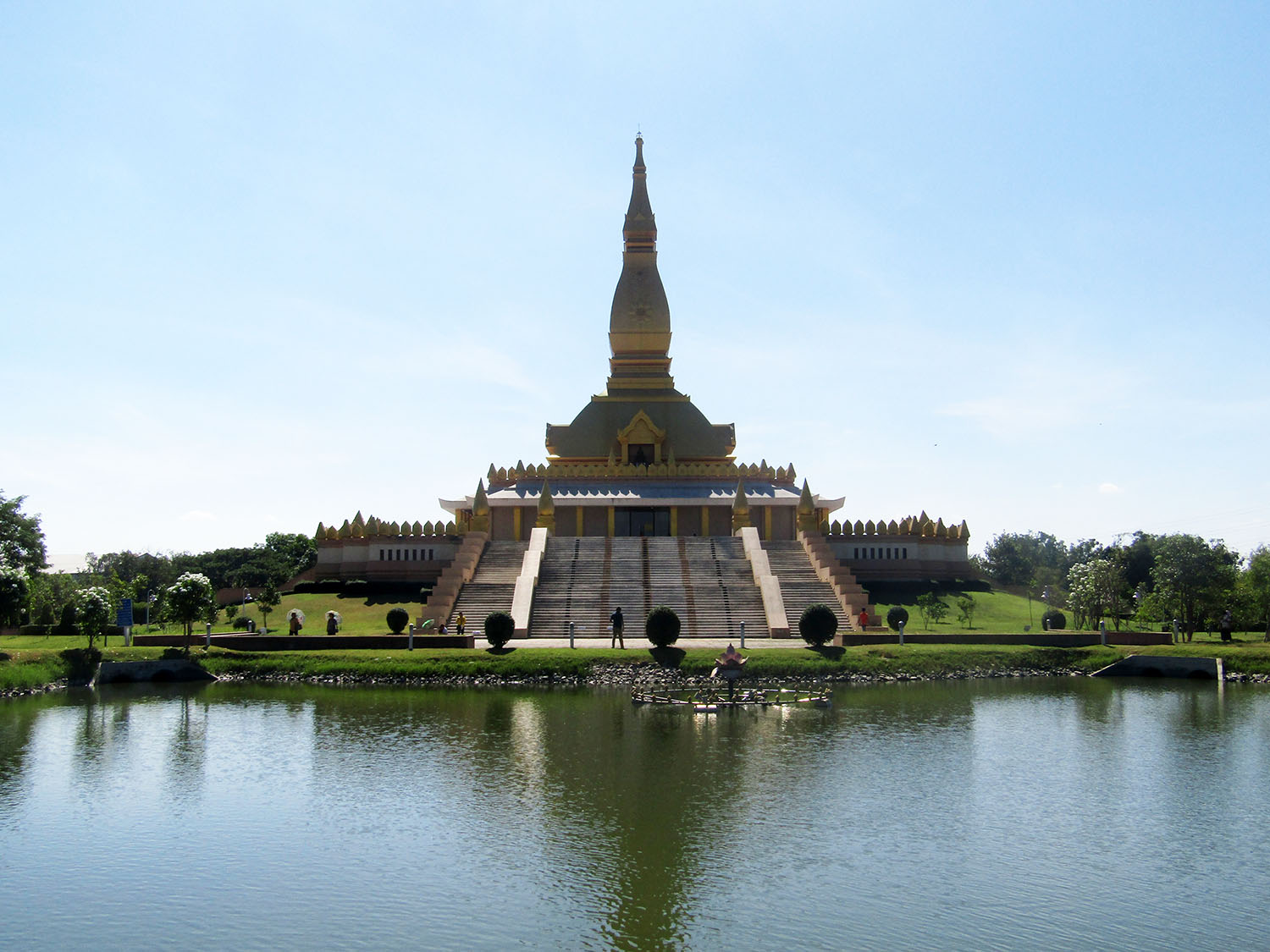
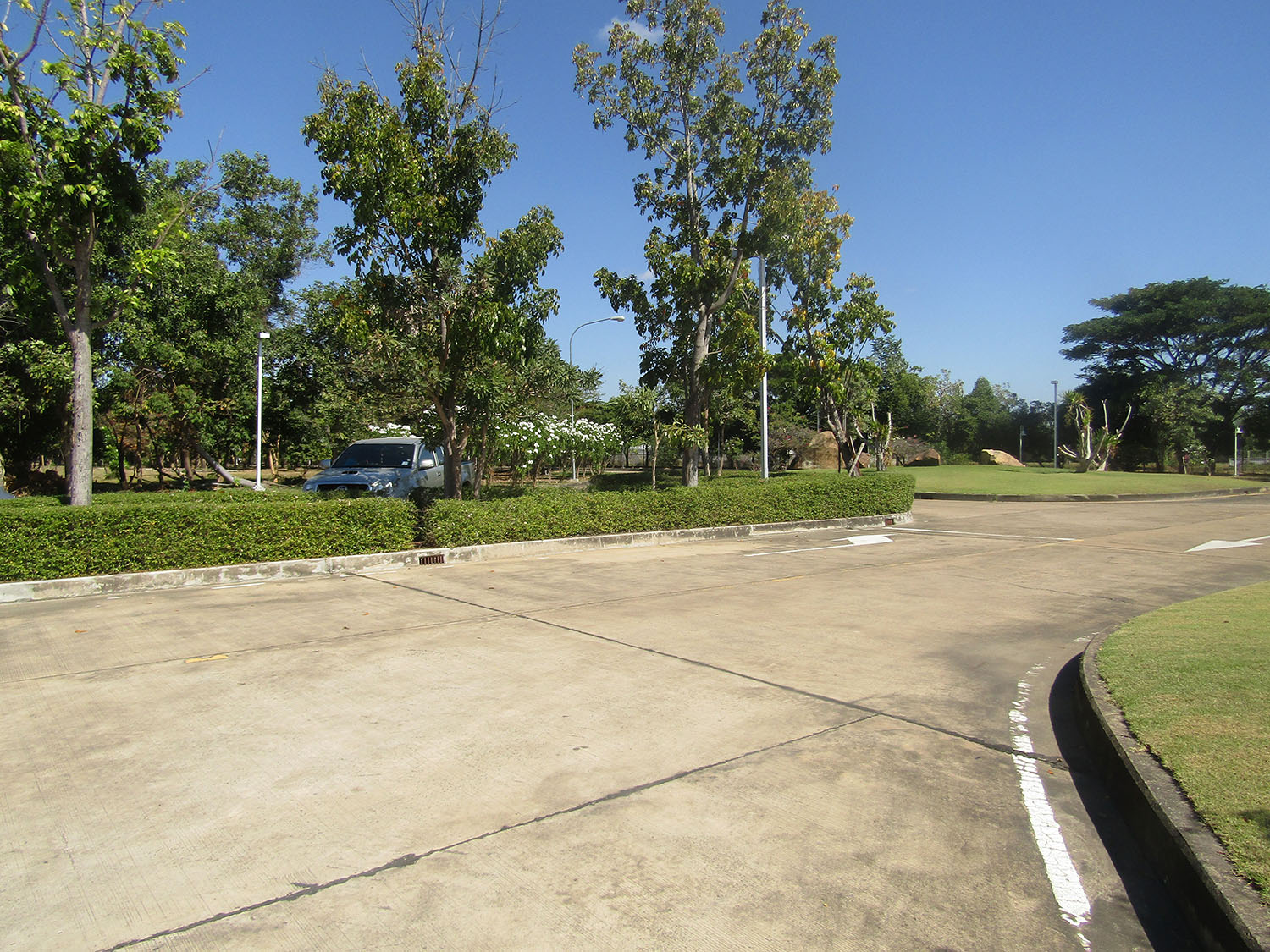
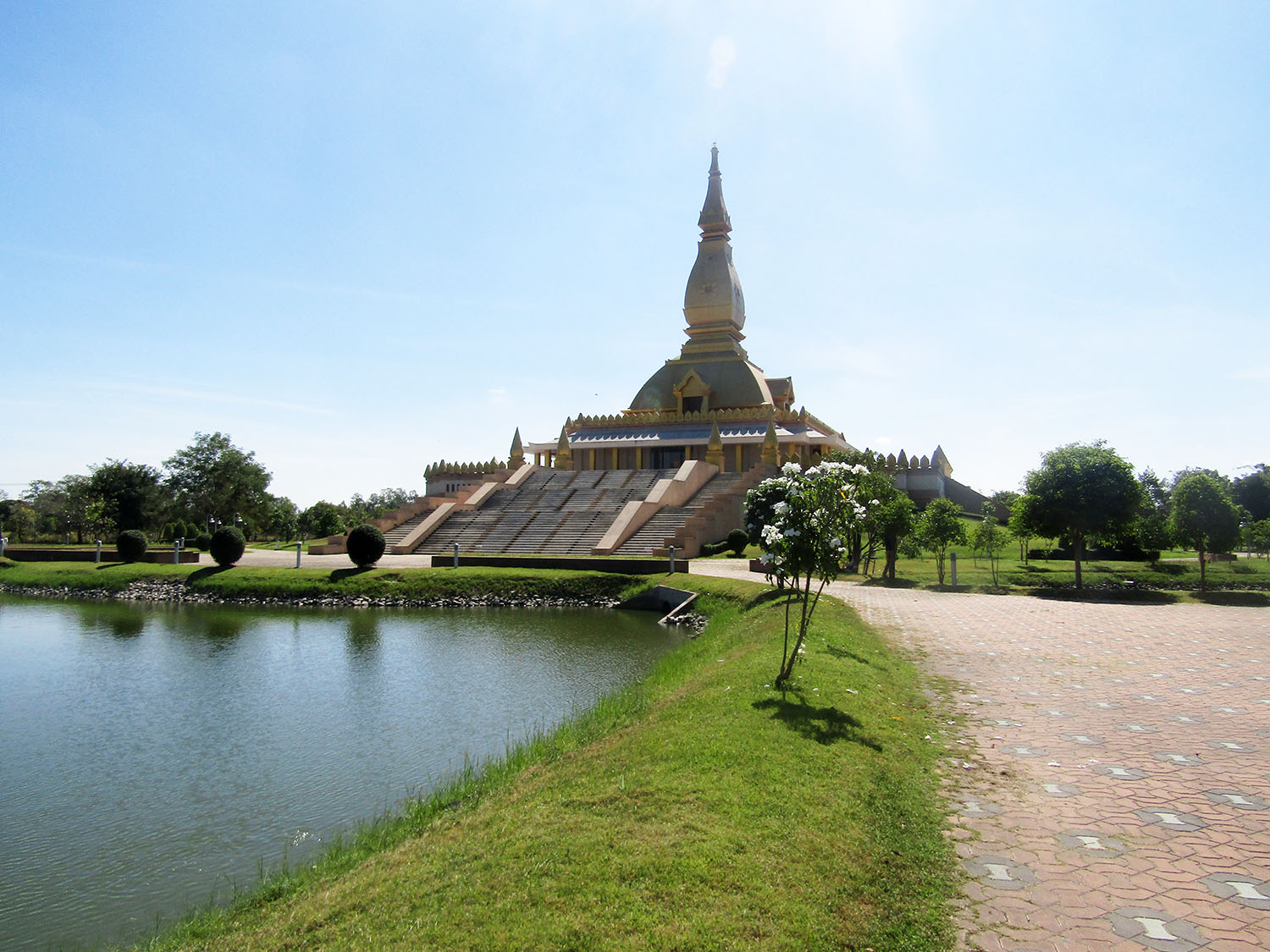
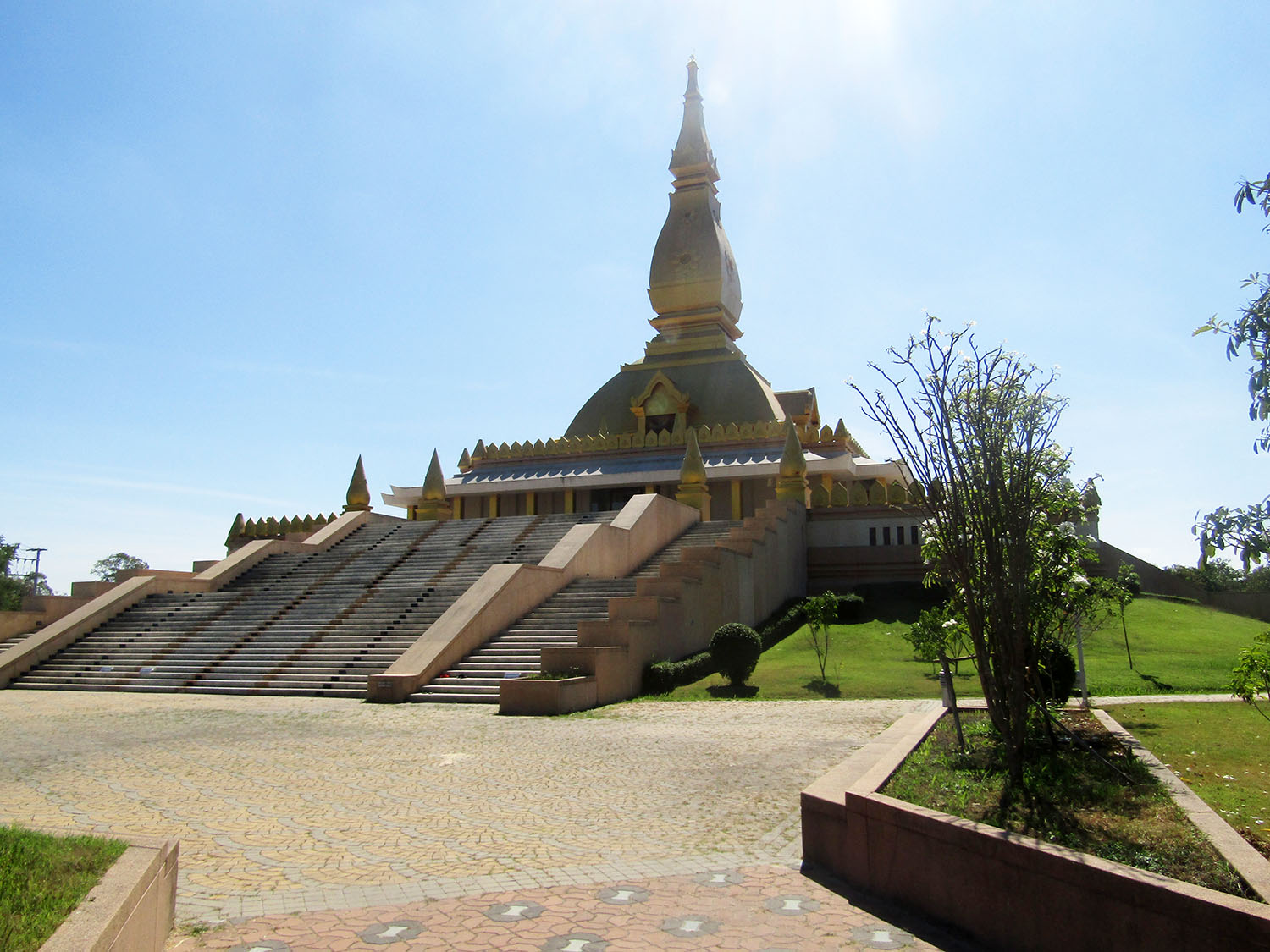
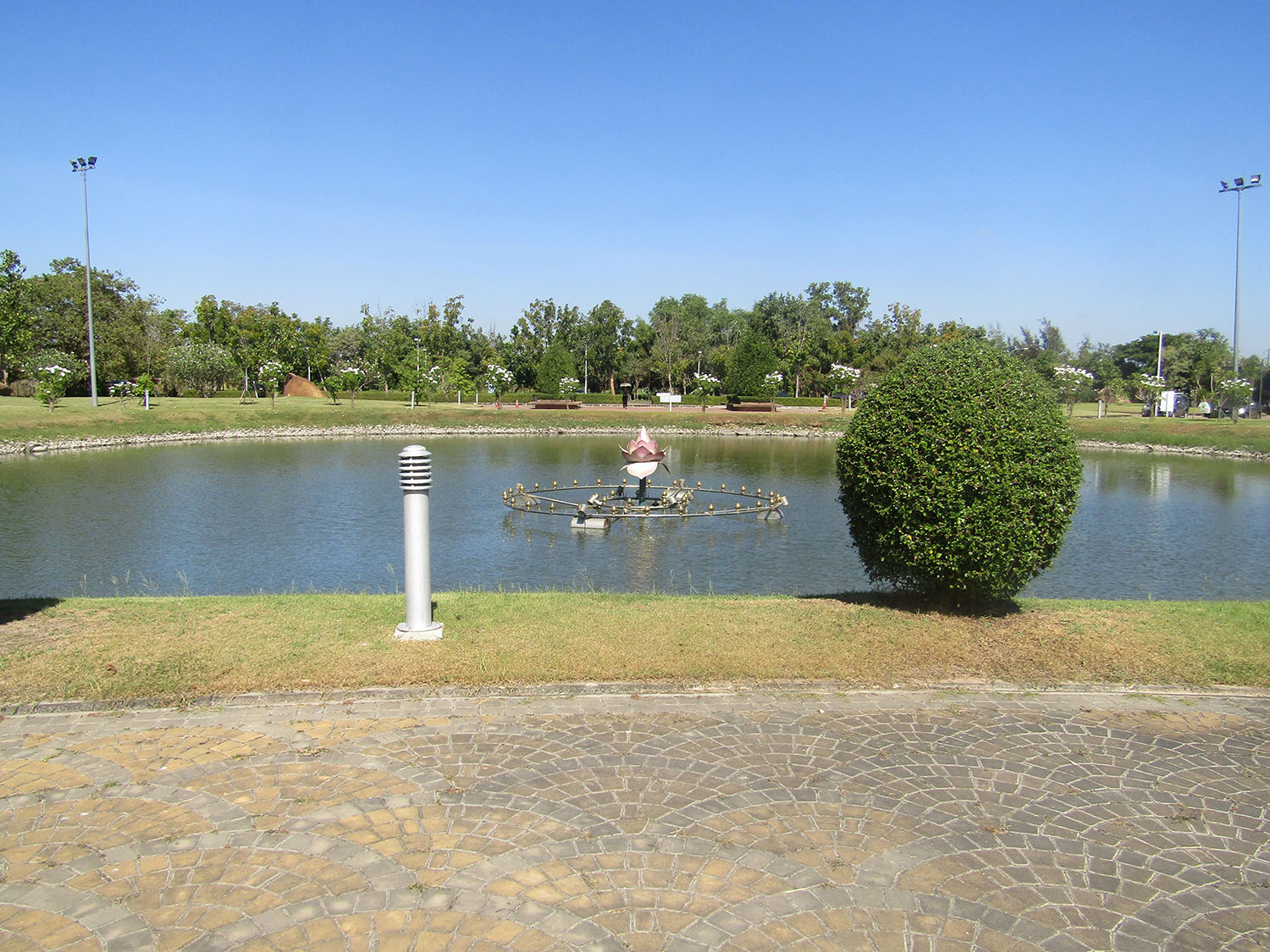
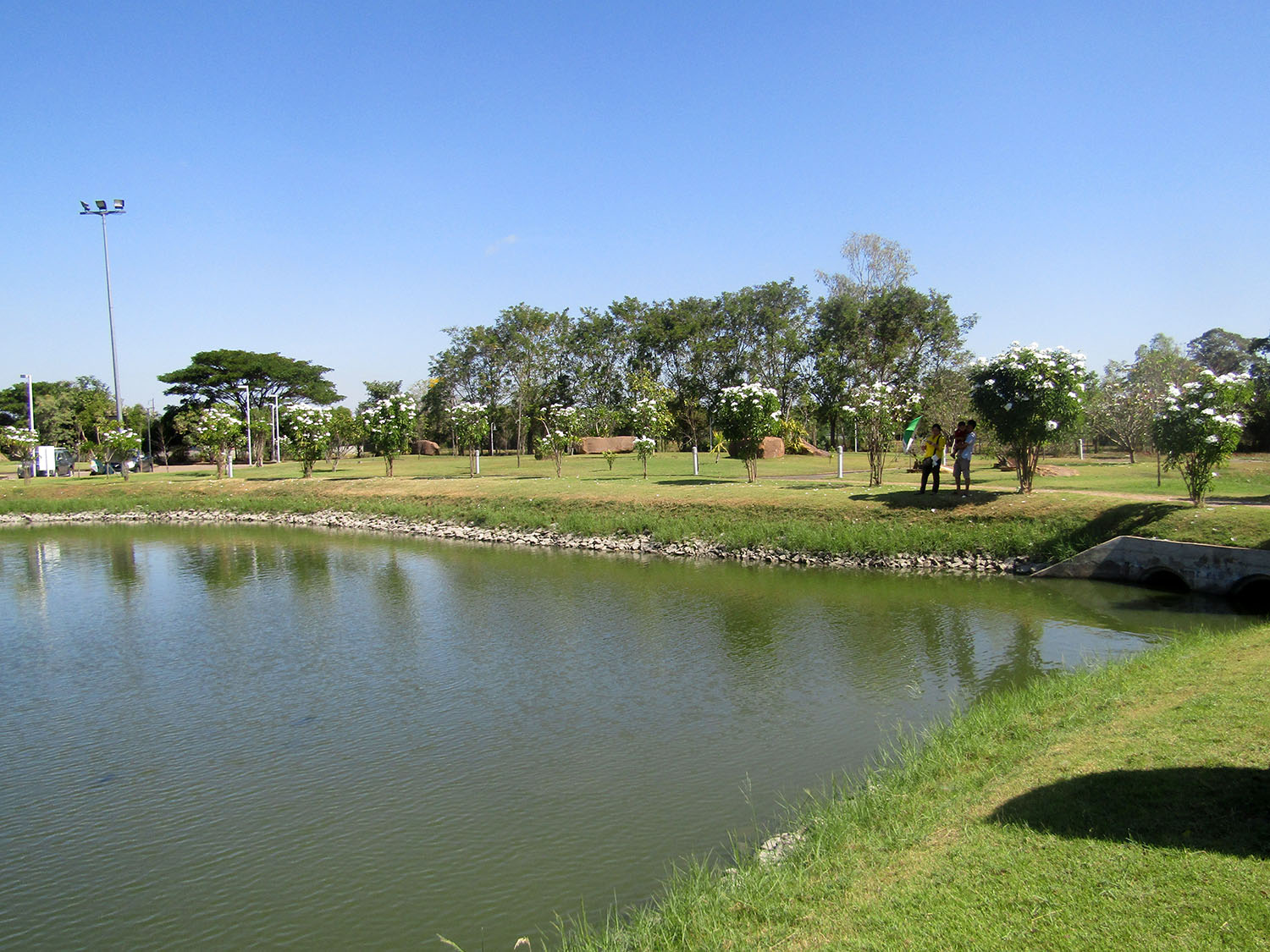
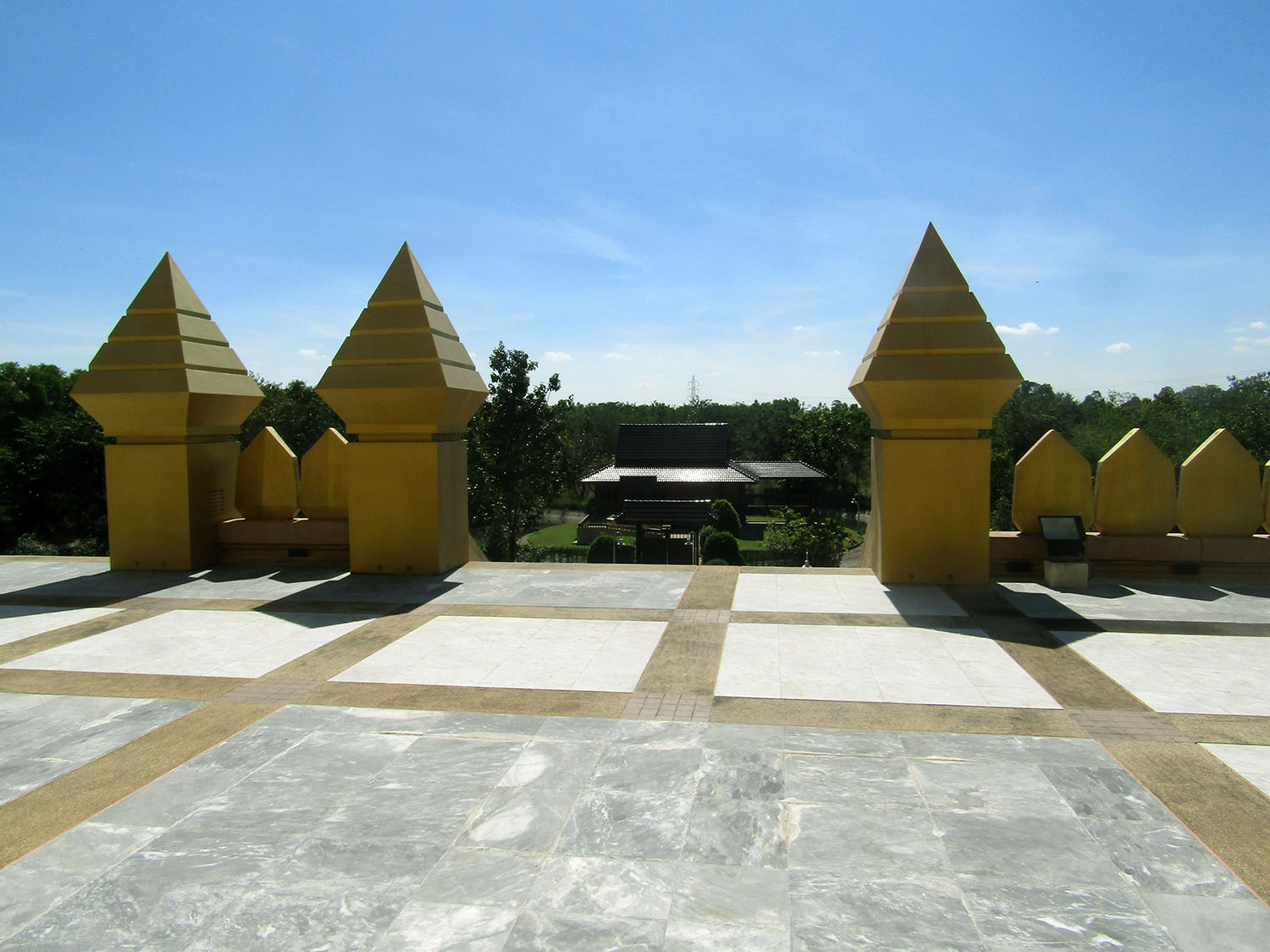
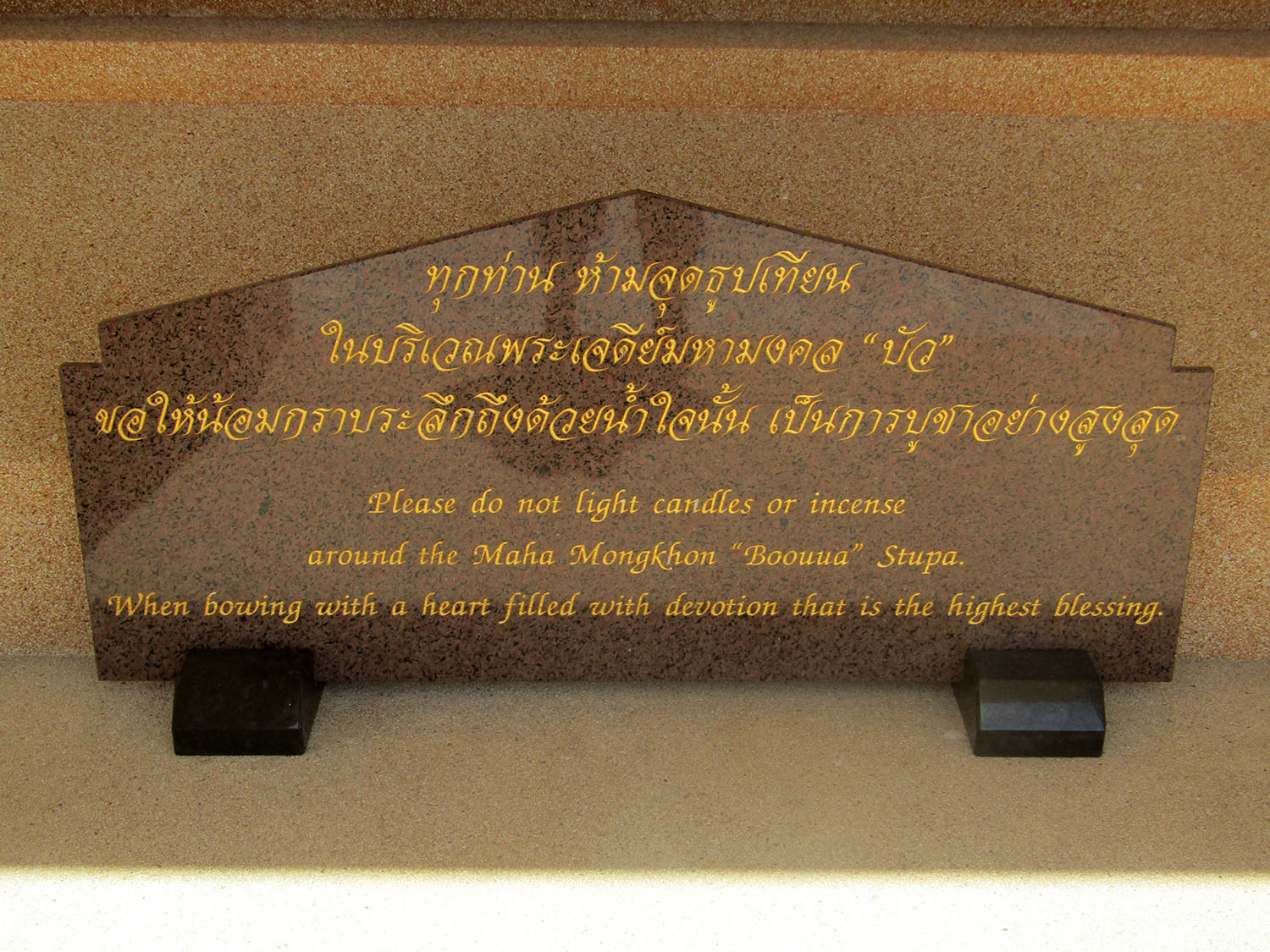
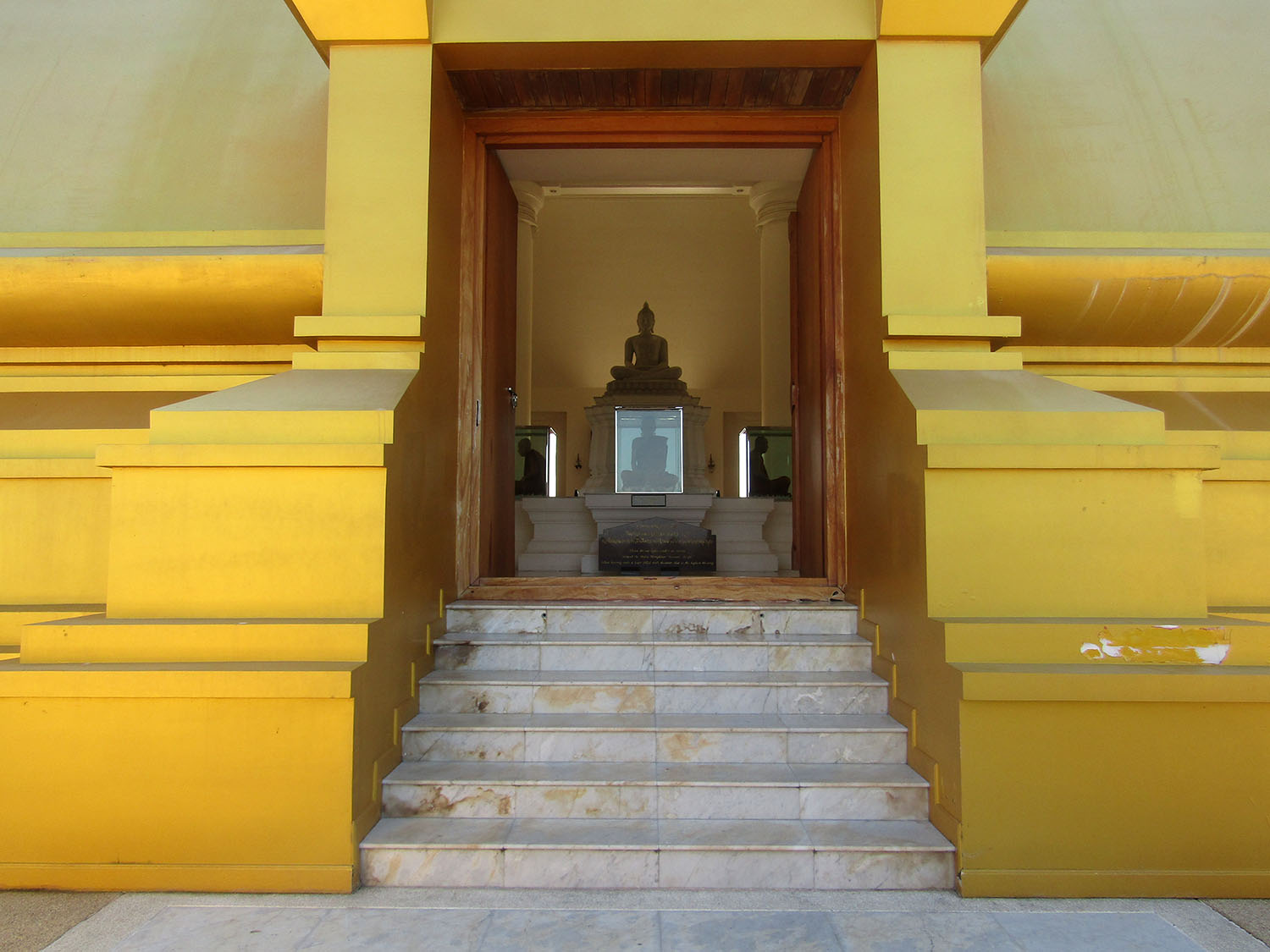
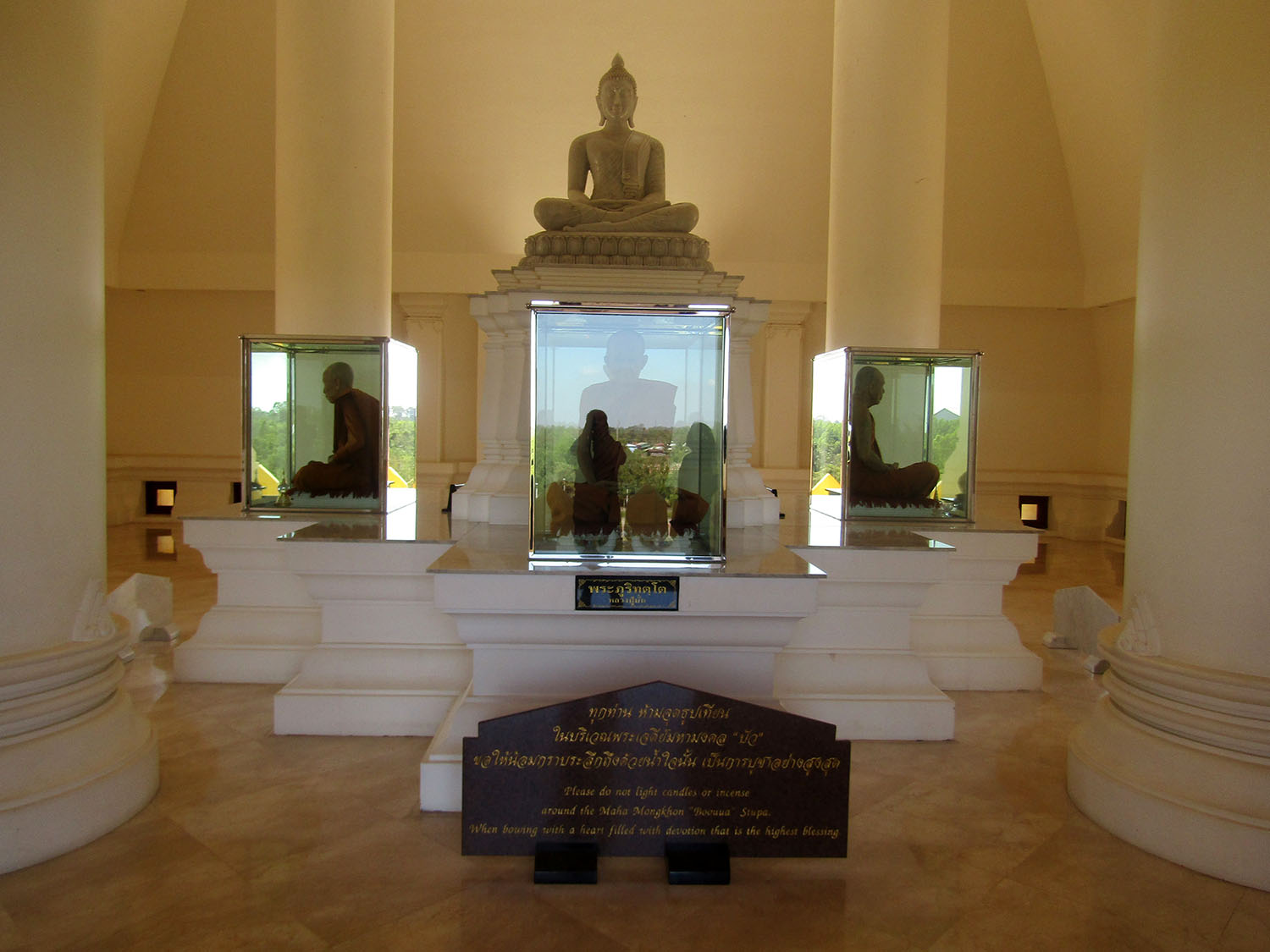
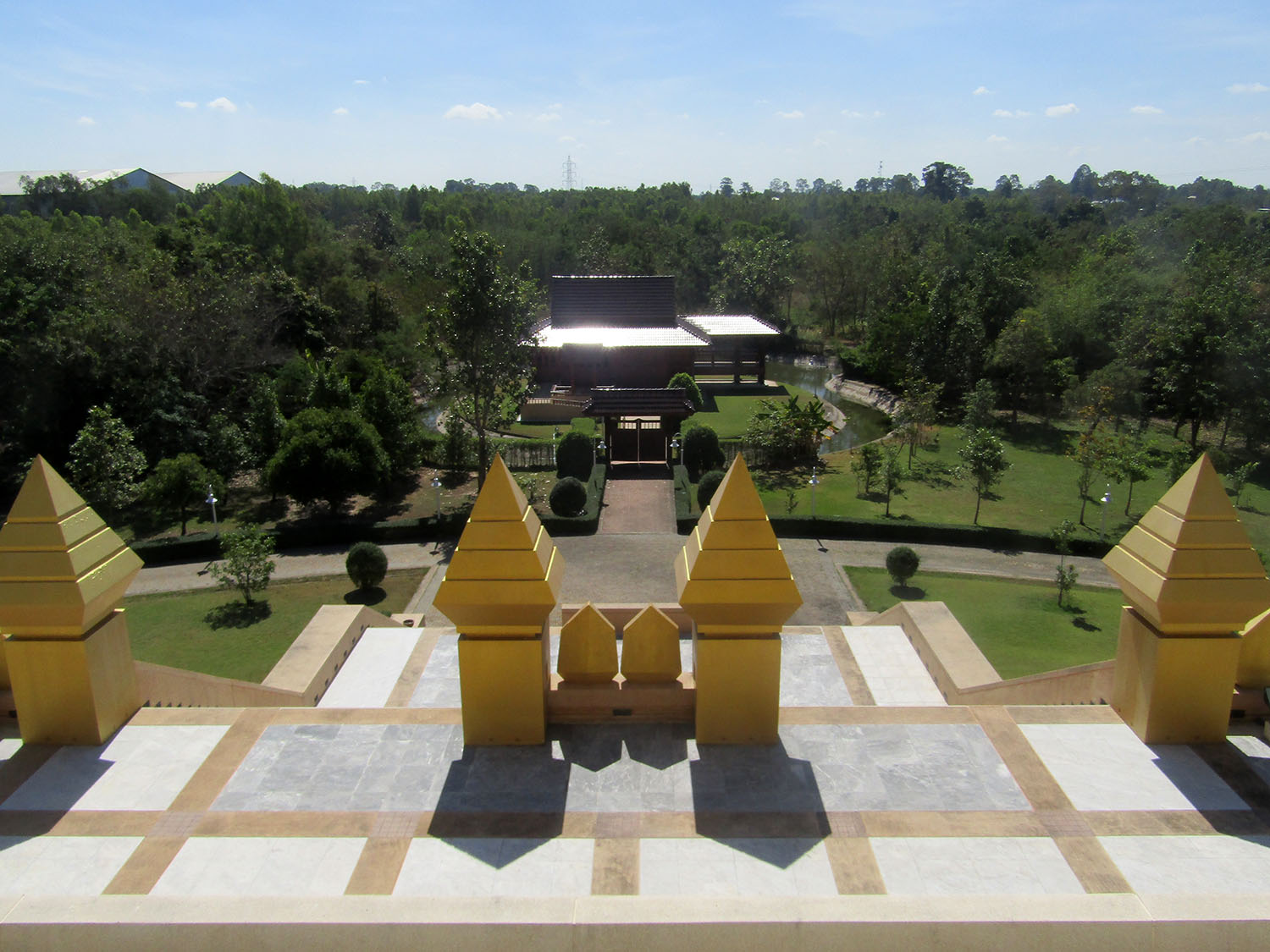
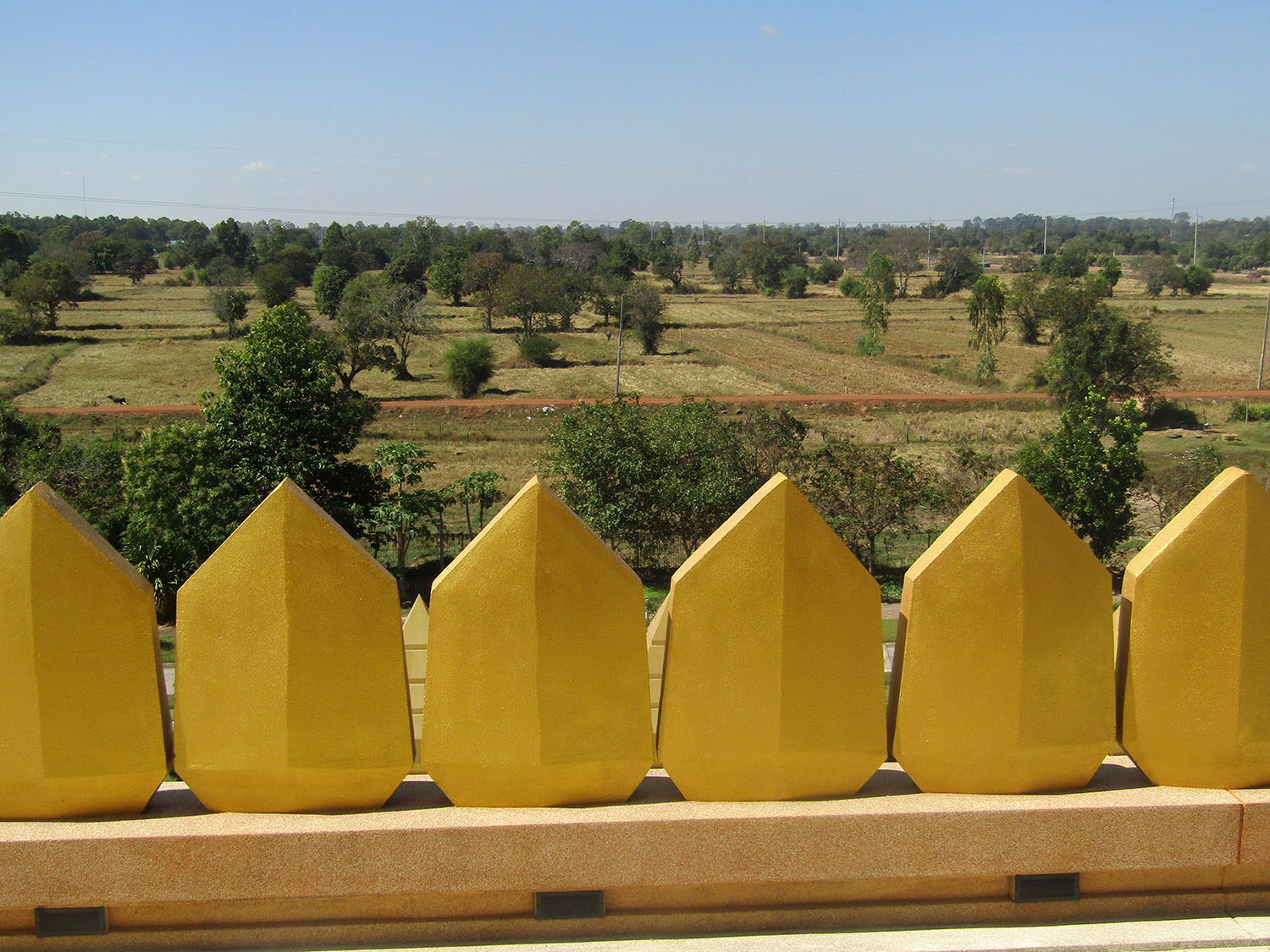 Chedi Maha Mongkol Bua, City District, Roi-Et Province
Chedi Maha Mongkol Bua, City District, Roi-Et Province
The chedi is a recent build in Laotian art style and seems to be a replica of Pha That Luang in Vientiane. It stands on a square multi-tiered base, surrounded by an exotic garden with a large lotus pond in front. Unfortunately, they have not provided any onsite information about the chedi nor is there online to support my findings. From here we need to head back into the city.
Wat Klang Ming Mueang……..Wat Klang Ming Mueang is located close to Wat Burapha Phiram we visited yesterday. Thankfully there is information onsite for this temple that I can use.
Wat Klang Ming Mueang, originally called ‘Klang Temple’, was built in 1541 when the area was then under the control of the Lan Xang Kingdom. The important building in the ancient temple is its ‘sin’ (chapel or ordination hall) built in the 15th/16th centuries and was used for the consecrated water ceremonies to wash away the blood of war in the late Ayutthaya Period. Klang Ming Mueang Temple’s sim is built in traditional Isan style with bricks and mortar on a rectangular plot with surrounding walls, facing east. There are four chambers with a surrounding balcony and only one entrance gate. Each side of the building has five windows and the roof is tiled with earthenware shingles and decorated with holy Naga and Swan toppers. The outer walls above the windows were painted with stories of the Buddha’s past life using green, yellow and blue with black coloured lining. Inside there is a seated image of the Buddha in subduing Mara posture sitting on a plaster base.
Wat Klang Ming Mueang……..Wat Klang Ming Mueang is located close to Wat Burapha Phiram we visited yesterday. Thankfully there is information onsite for this temple that I can use.
Wat Klang Ming Mueang, originally called ‘Klang Temple’, was built in 1541 when the area was then under the control of the Lan Xang Kingdom. The important building in the ancient temple is its ‘sin’ (chapel or ordination hall) built in the 15th/16th centuries and was used for the consecrated water ceremonies to wash away the blood of war in the late Ayutthaya Period. Klang Ming Mueang Temple’s sim is built in traditional Isan style with bricks and mortar on a rectangular plot with surrounding walls, facing east. There are four chambers with a surrounding balcony and only one entrance gate. Each side of the building has five windows and the roof is tiled with earthenware shingles and decorated with holy Naga and Swan toppers. The outer walls above the windows were painted with stories of the Buddha’s past life using green, yellow and blue with black coloured lining. Inside there is a seated image of the Buddha in subduing Mara posture sitting on a plaster base.
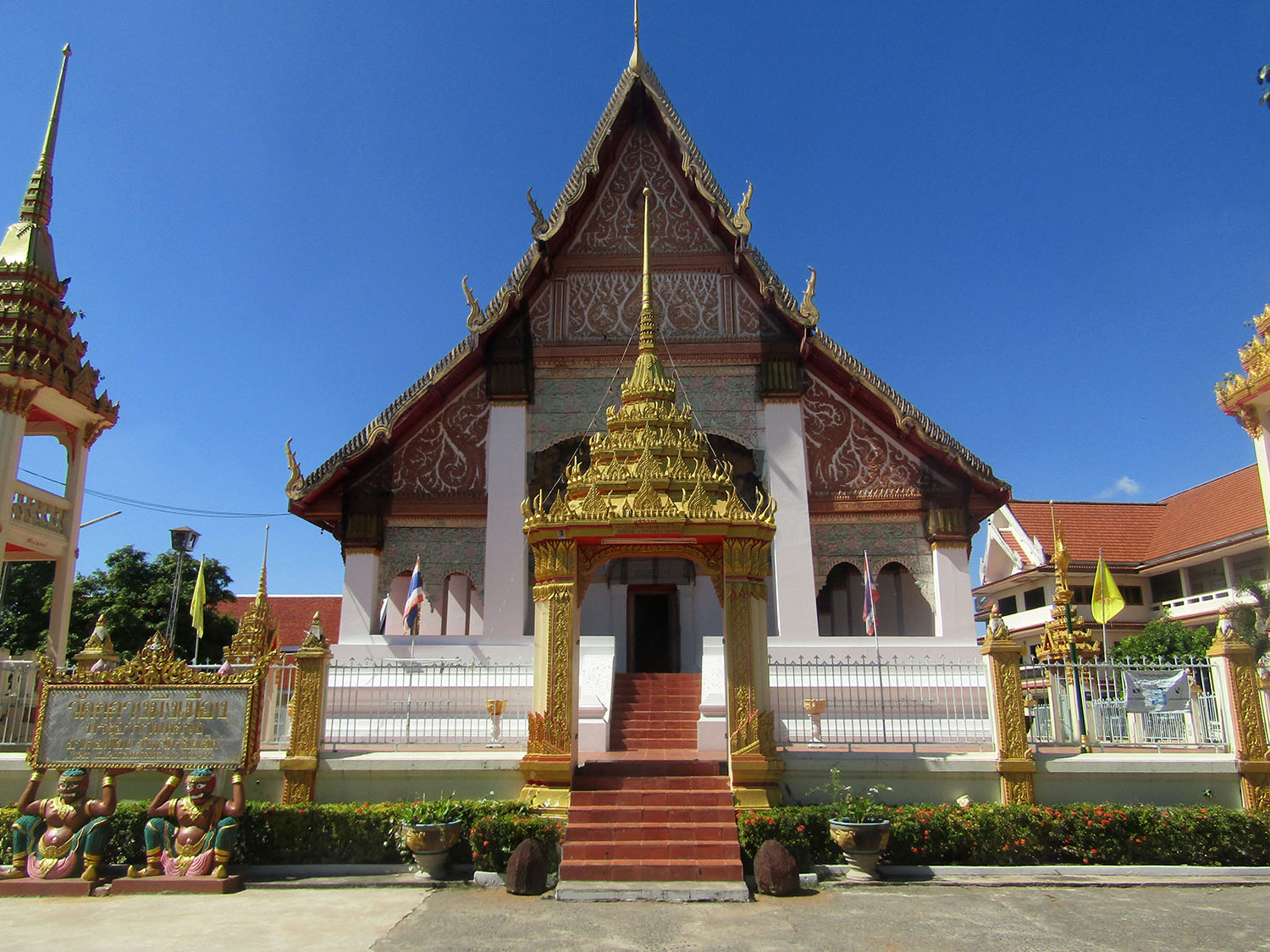
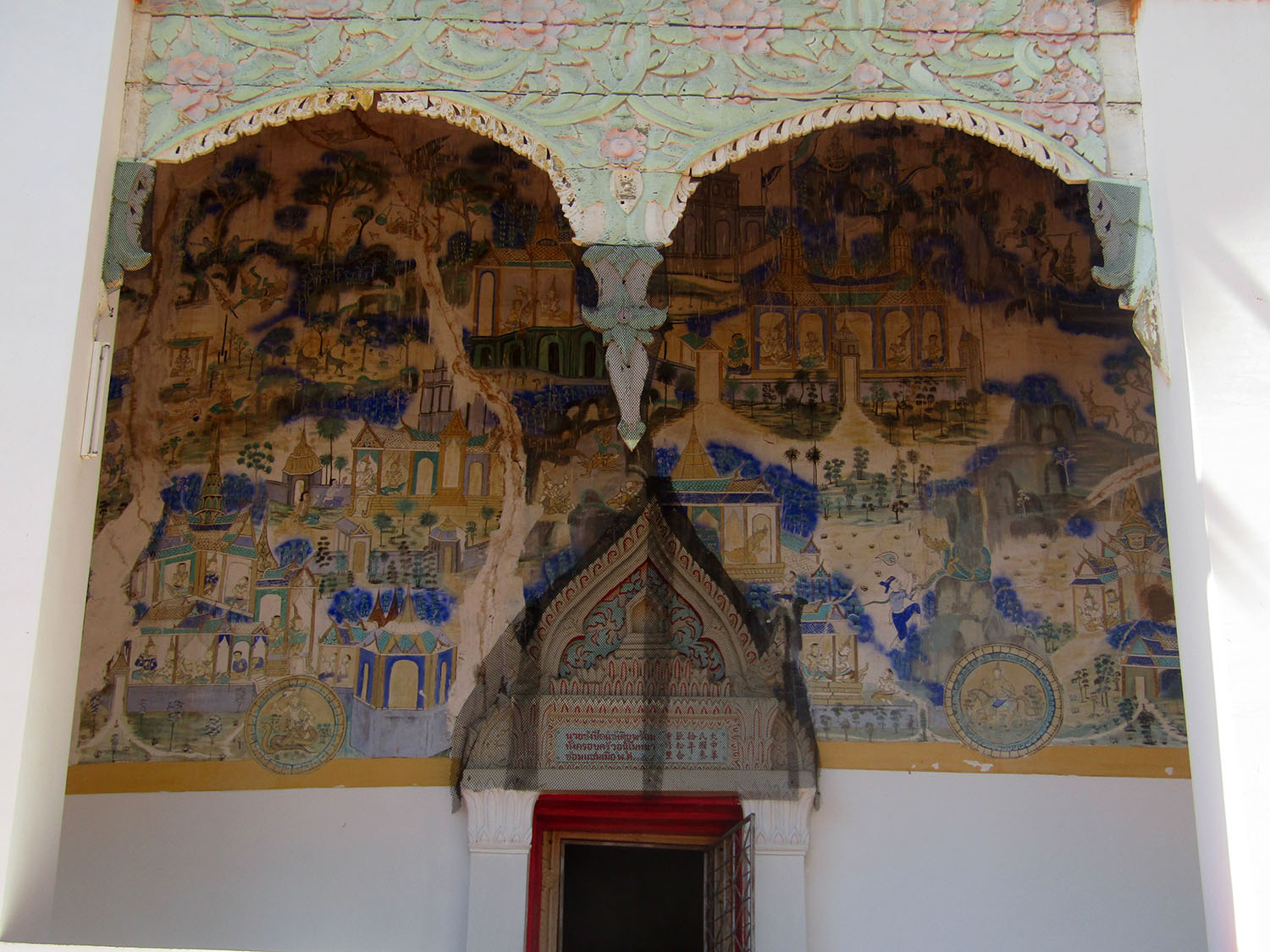
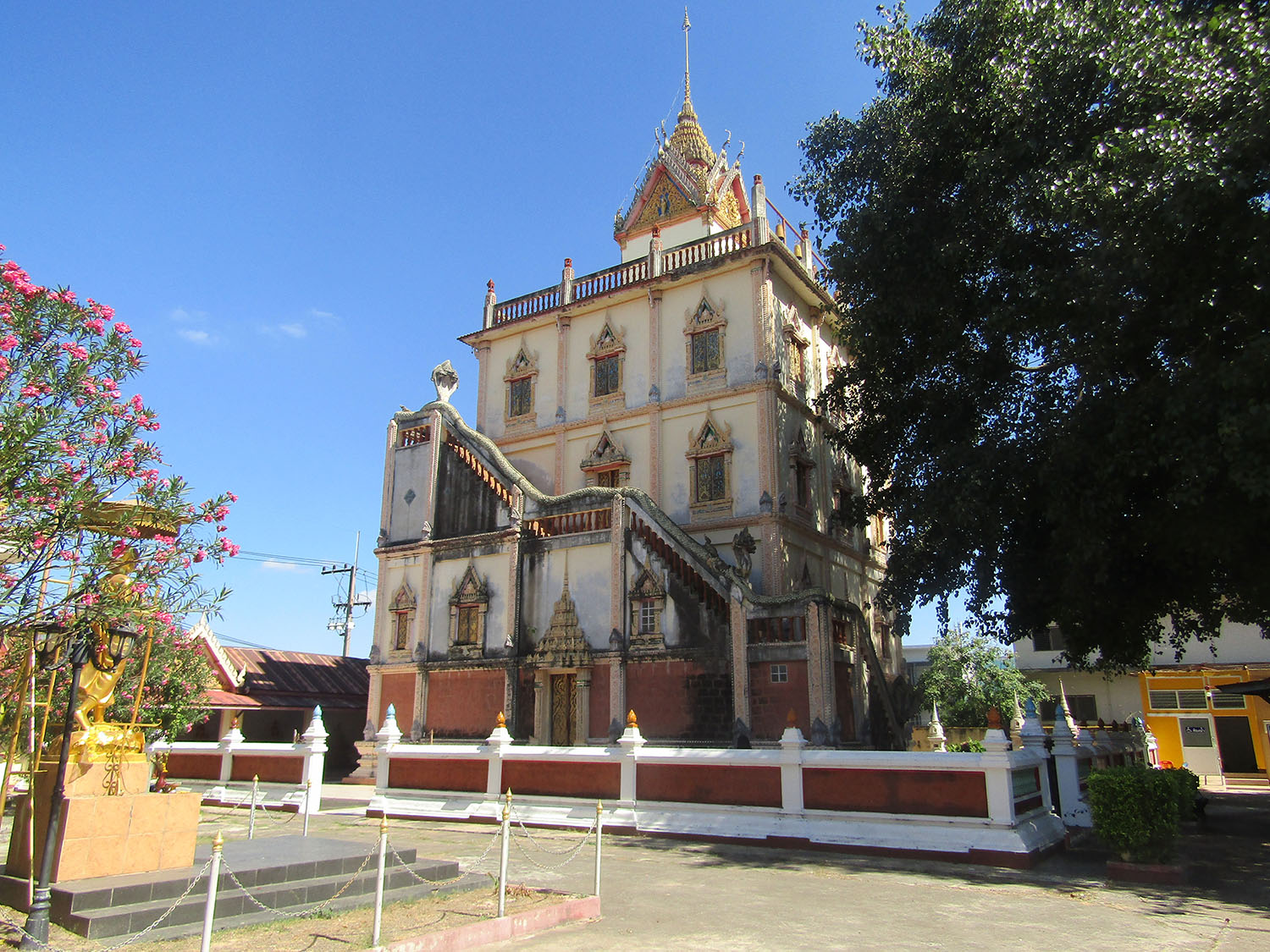
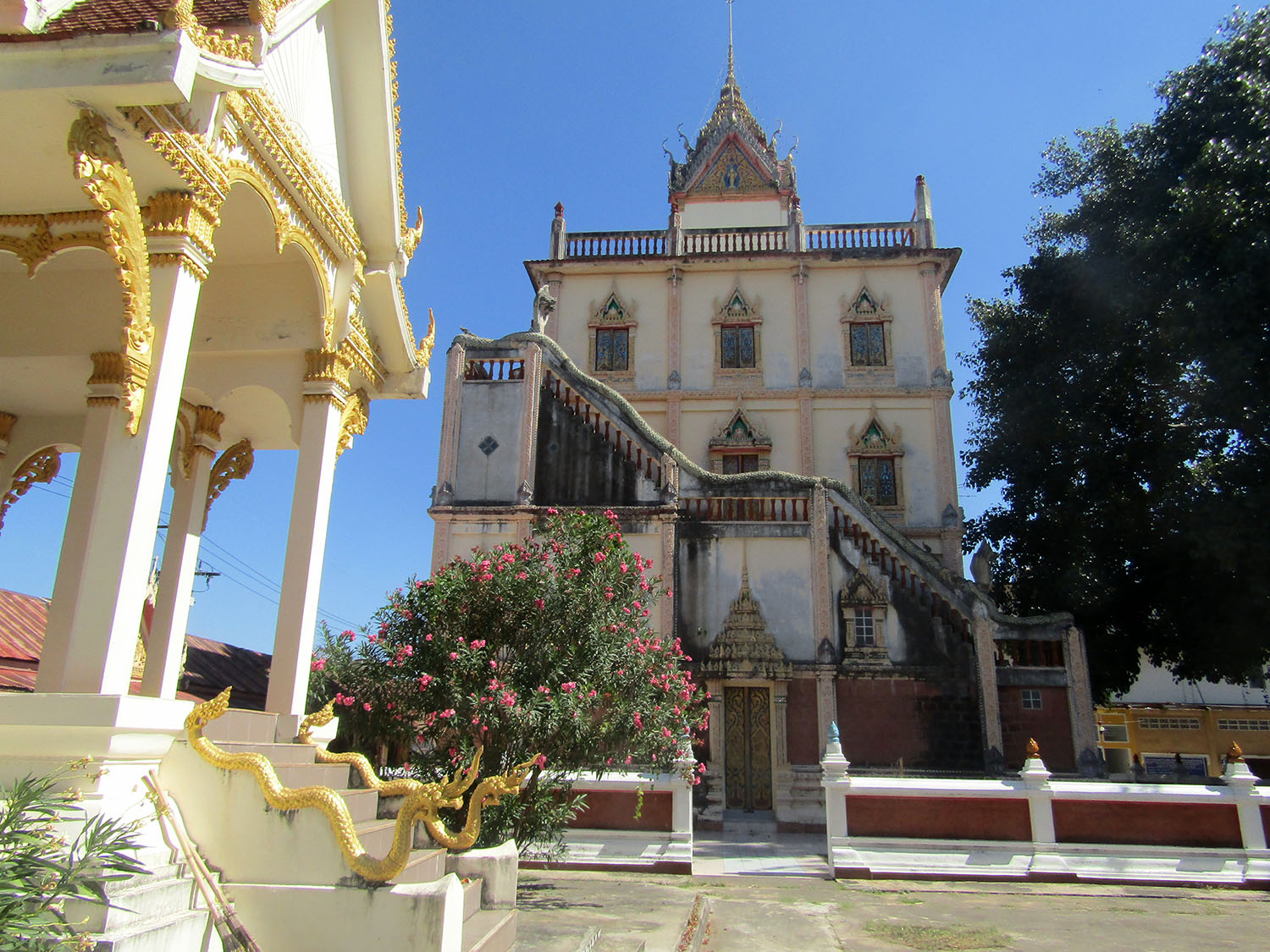
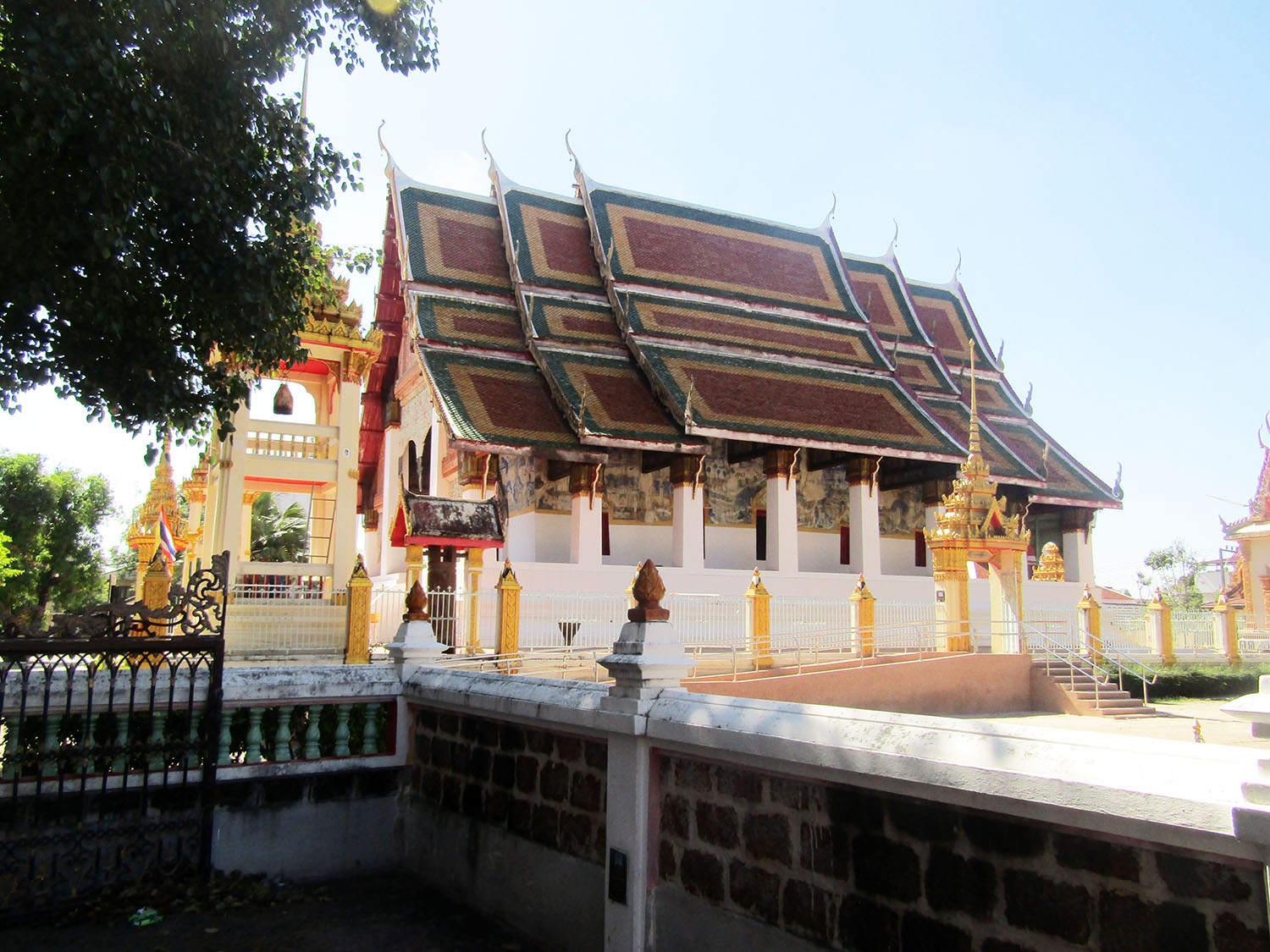
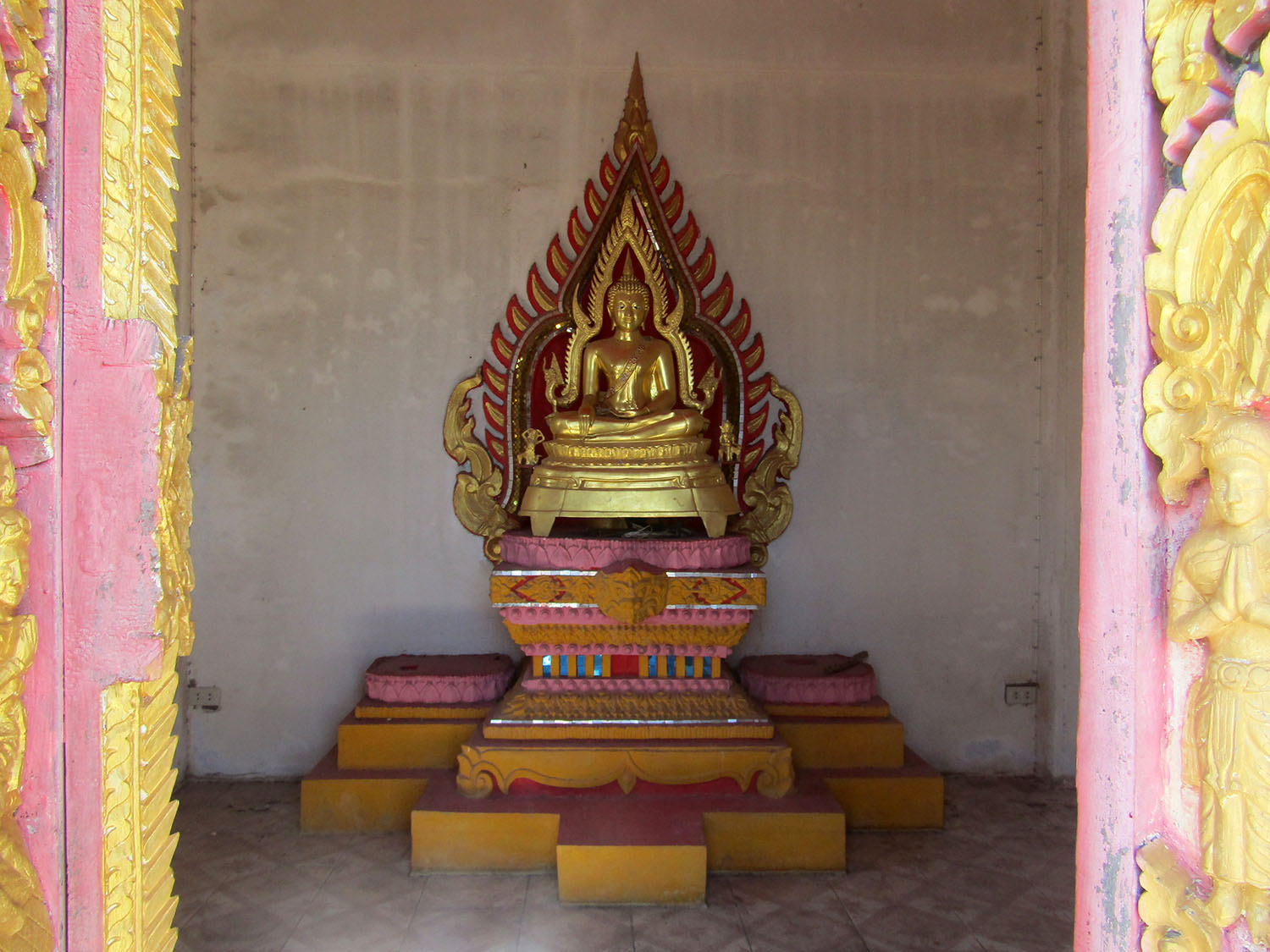
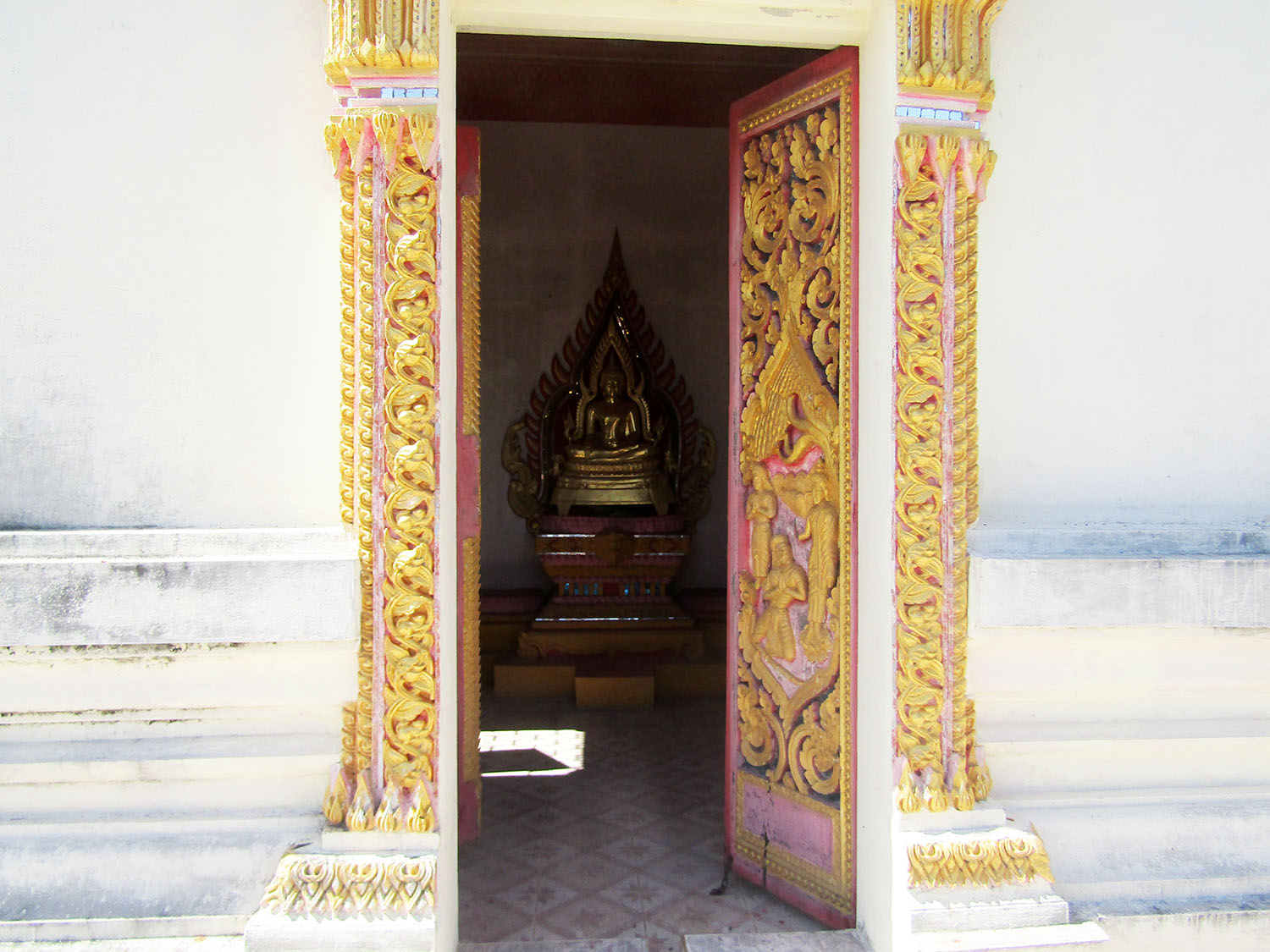
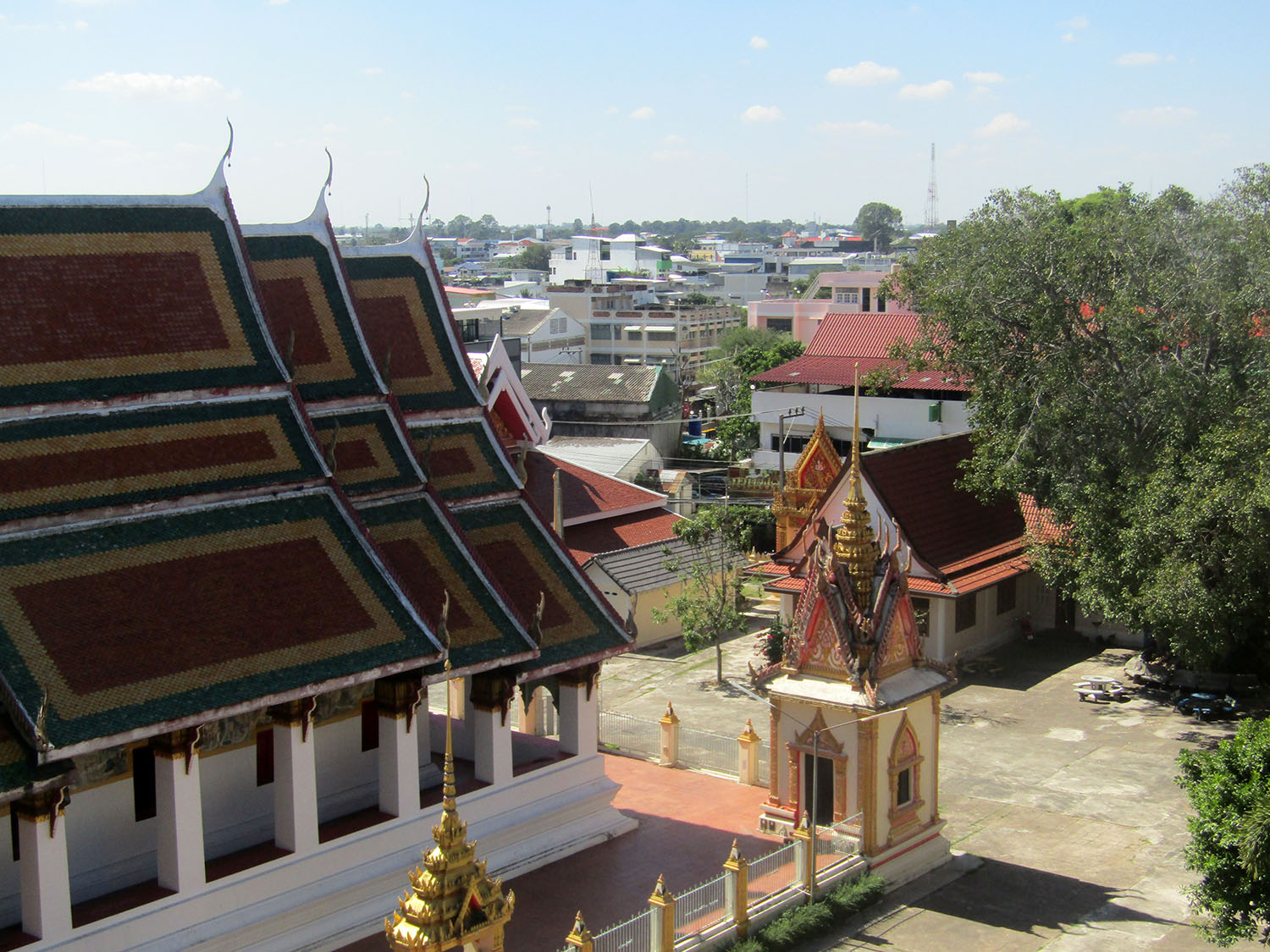
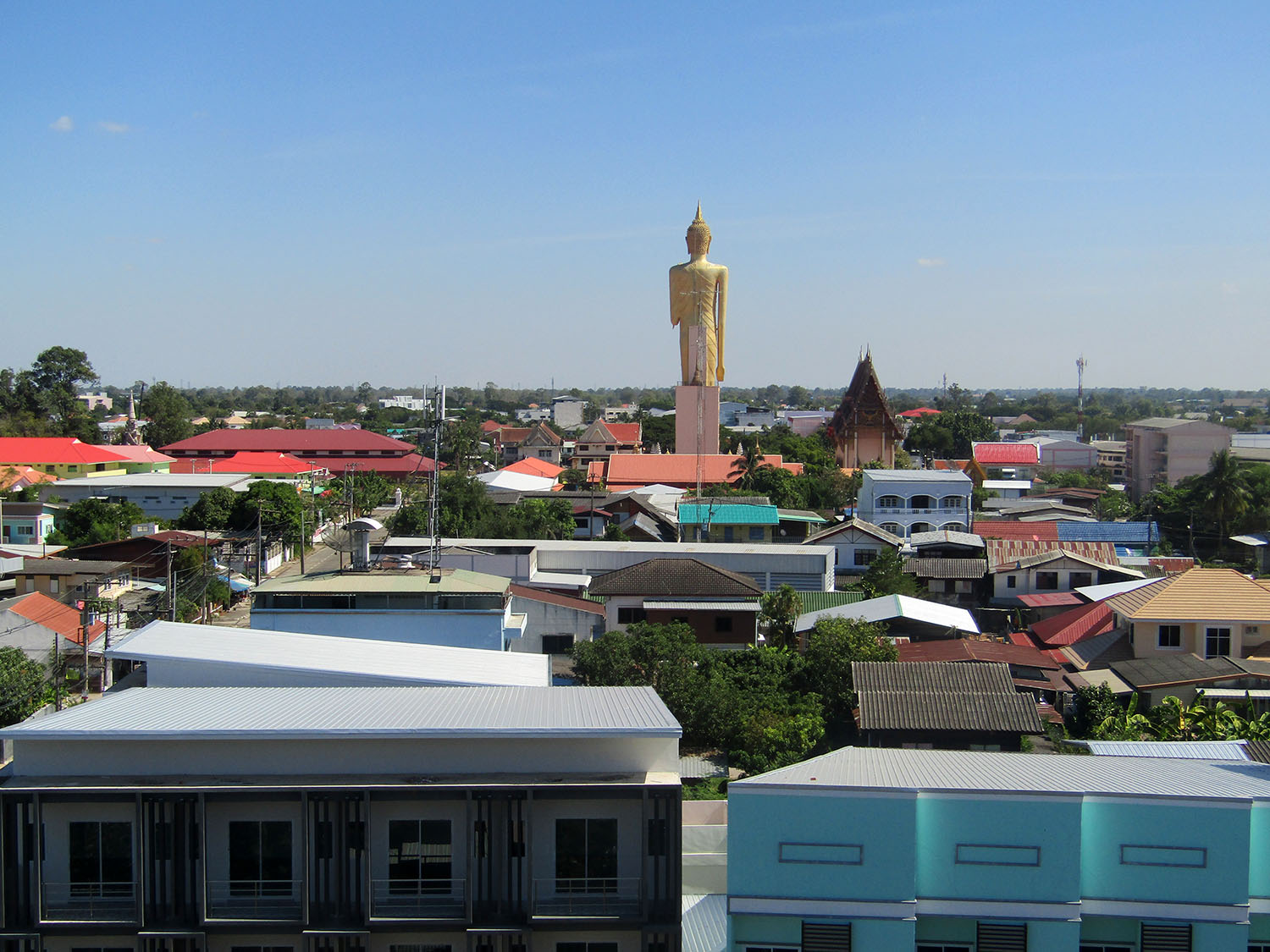
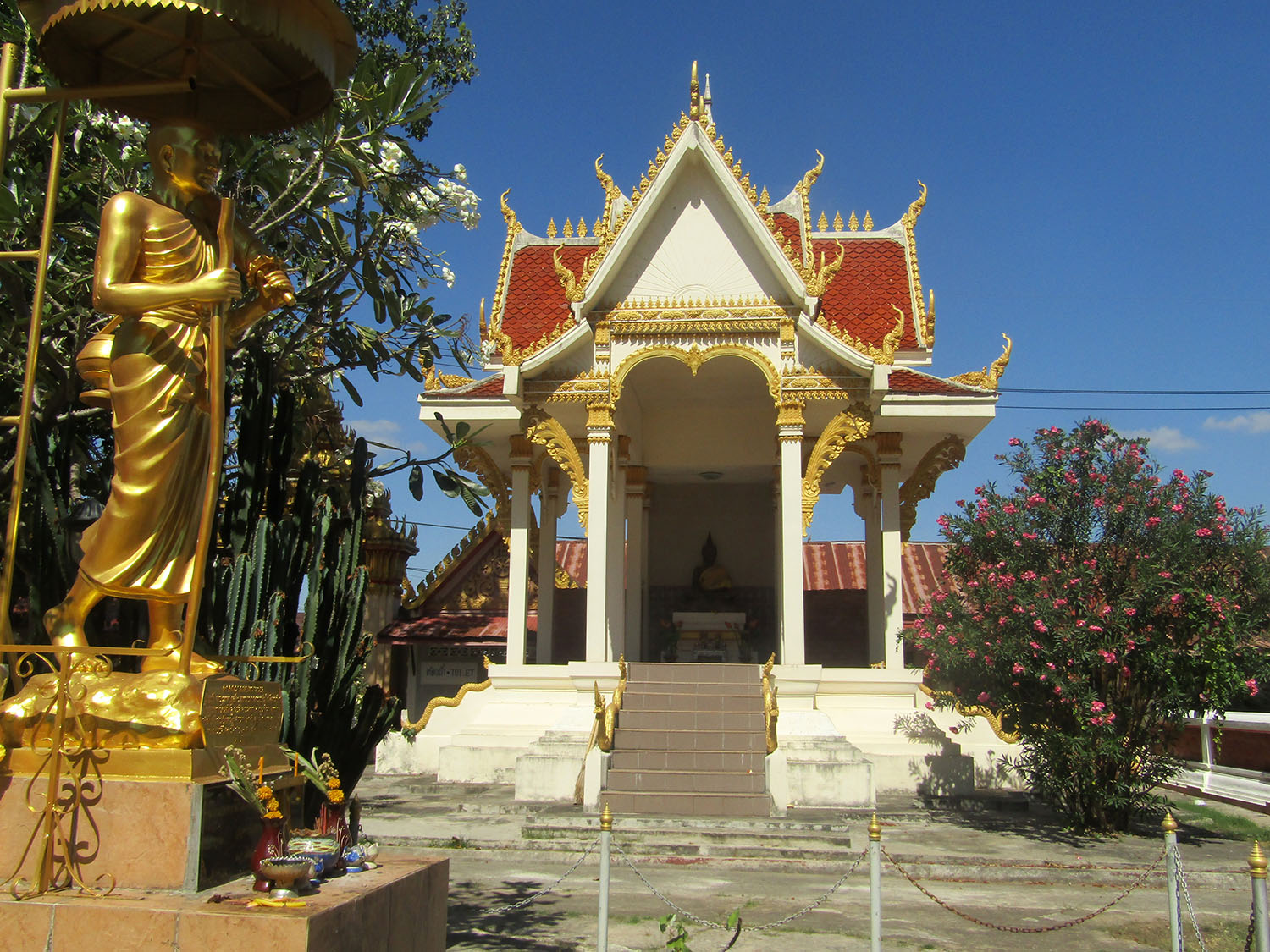
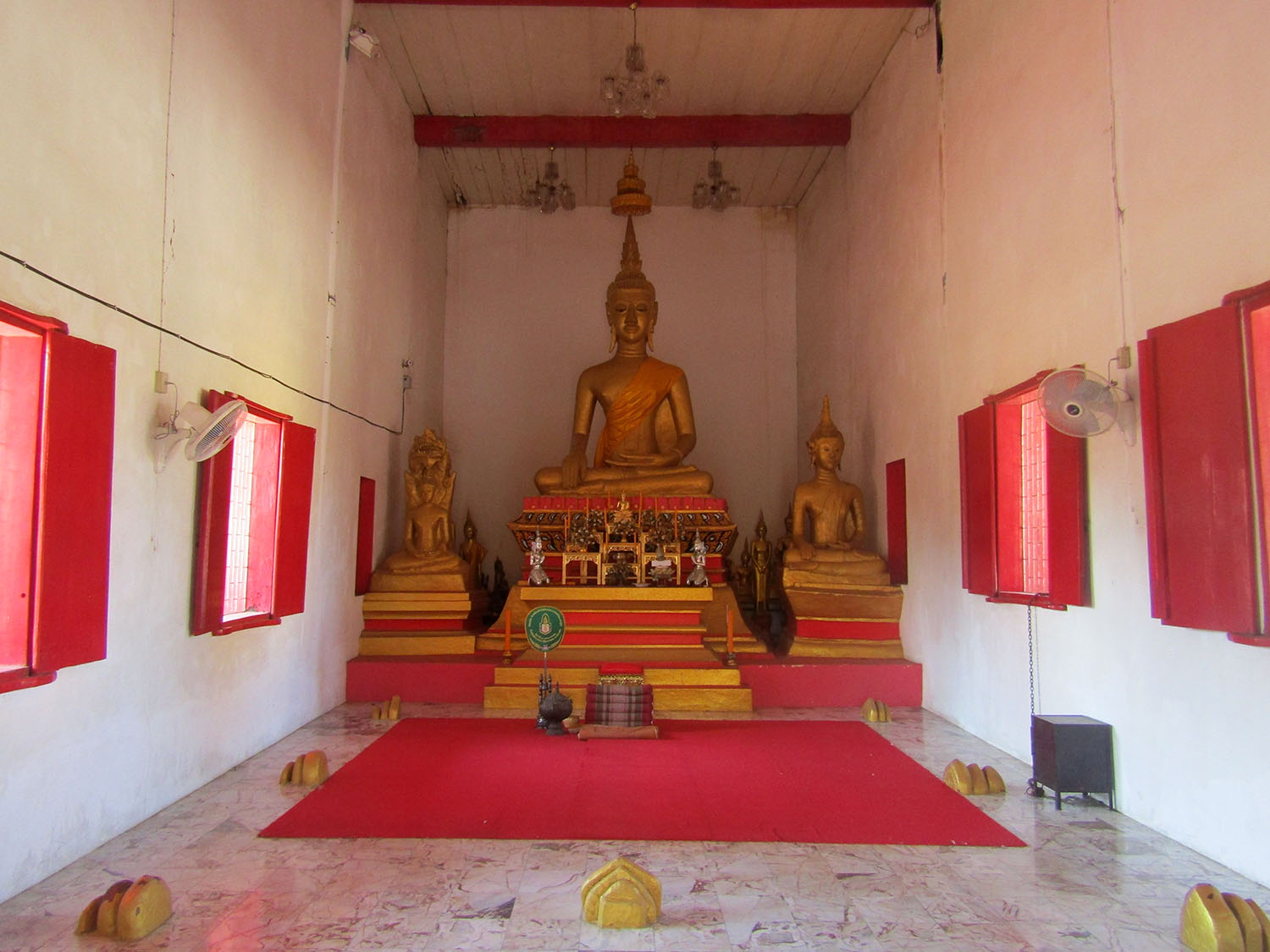
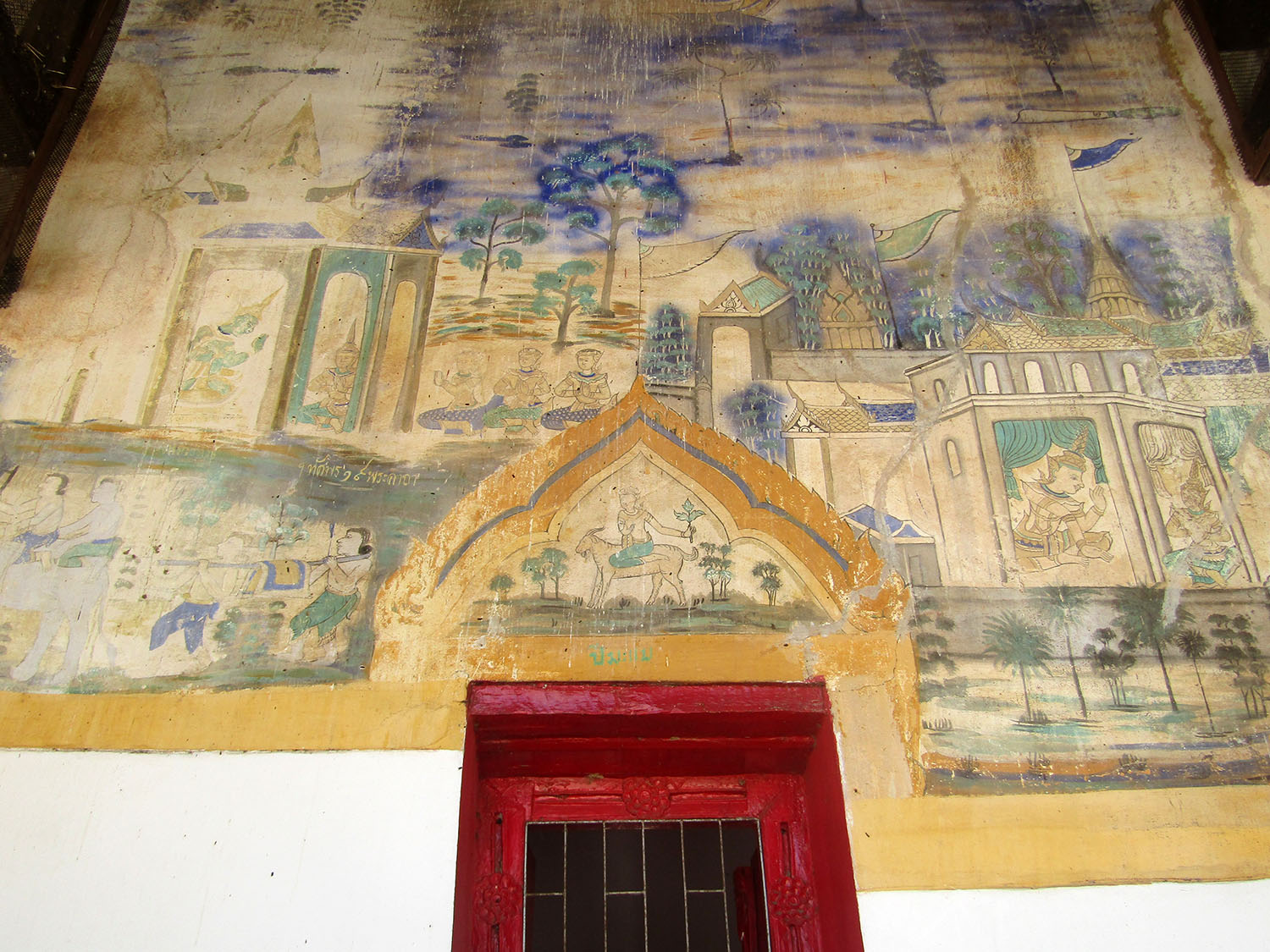 Wat Klang Ming Mueang, Roi-Et
Wat Klang Ming Mueang, Roi-Et
Wat Bueng Phra Lan Chai……..Wat Bueng Phra Lan Chai is located in the centre of Roi Et near the lake known as Beung Plan Chai. No onsite or online information is found for this temple but within the grounds is an old pagoda similar to the one at Wat Klang Ming Mueang. This pagoda located within a small walled lotus pond is thought to have been constructed in the late Ayutthaya period, a site where the blood of war could be washed away.
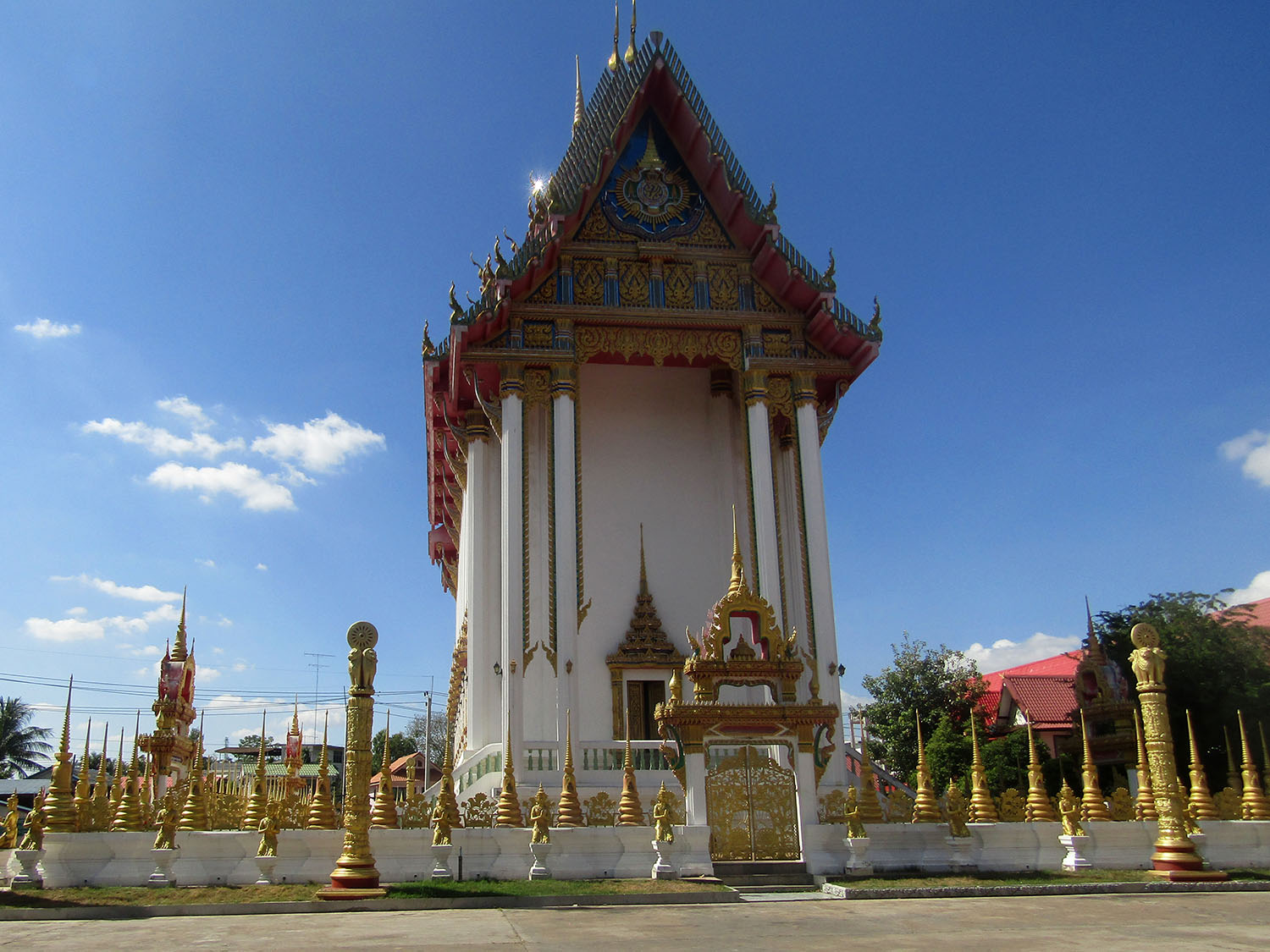
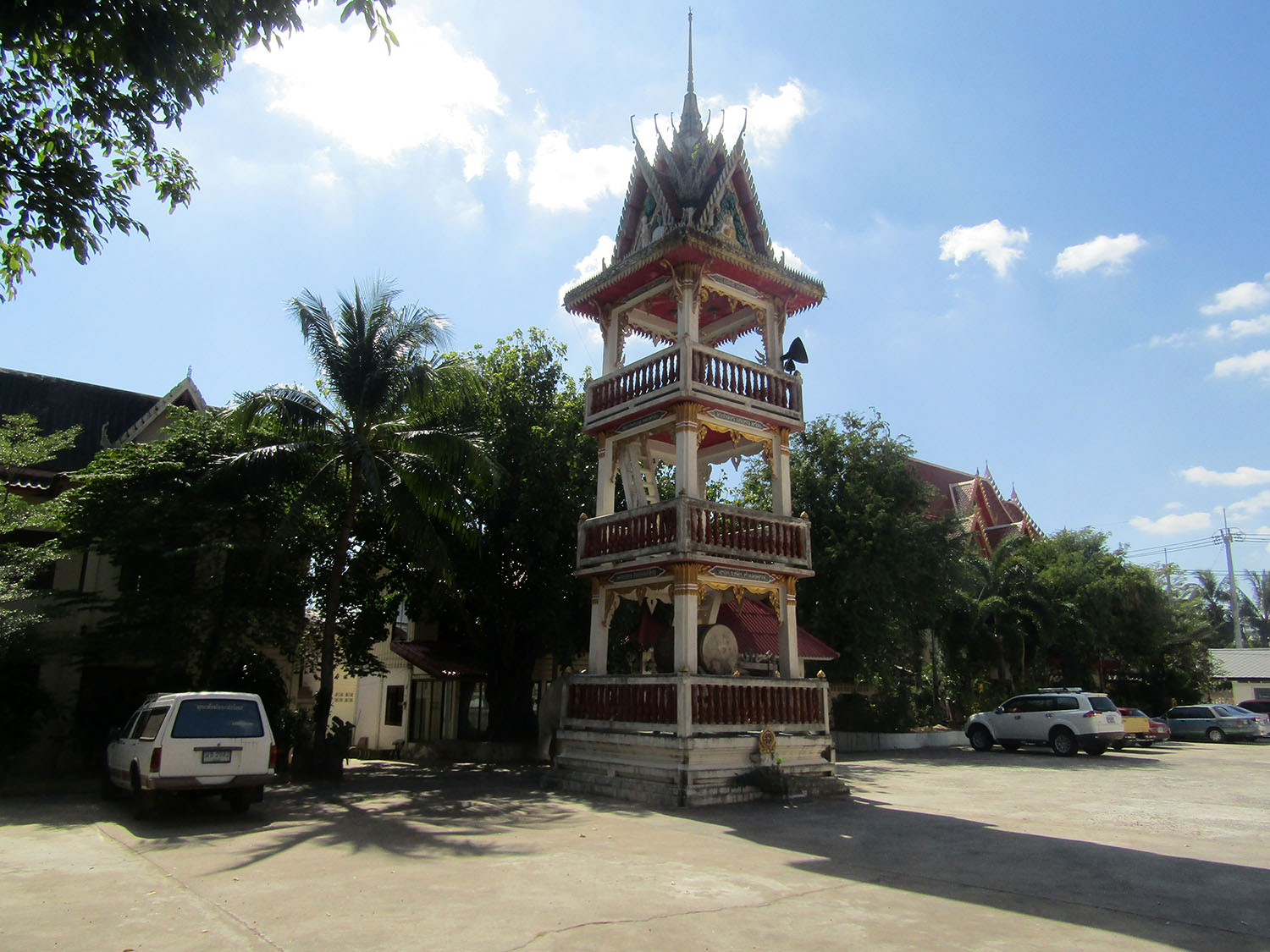
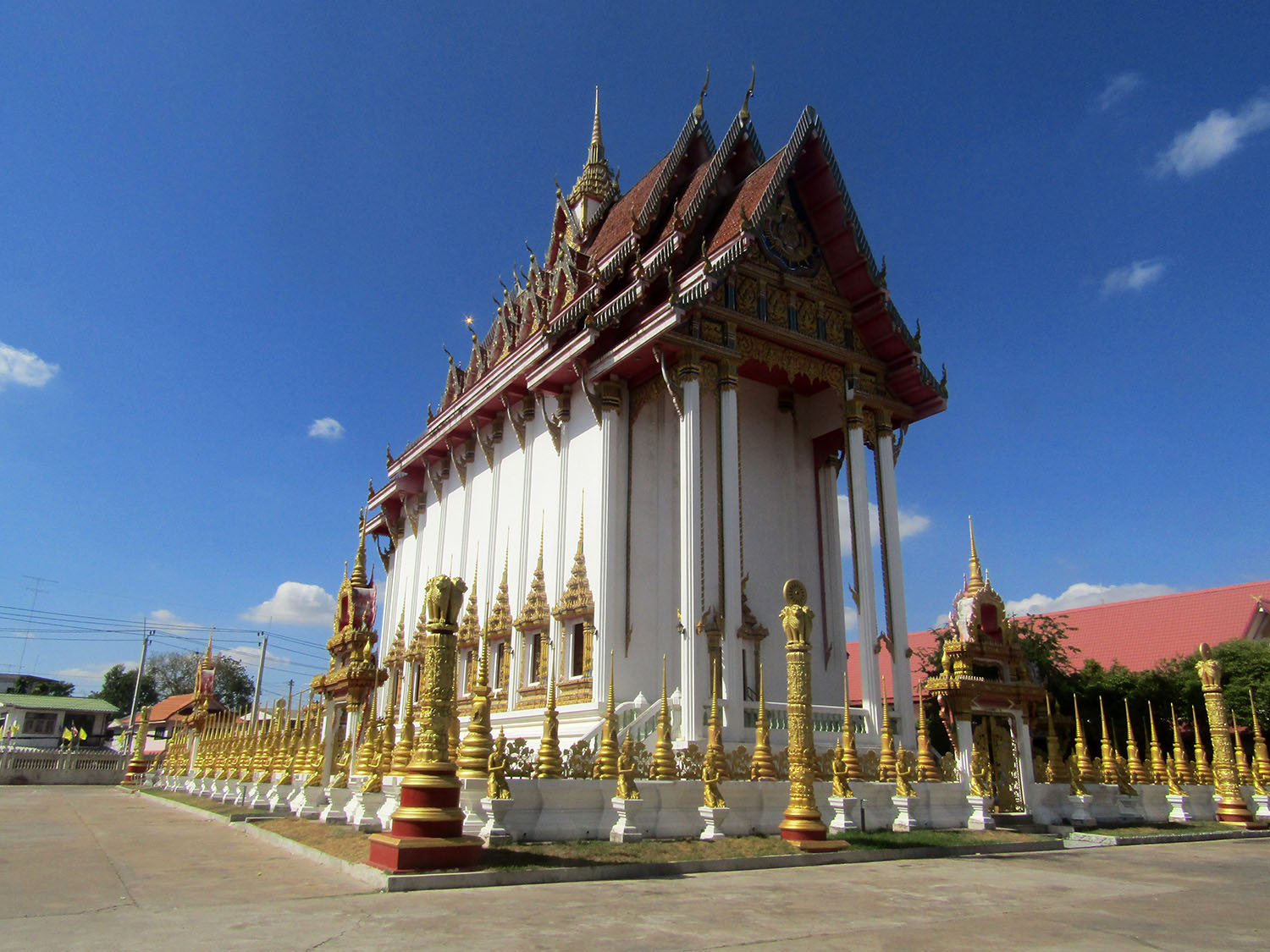
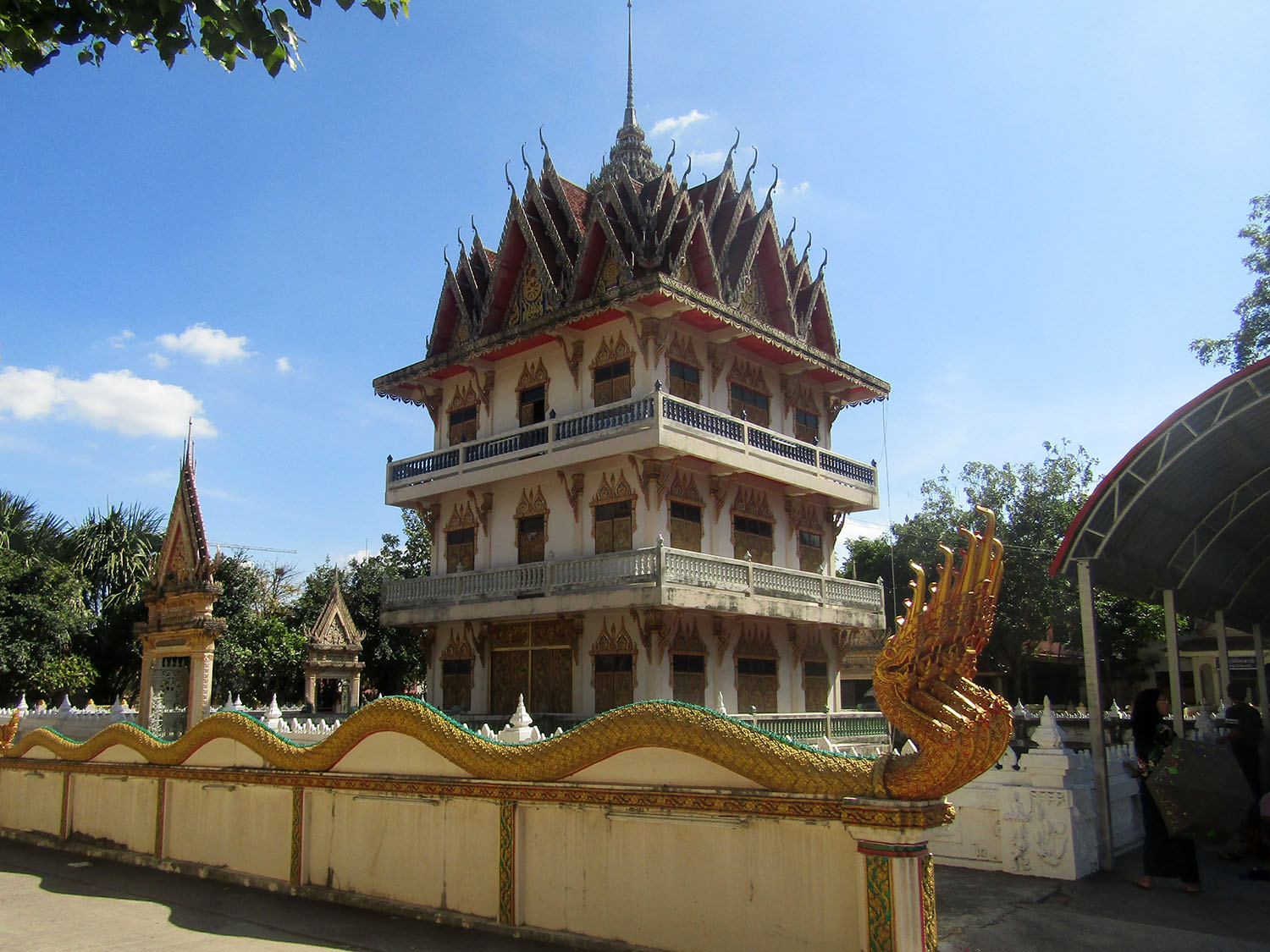
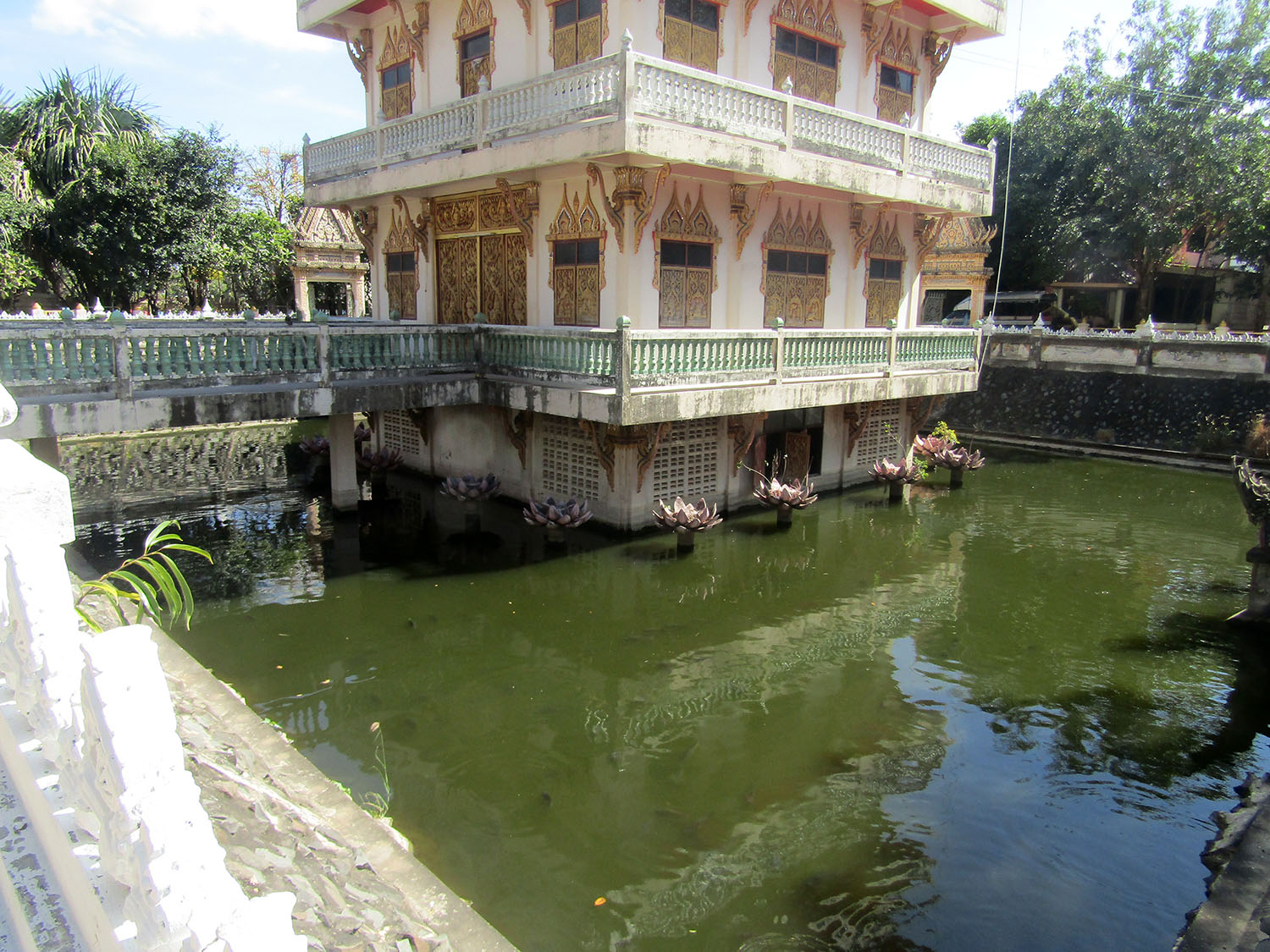
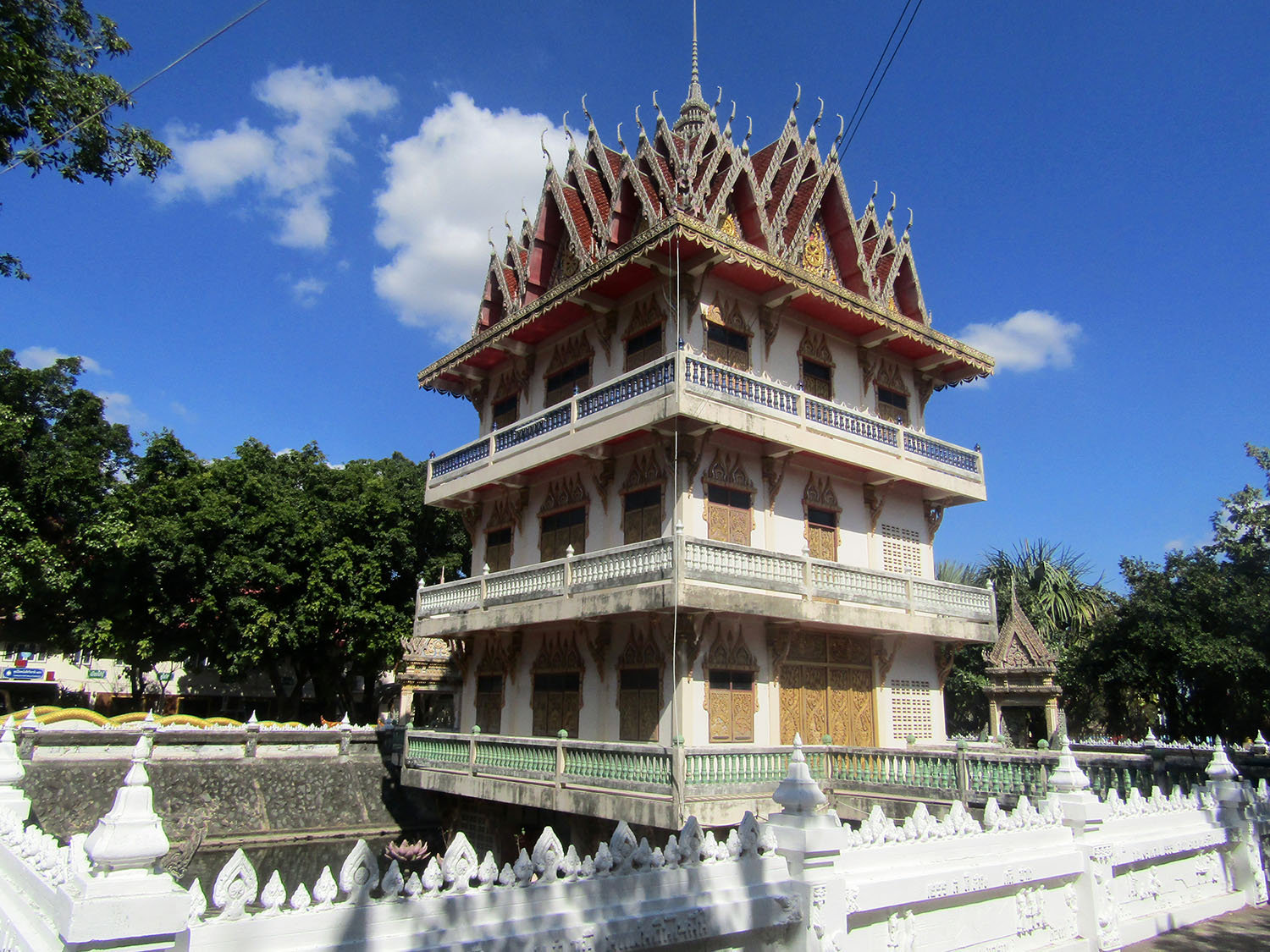
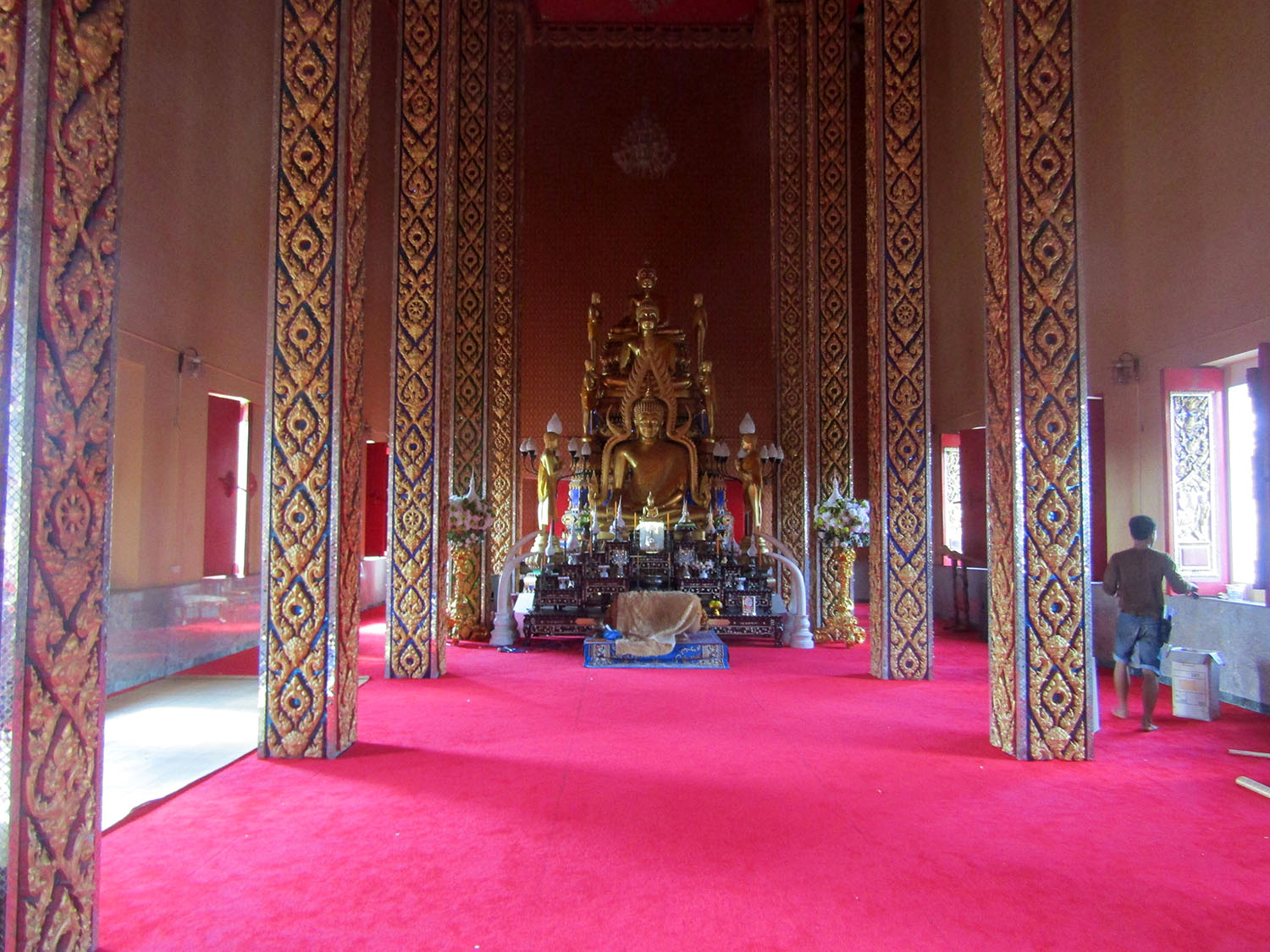
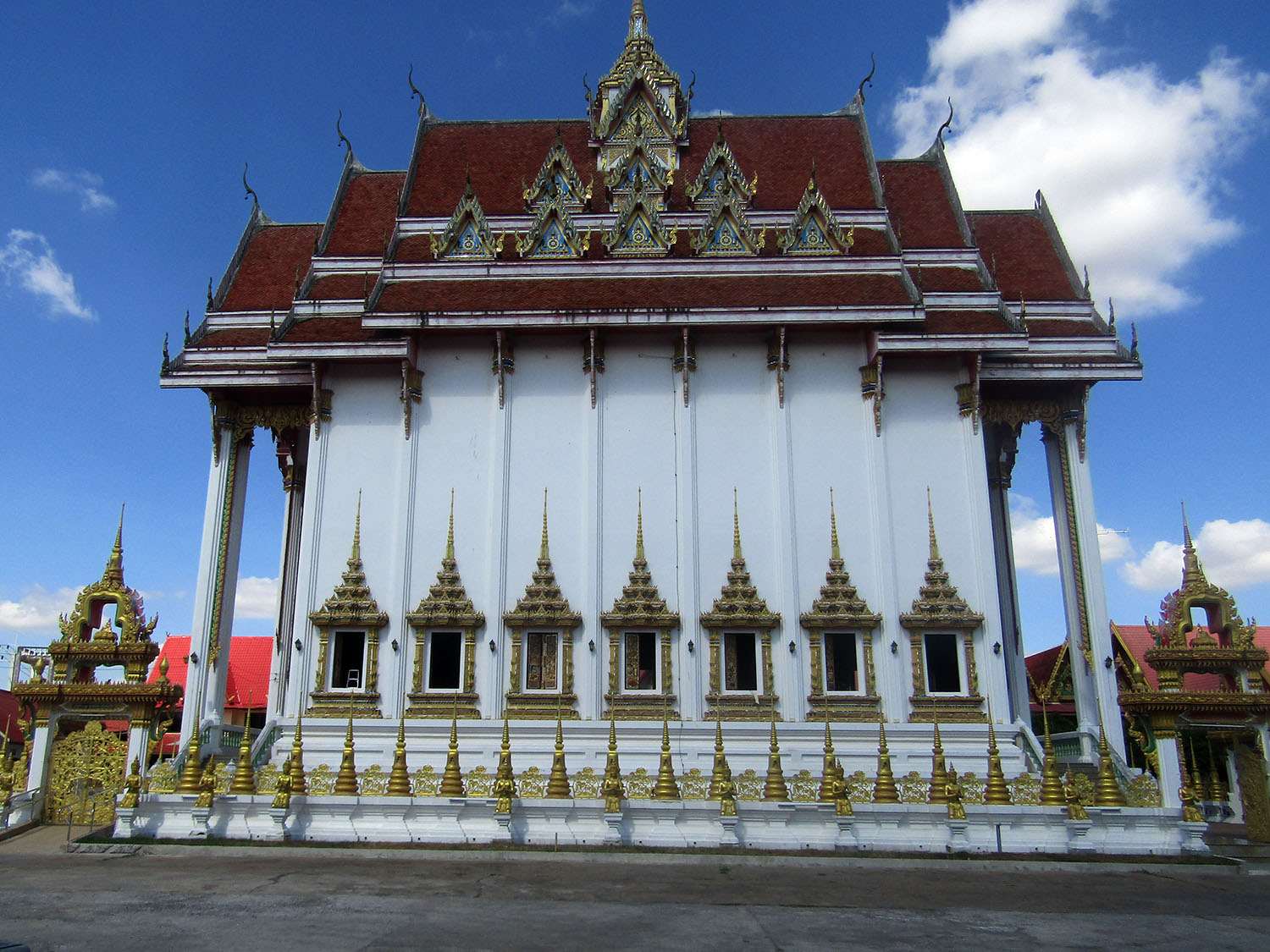
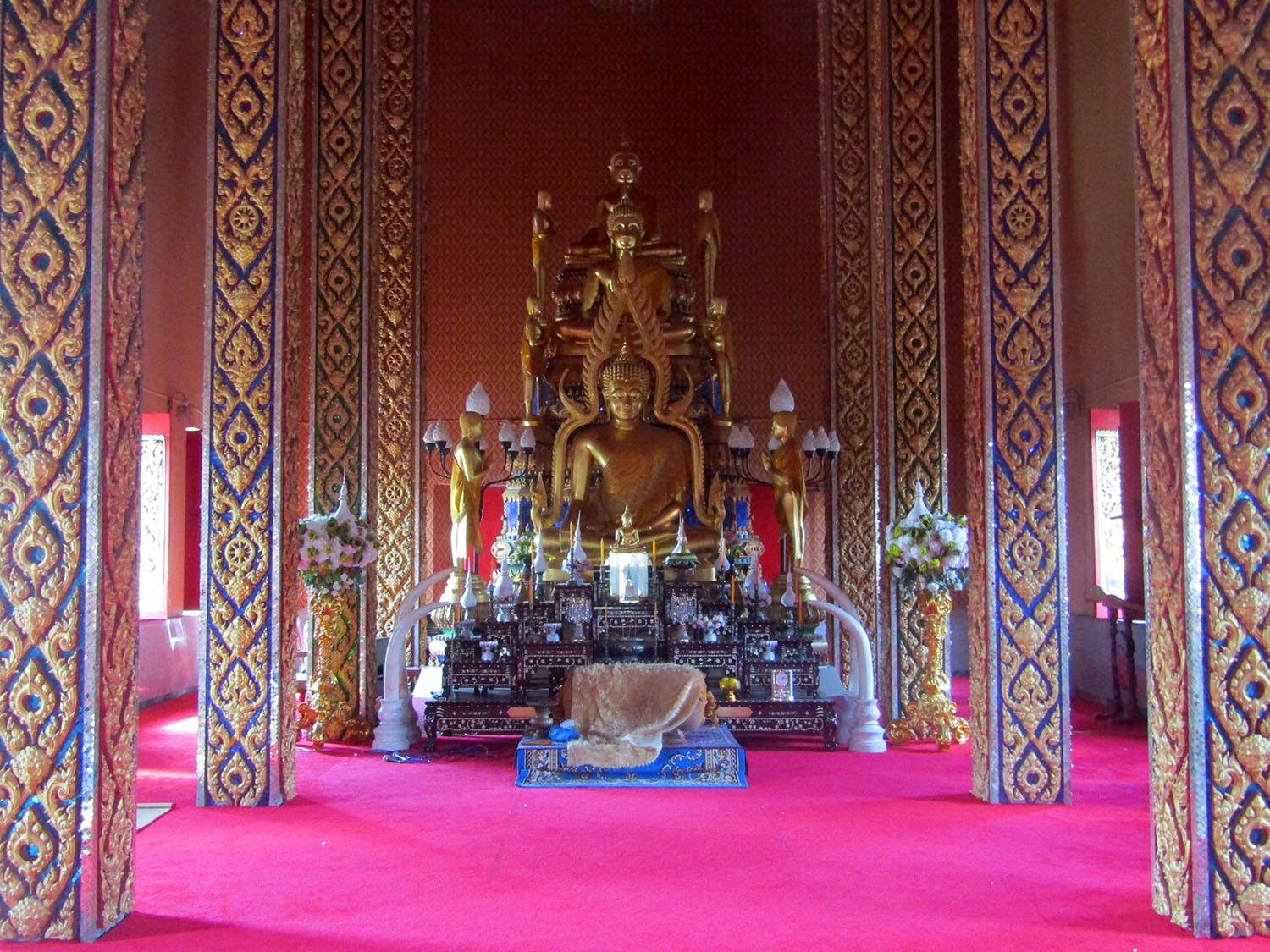 Wat Bueng Phra Lan Chai, Roi-Et
Wat Bueng Phra Lan Chai, Roi-Et
Roi Et Aquarium……..Also located on the edge of Beung Plan Chai, the Roi Et Aquarium is devoted to the freshwater fish species found in the region. Although small, it contains more fish species than you would imagine. In the centre of the building is the popular tunnel, through the main tank where the larger fish are kept.
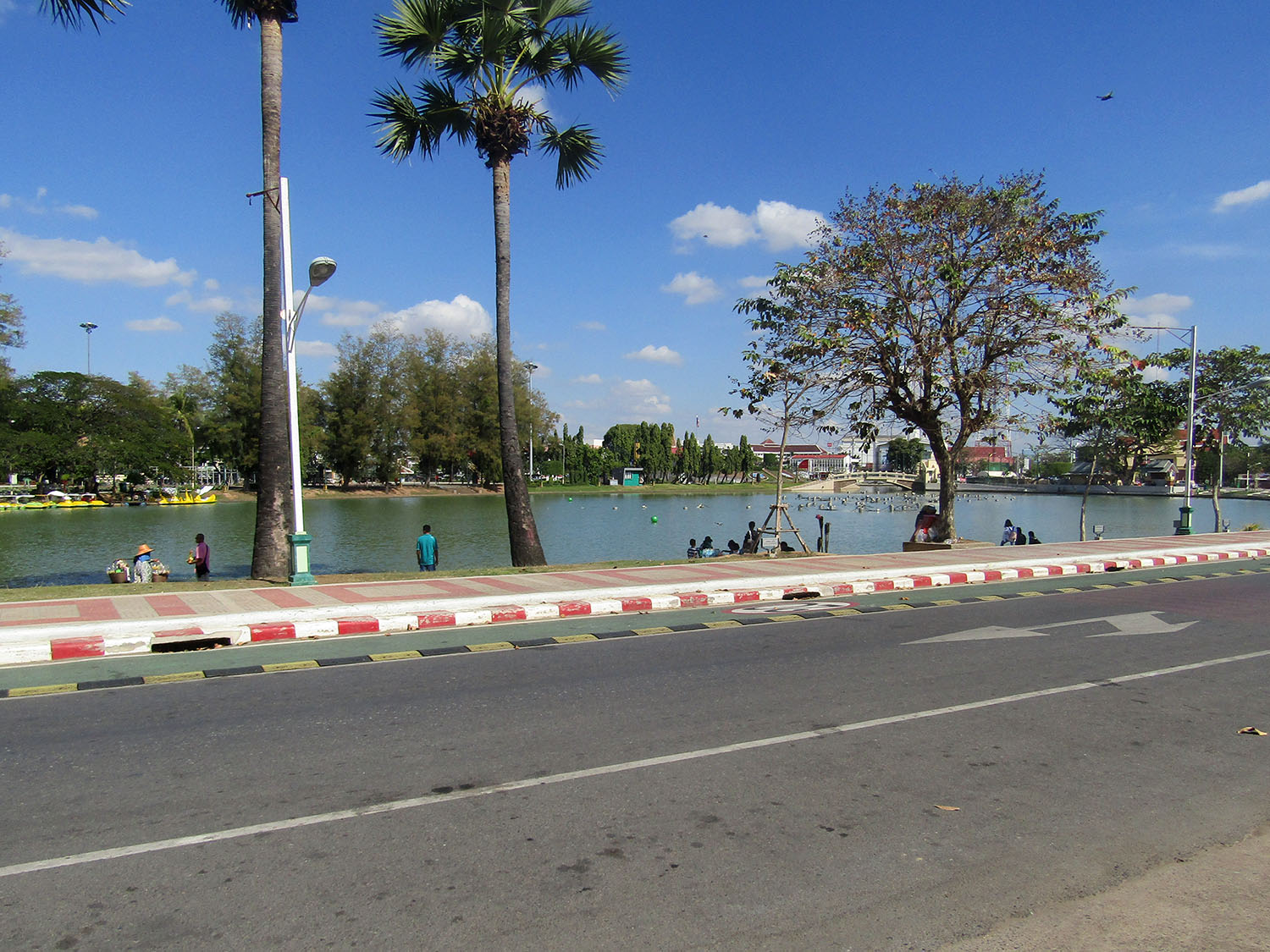
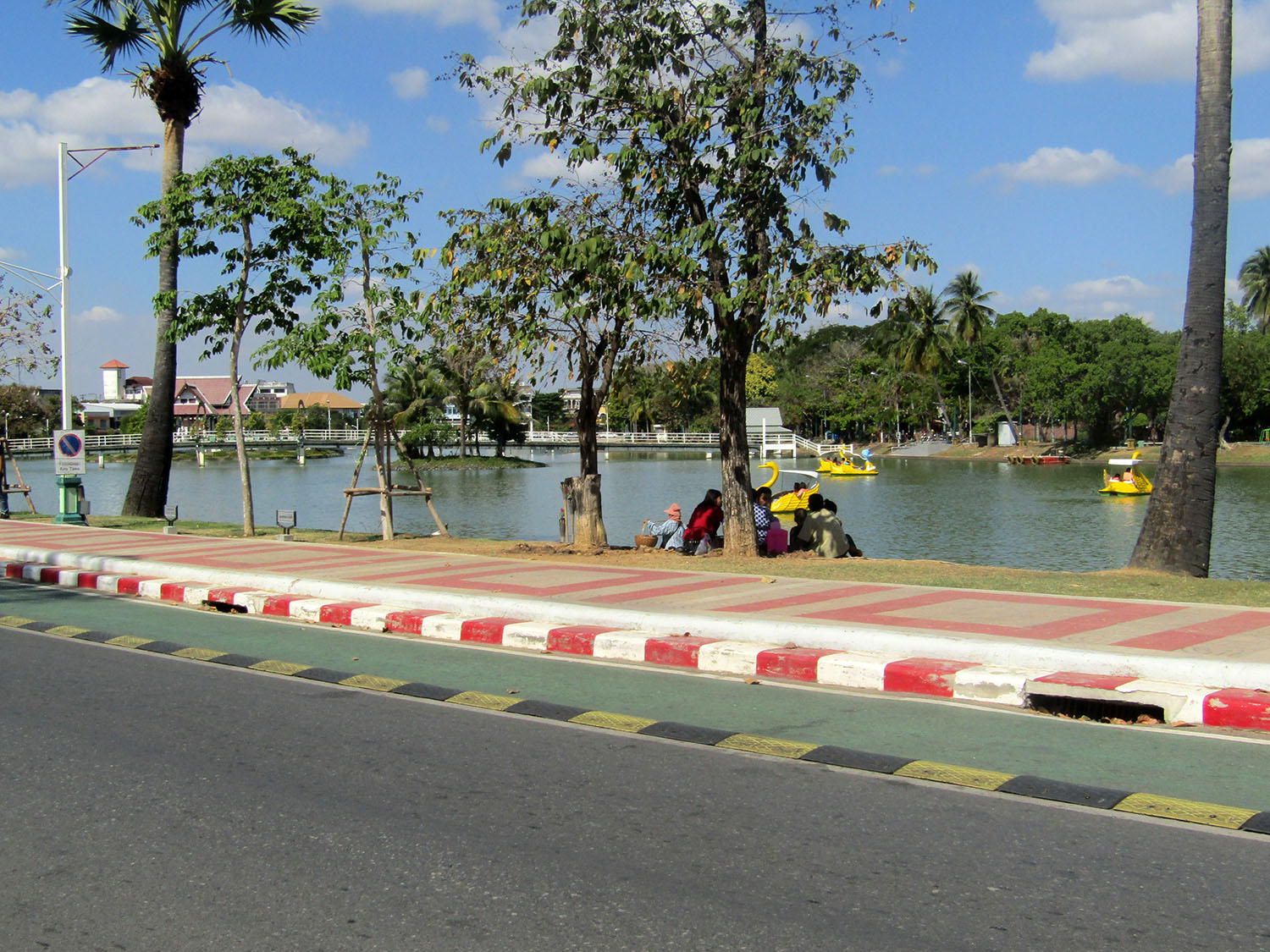
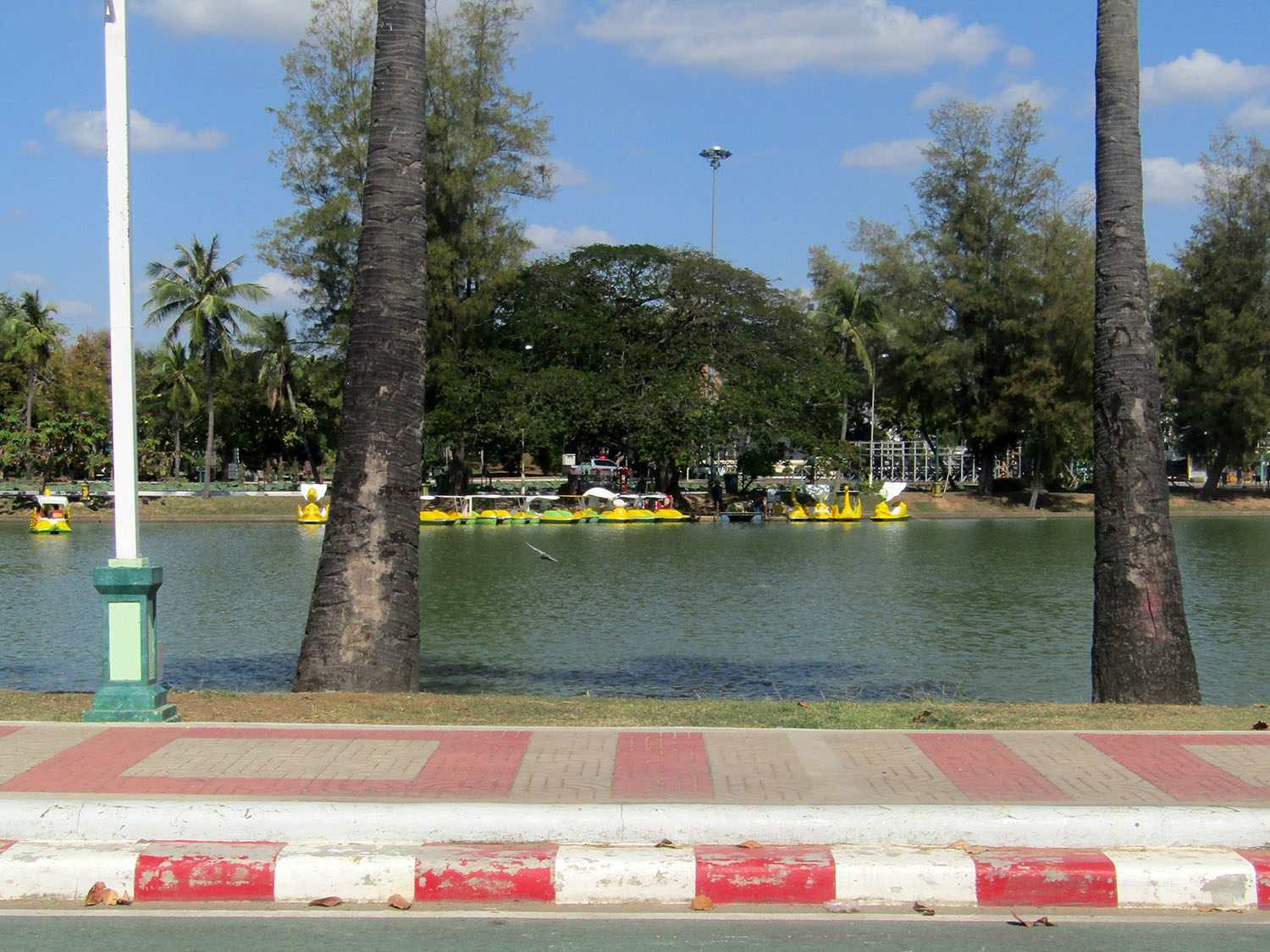
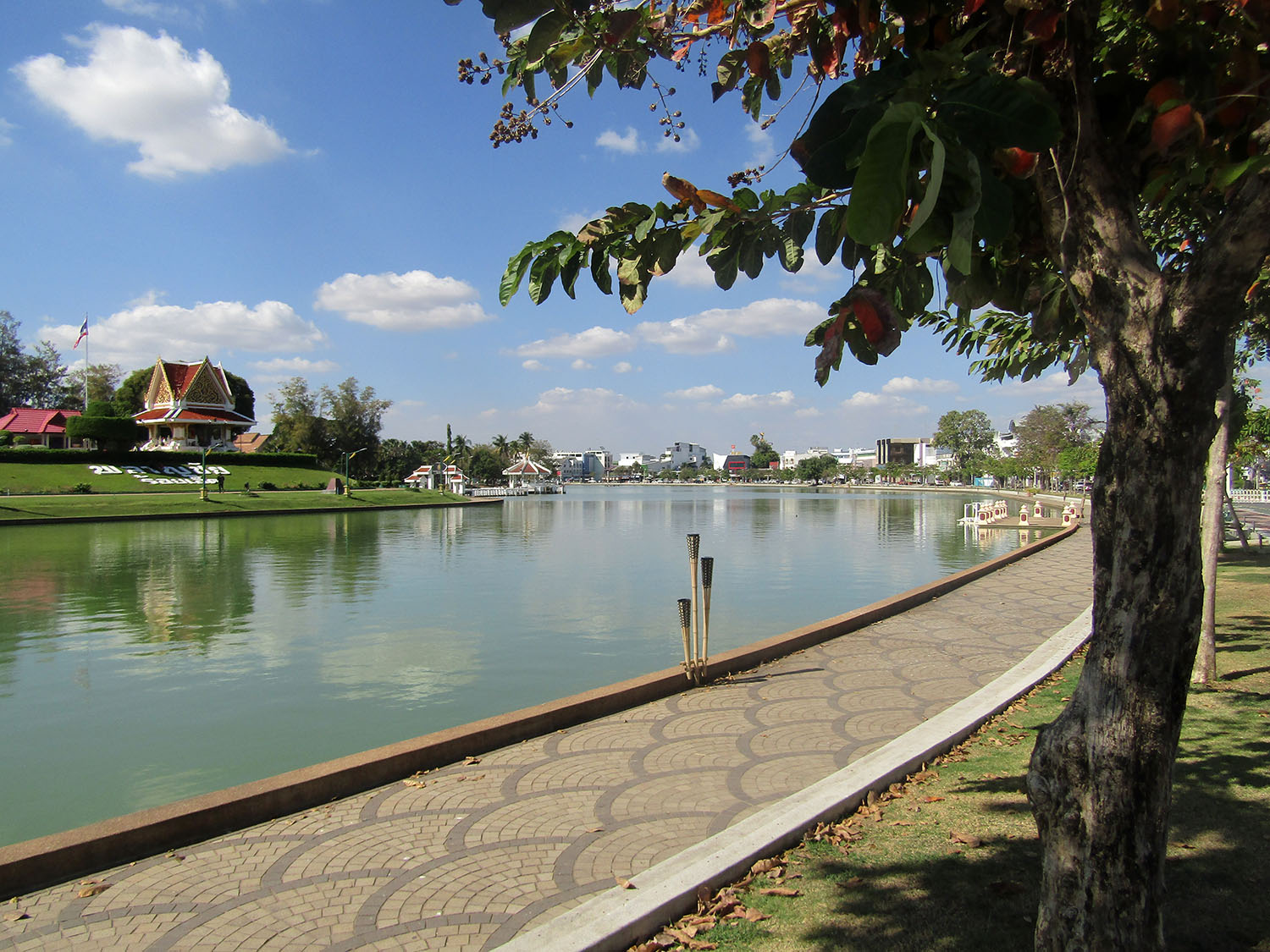
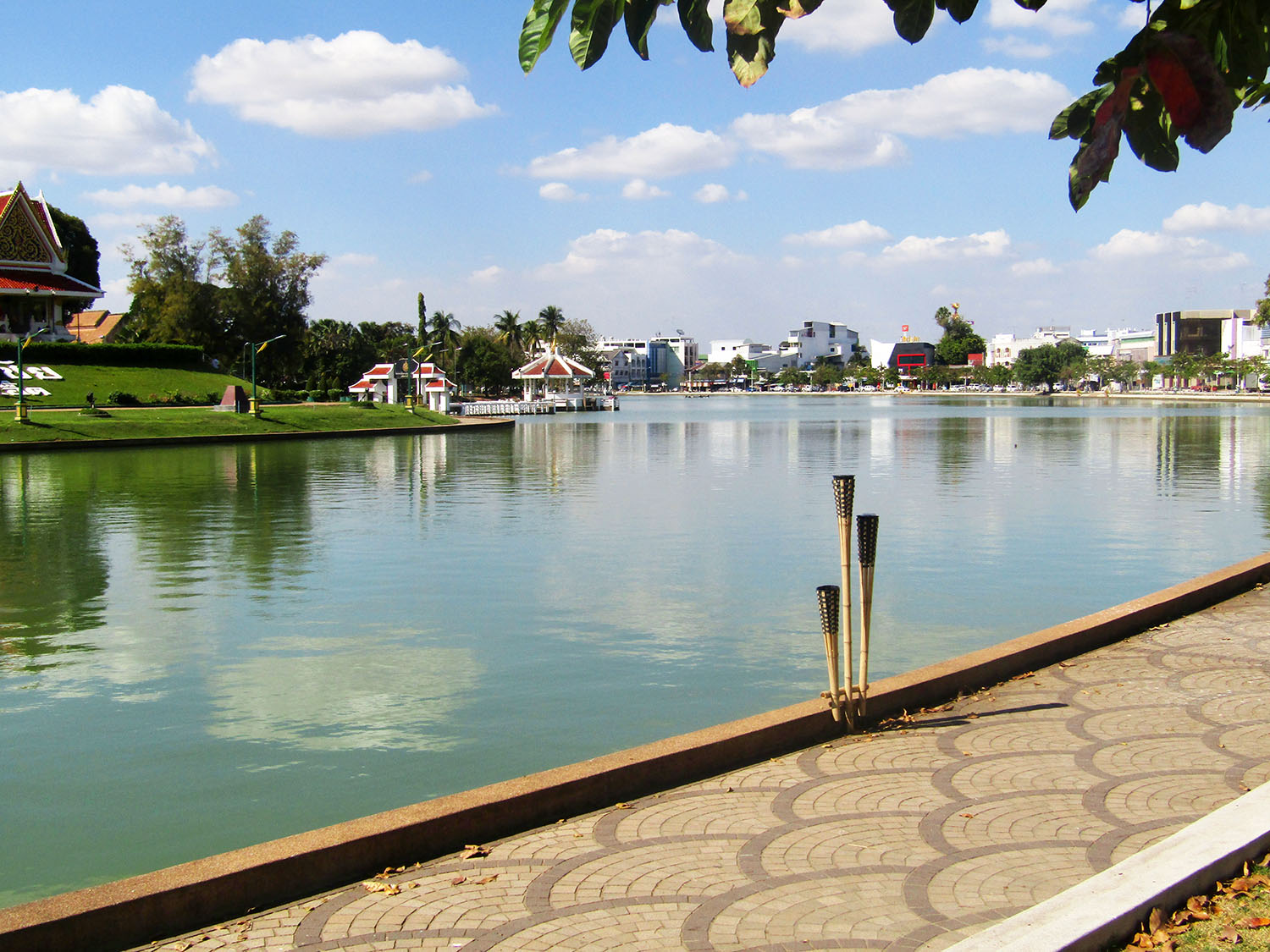
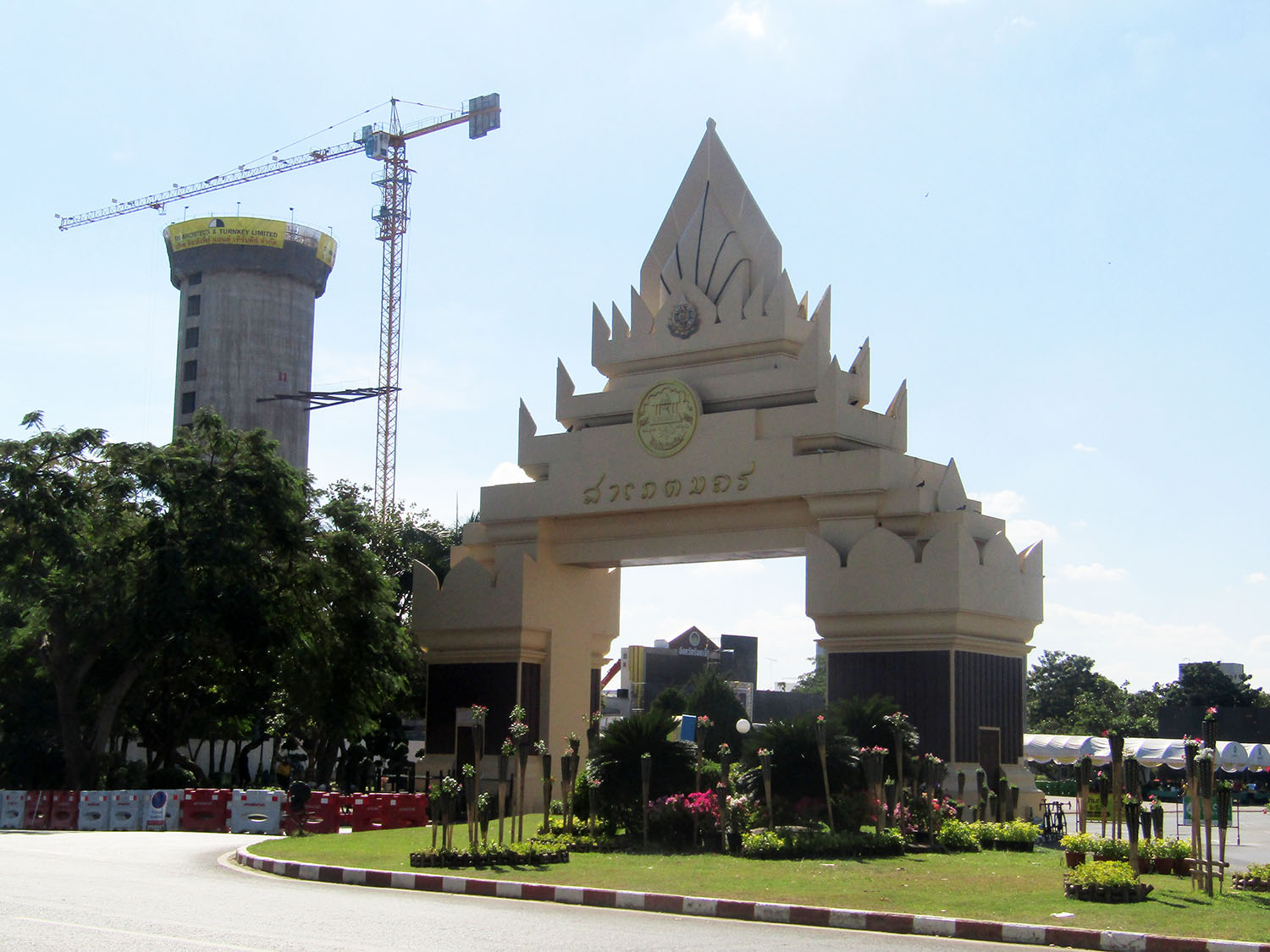 Beung Plan Chai (Plan Chai Lake), Roi-Et
Beung Plan Chai (Plan Chai Lake), Roi-Et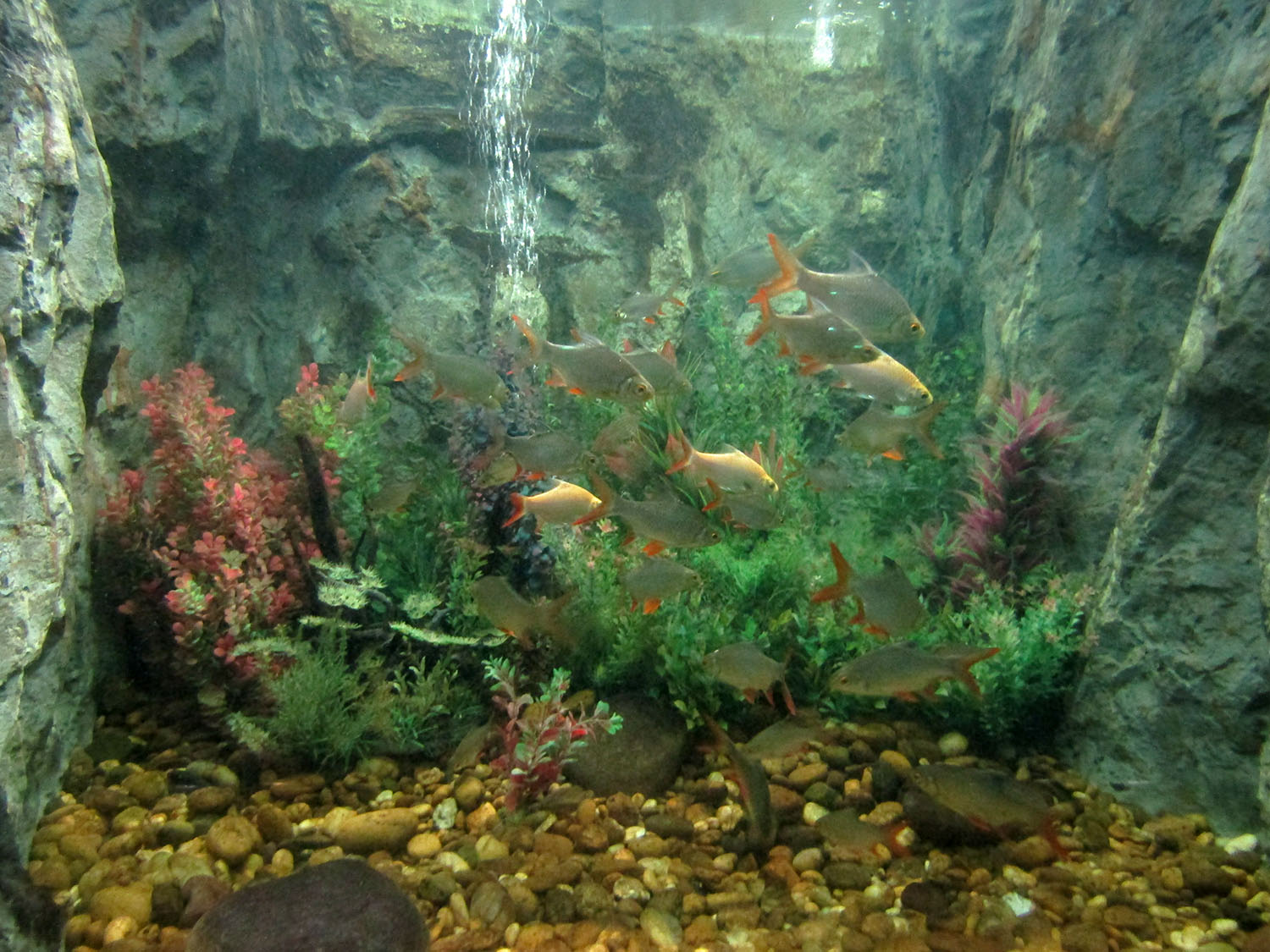
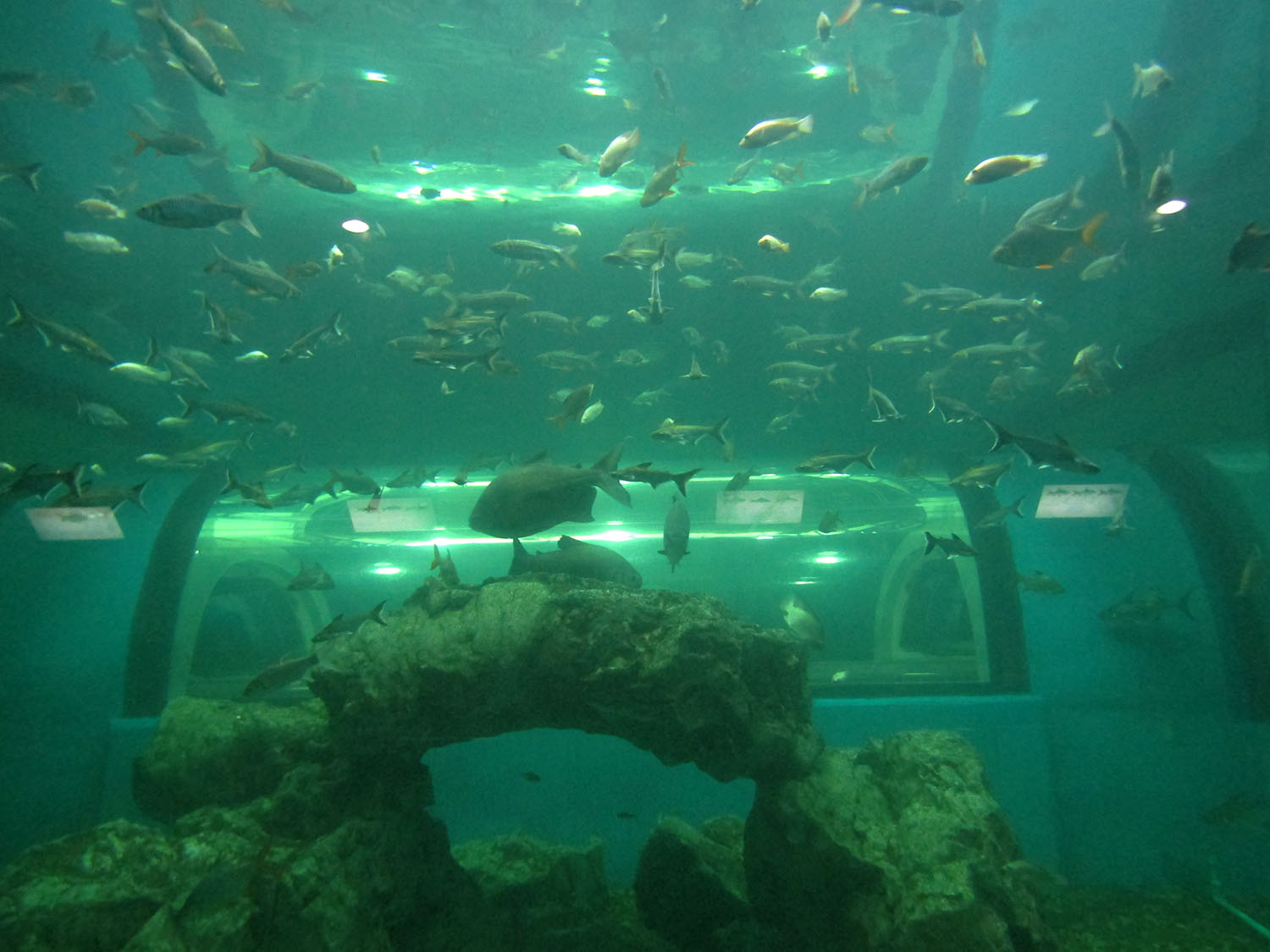
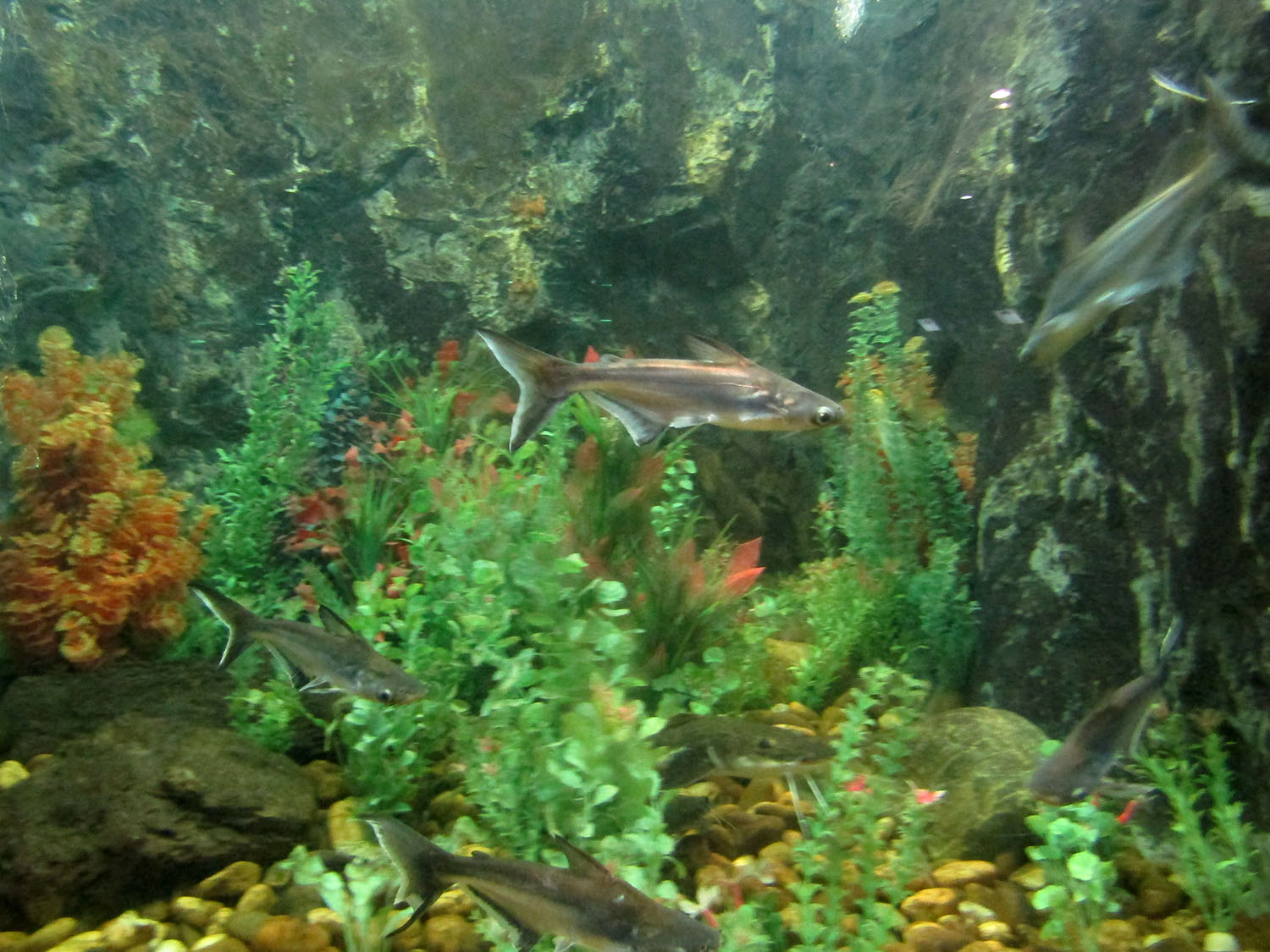
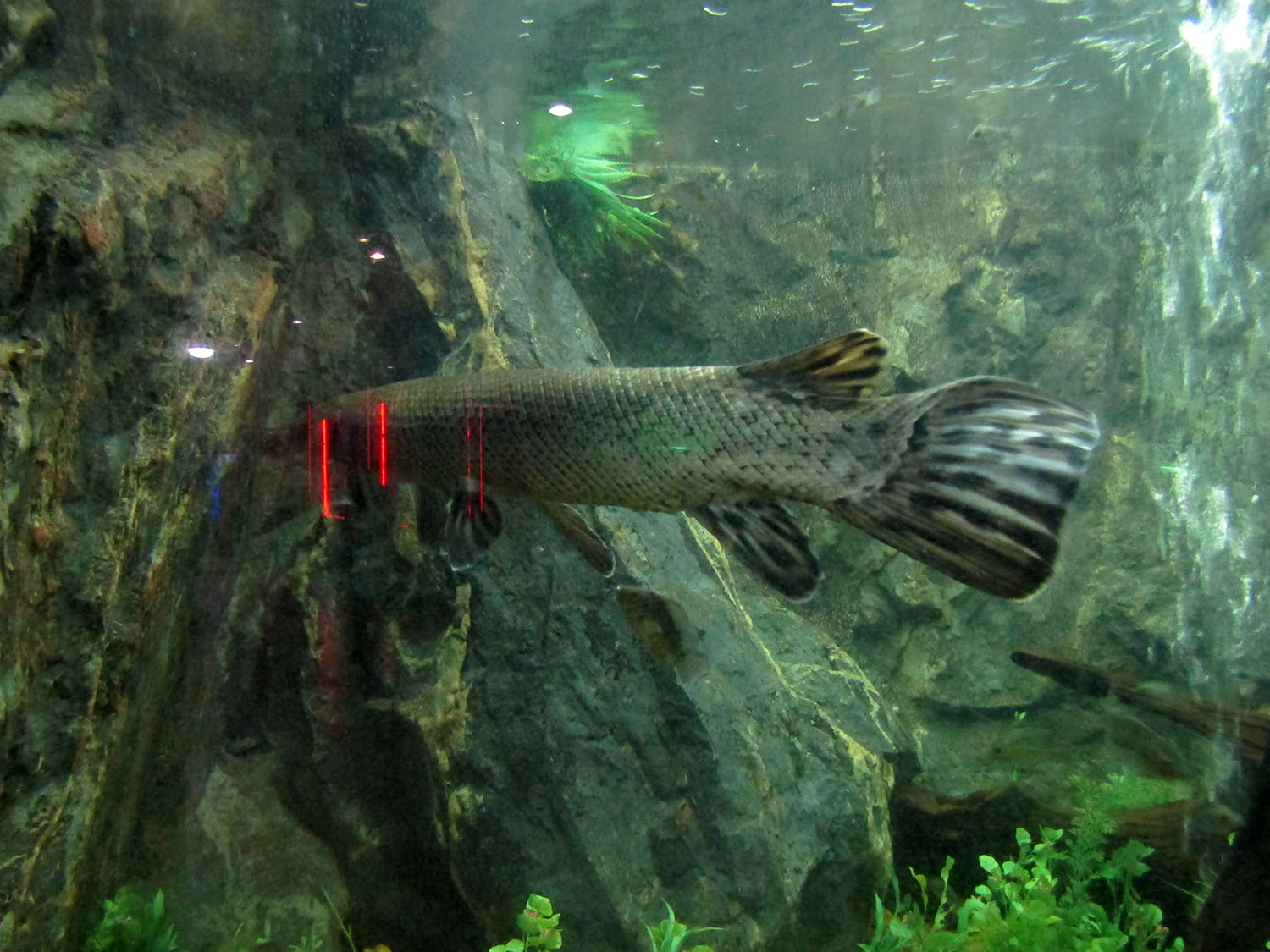
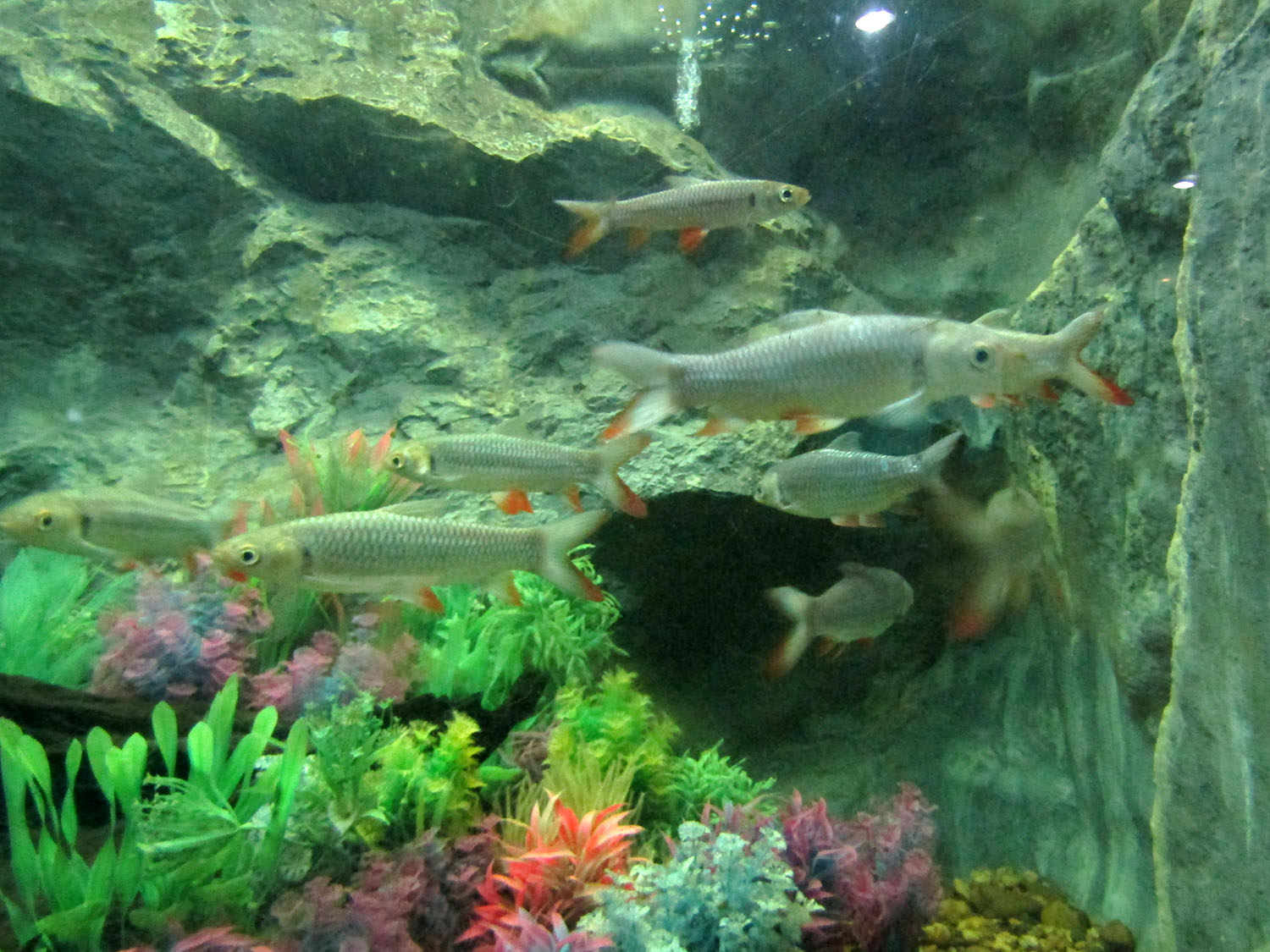
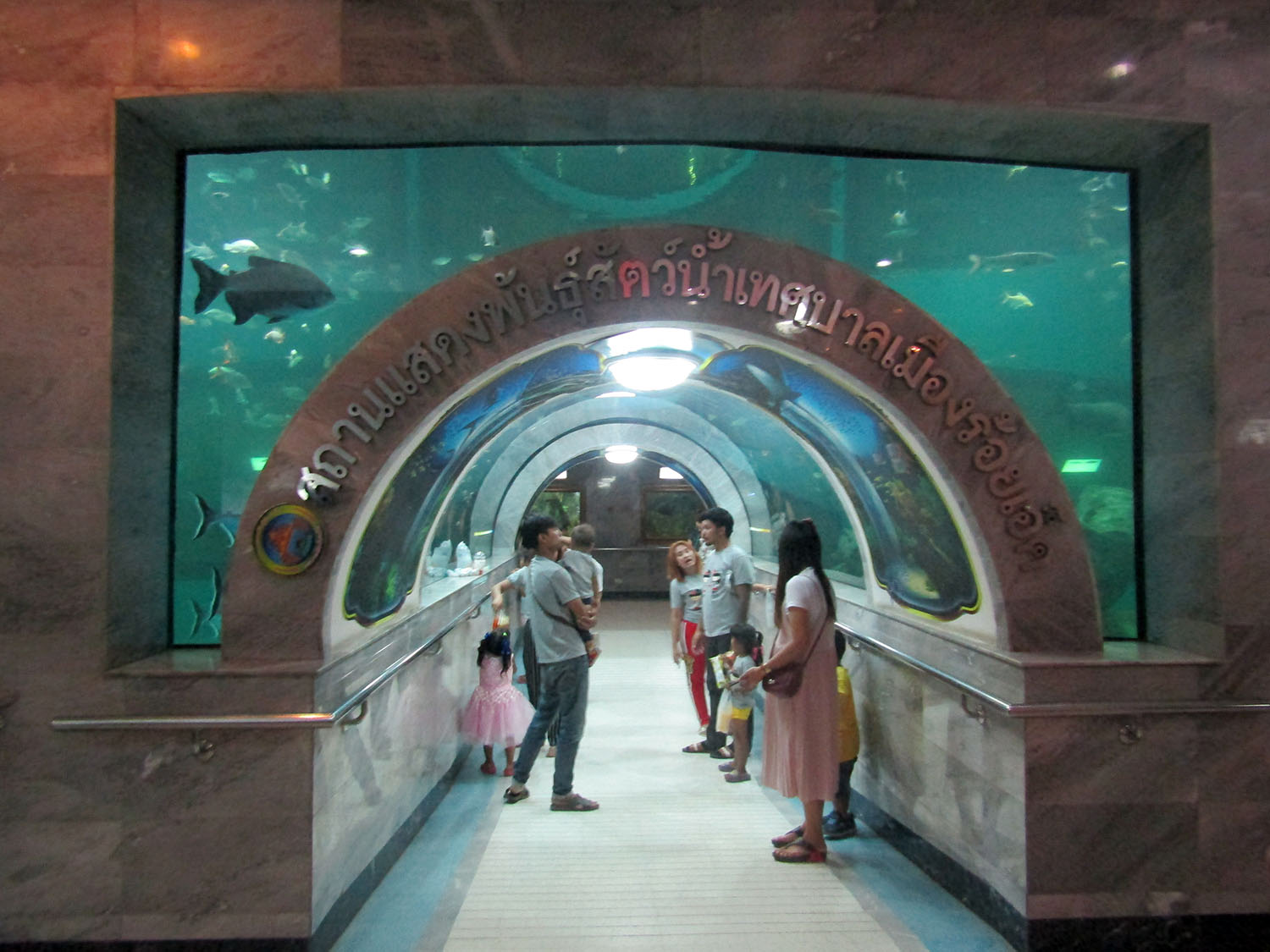
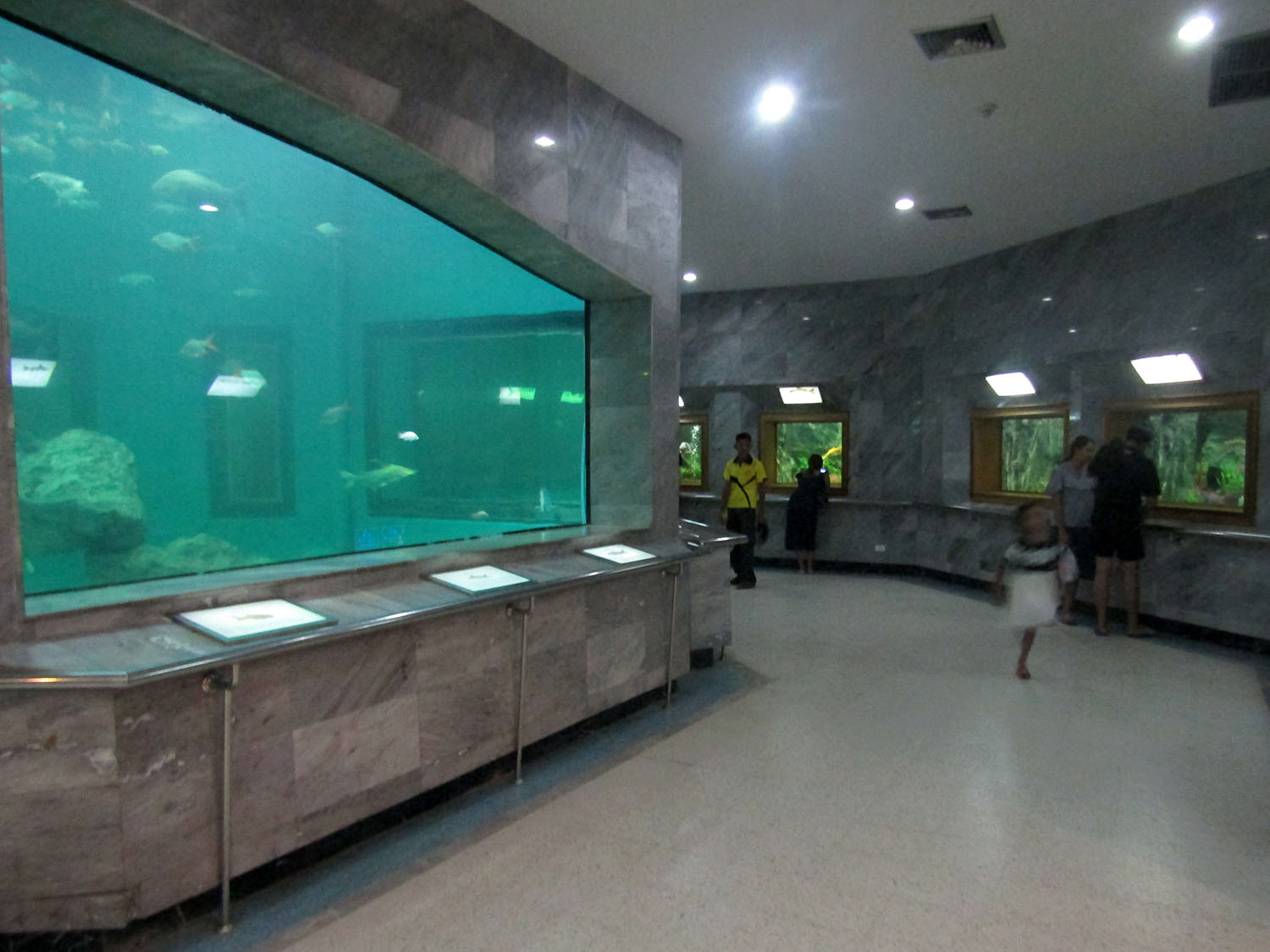
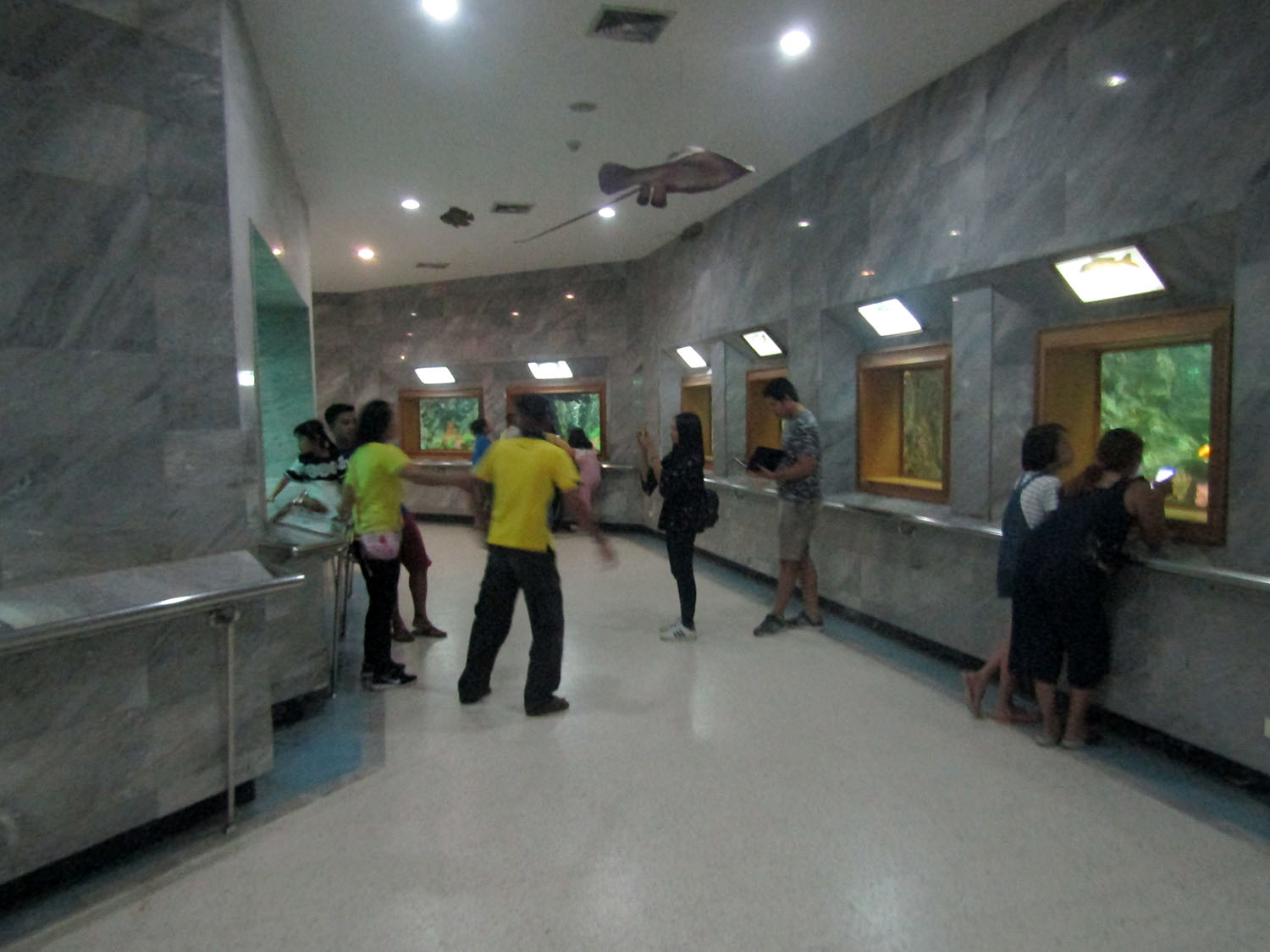
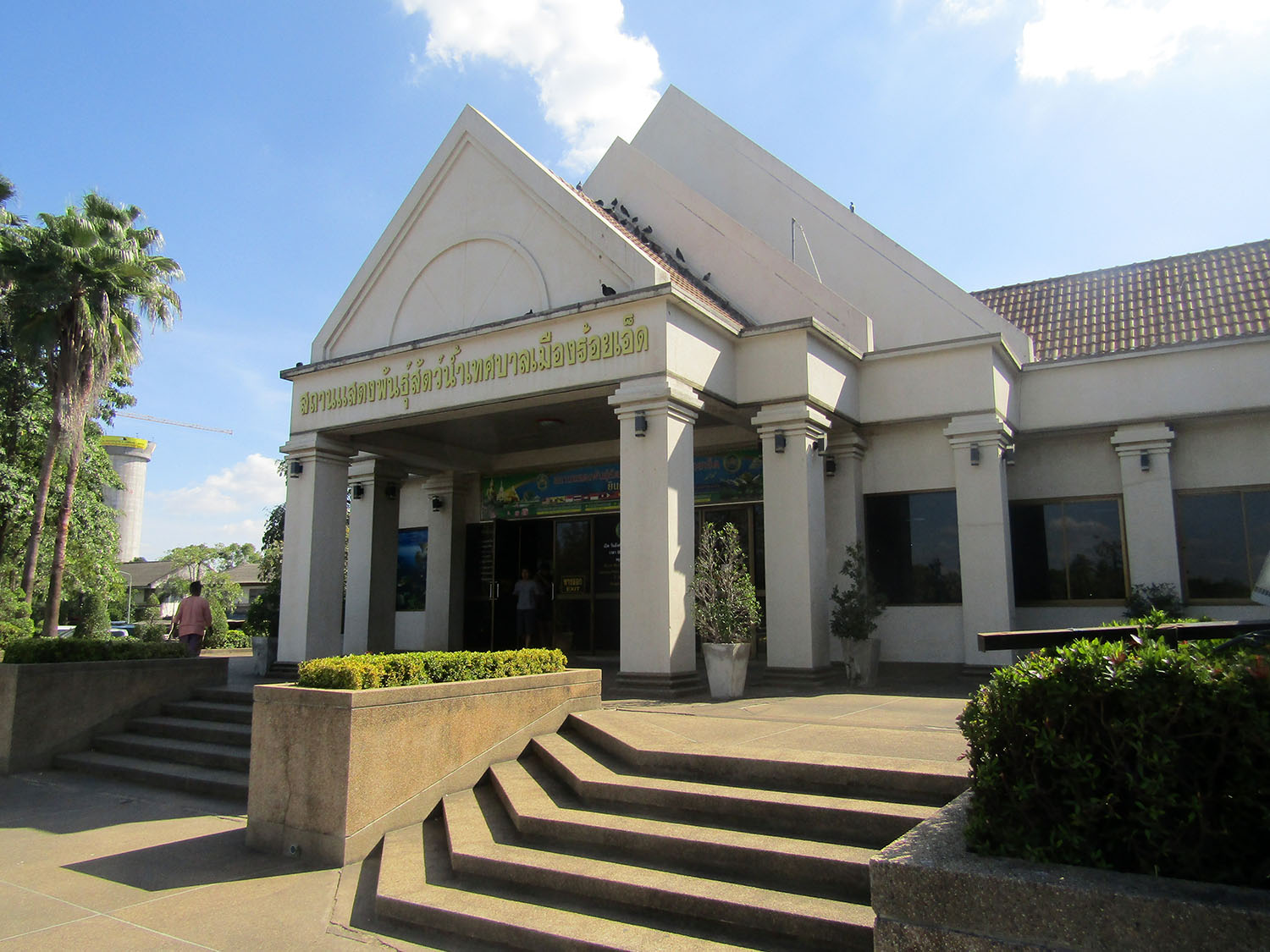 Roi-Et Aquarium, Roi-Et
Roi-Et Aquarium, Roi-Et
City Pillar Shrine……..The City Pillar Shrine (Lak Mueang – literally love the city) in Roi Et is located on an island in the Beung Plan Chai. It is connected to the edge of the lake via a bridge on the northern side.
Lak Mueang are city pillars found in most cities of Thailand. Usually the pillar is housed in a shrine which is also believed to house Chao Pho Lak Mueang the city spirit deity. Its constructed through the continuation of ancient traditions and Brahman's customs believed as something to do with the Held, the single city pillar ceremony (Held “Lak Muang”) which is made of an Acacia wood Chaiyaphreuk before the construction of the city to be the centre of the soul for the citizens.
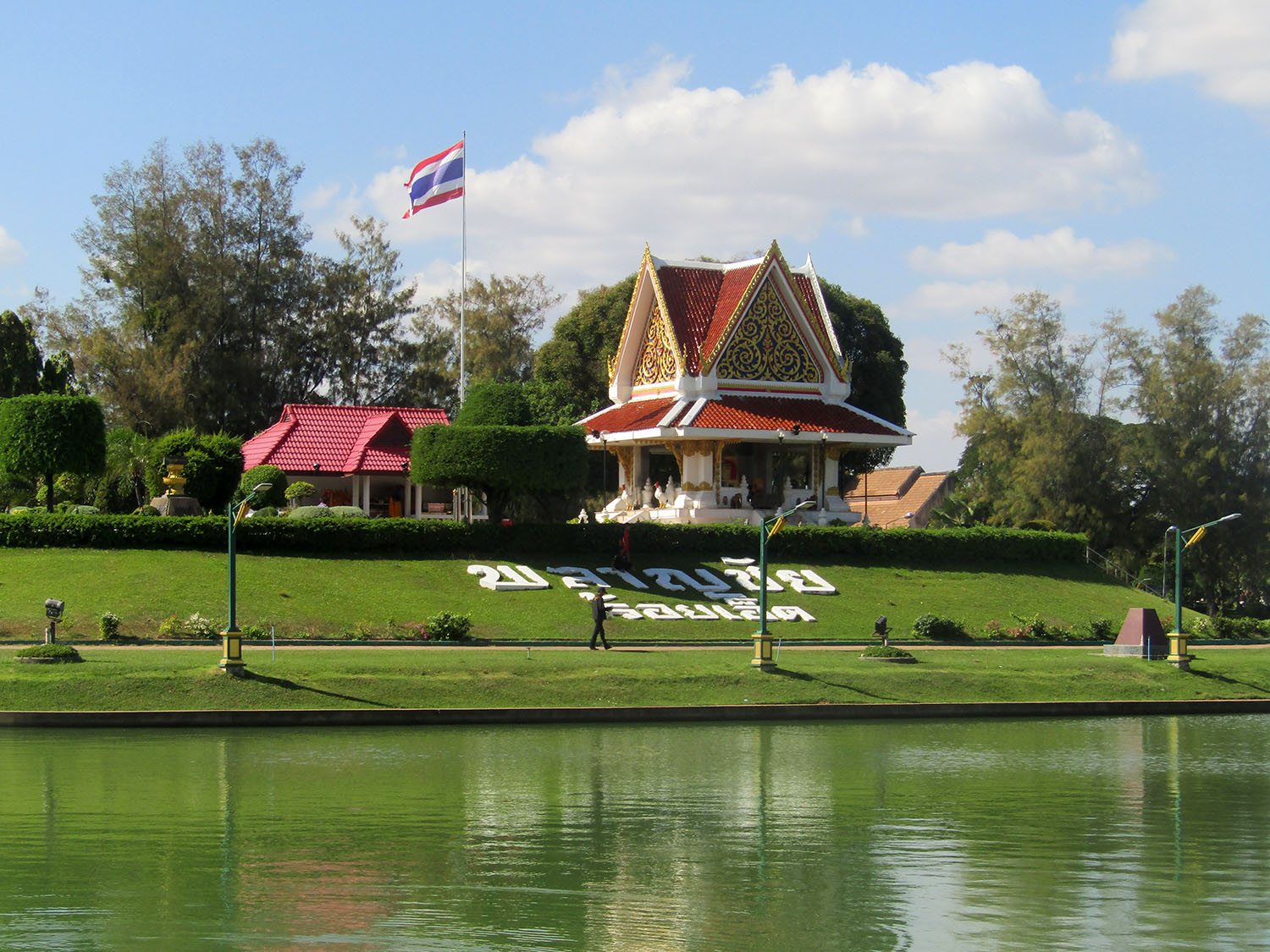
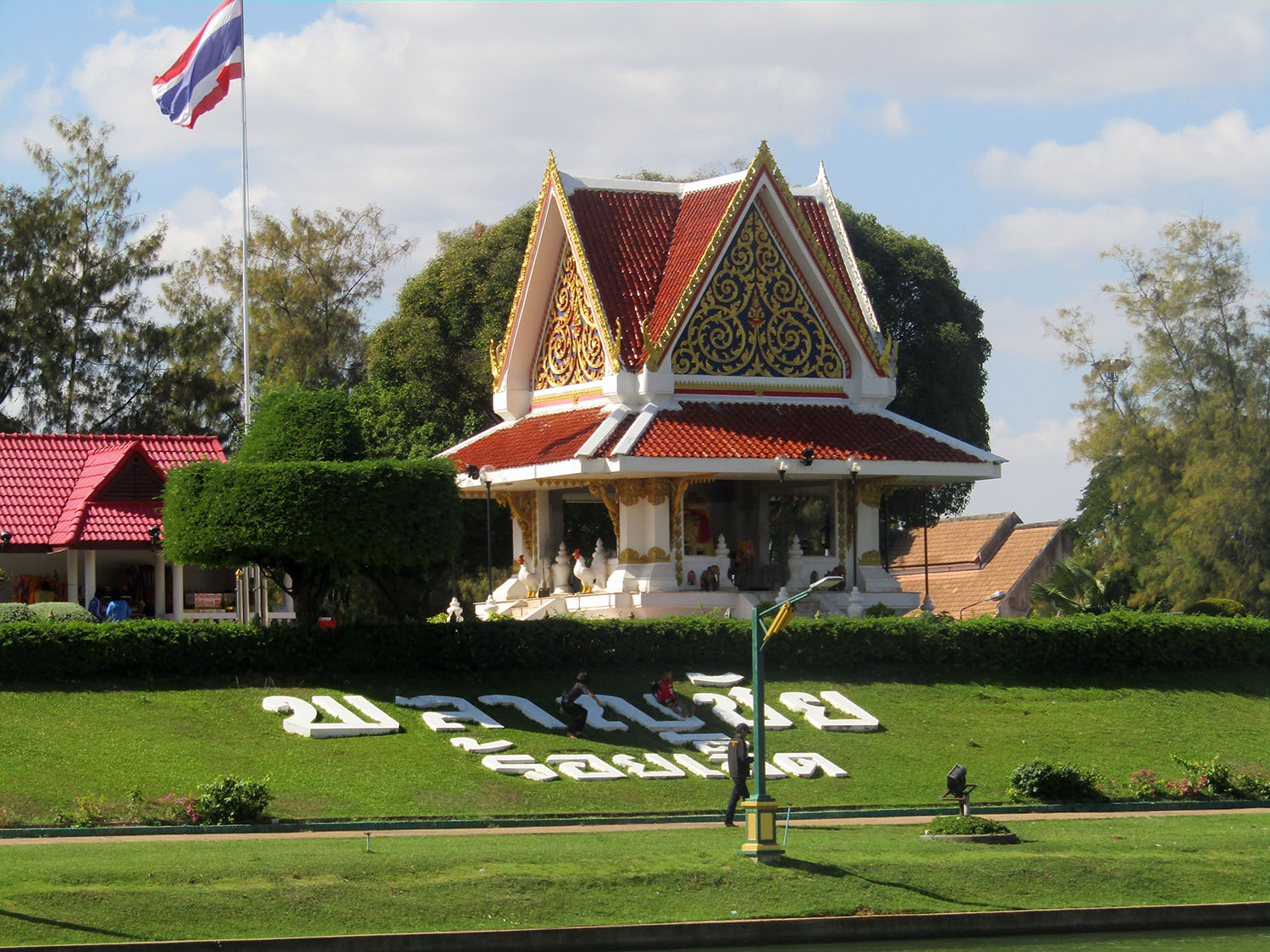
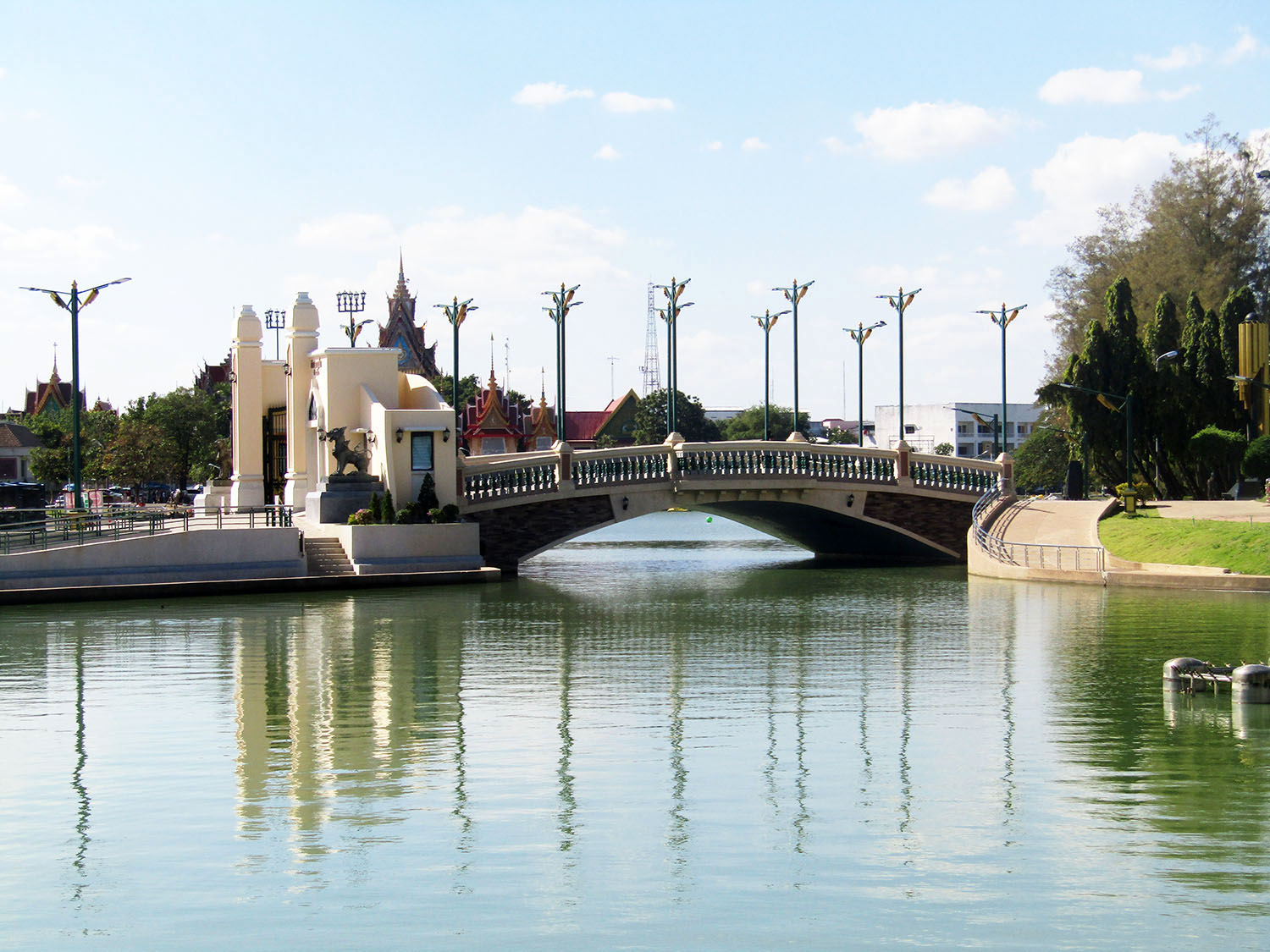 City Pillar Shrine, Roi-Et
City Pillar Shrine, Roi-Et
Our stay at Bueng Plan Chai allows us the take lunch here but this will be the last site visit in the city itself. Exiting the city, we head along Highway 2045 heading southwest then turning right on to rural road 4009. Here about 20 km from the city is Wat Pa Kung Si Somdet which is built in a style unusual in Thailand.
Wat Pa Kung……..Wat Pa Kung is home to ‘Chedi Pa Kung’, dubbed the Borobudur of Thailand. With similar architectural style to the 9th century Buddhist temple in central Java, Indonesia, it was built by the followers of Luang Pu Sri, one of the most revered and famous monks in the northeast of Thailand, to commemorate the 90th anniversary of his birth. This chedi stands on a square multi-level base, the first level resembling a vault decorated with marbled tiles with access to the upper floors.
Wat Pa Kung……..Wat Pa Kung is home to ‘Chedi Pa Kung’, dubbed the Borobudur of Thailand. With similar architectural style to the 9th century Buddhist temple in central Java, Indonesia, it was built by the followers of Luang Pu Sri, one of the most revered and famous monks in the northeast of Thailand, to commemorate the 90th anniversary of his birth. This chedi stands on a square multi-level base, the first level resembling a vault decorated with marbled tiles with access to the upper floors.
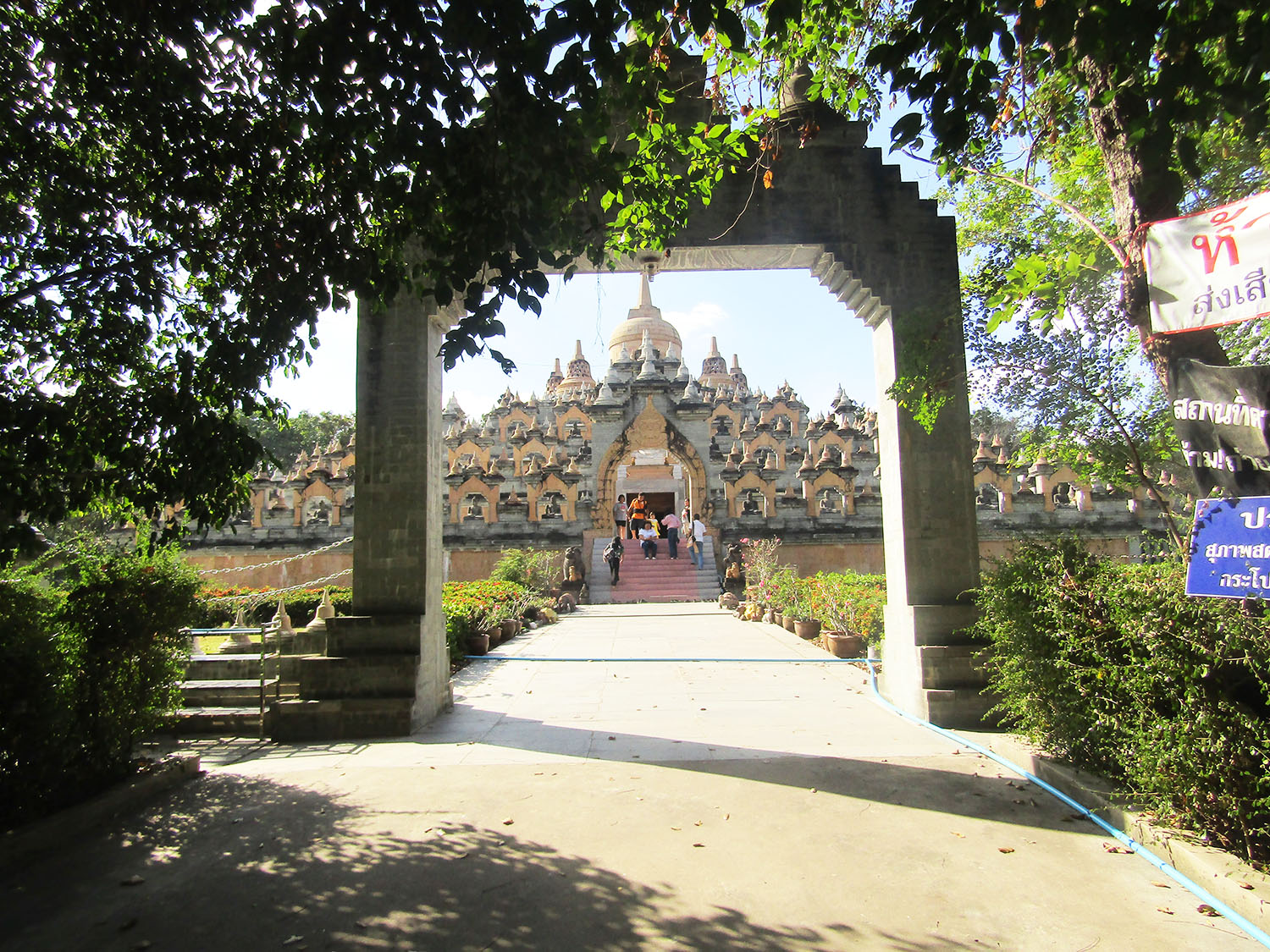
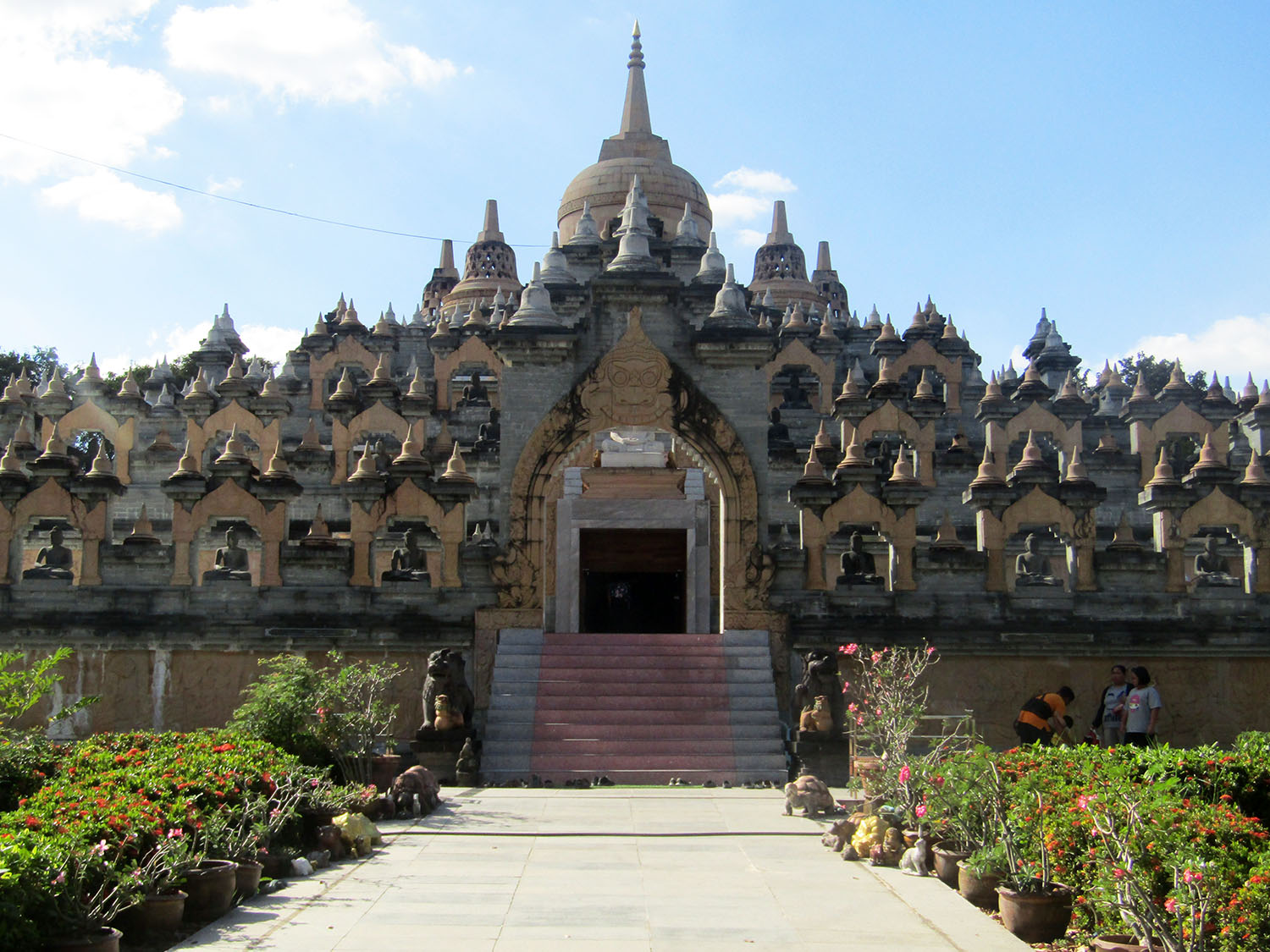
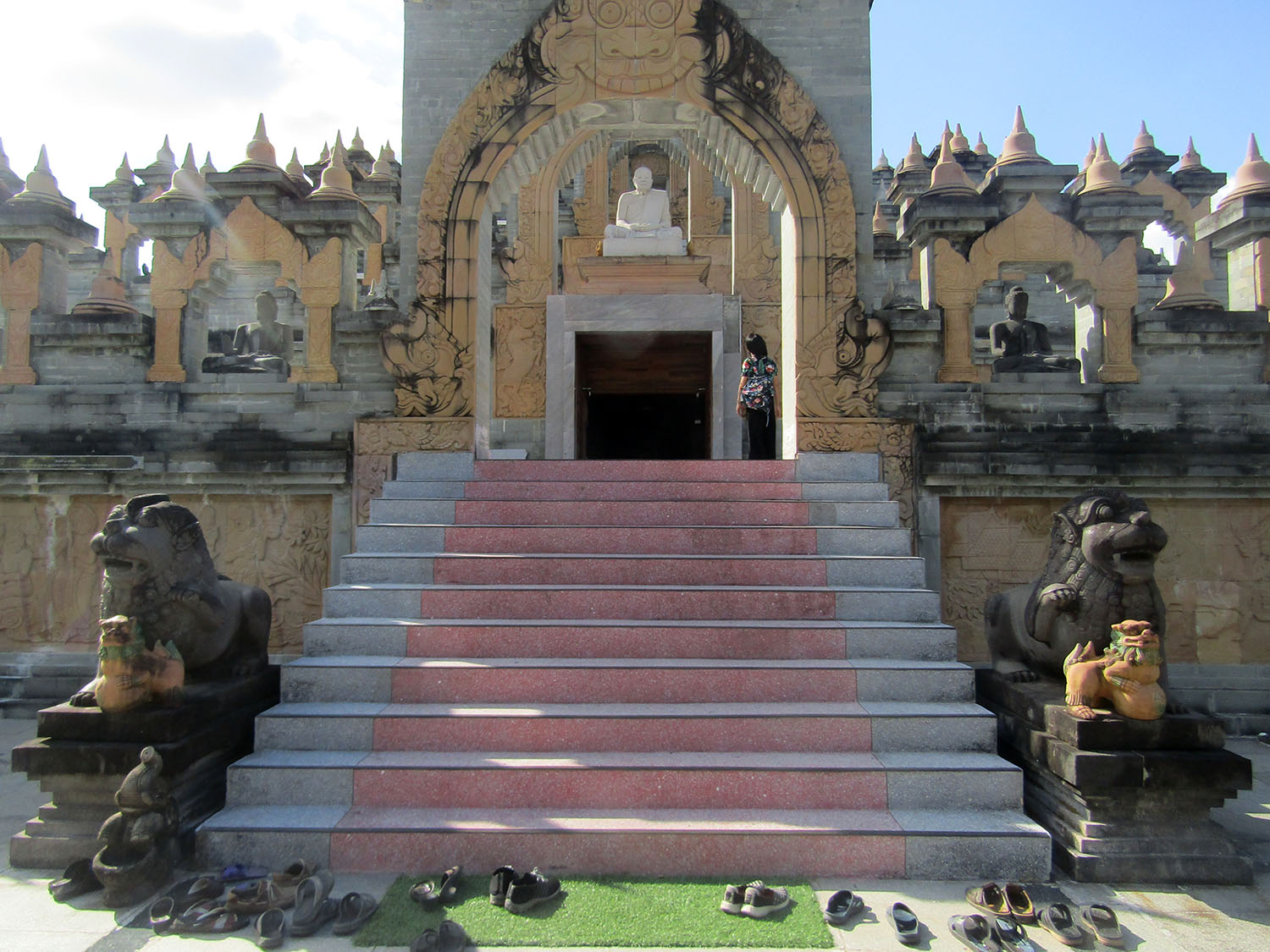
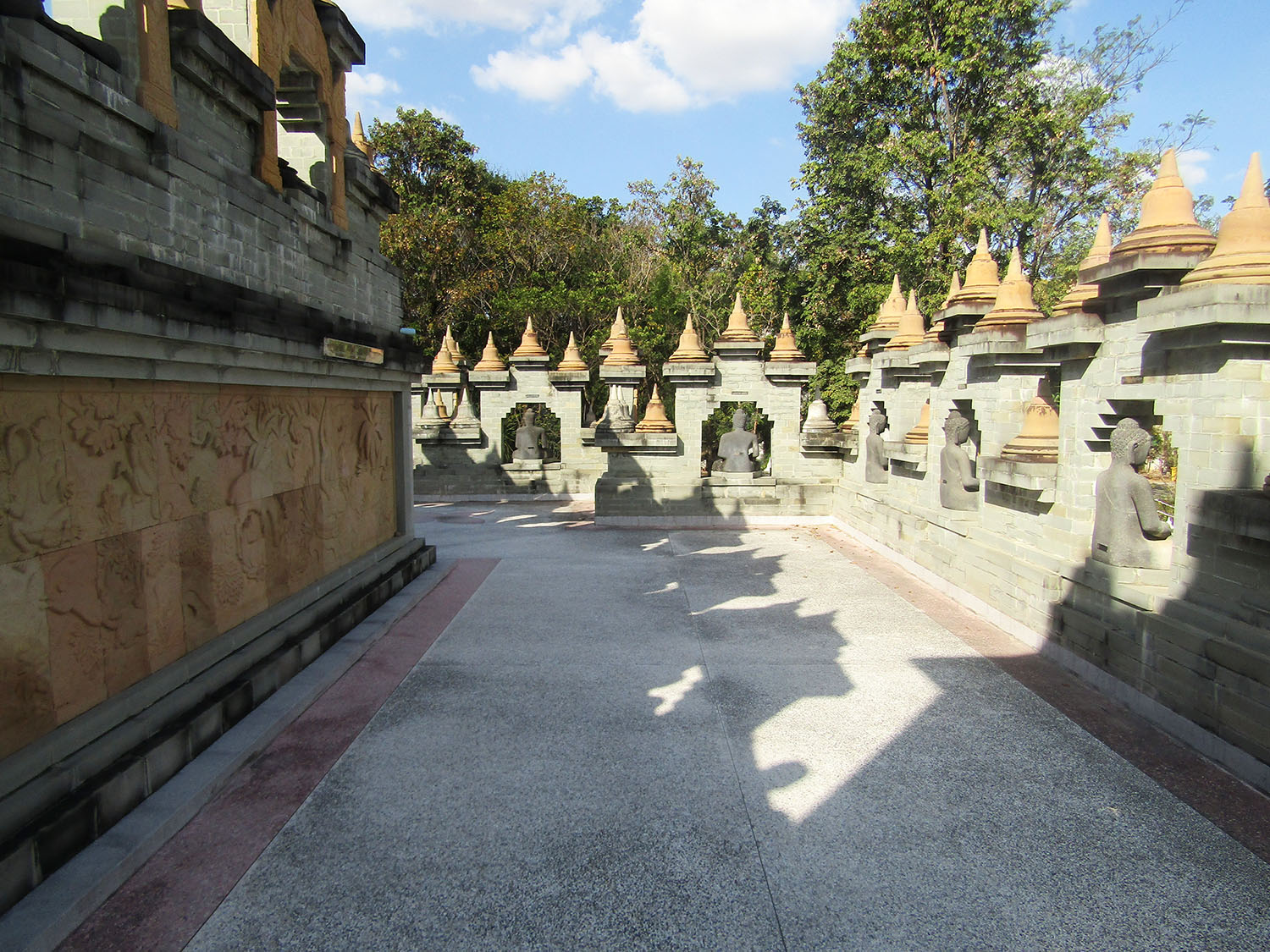
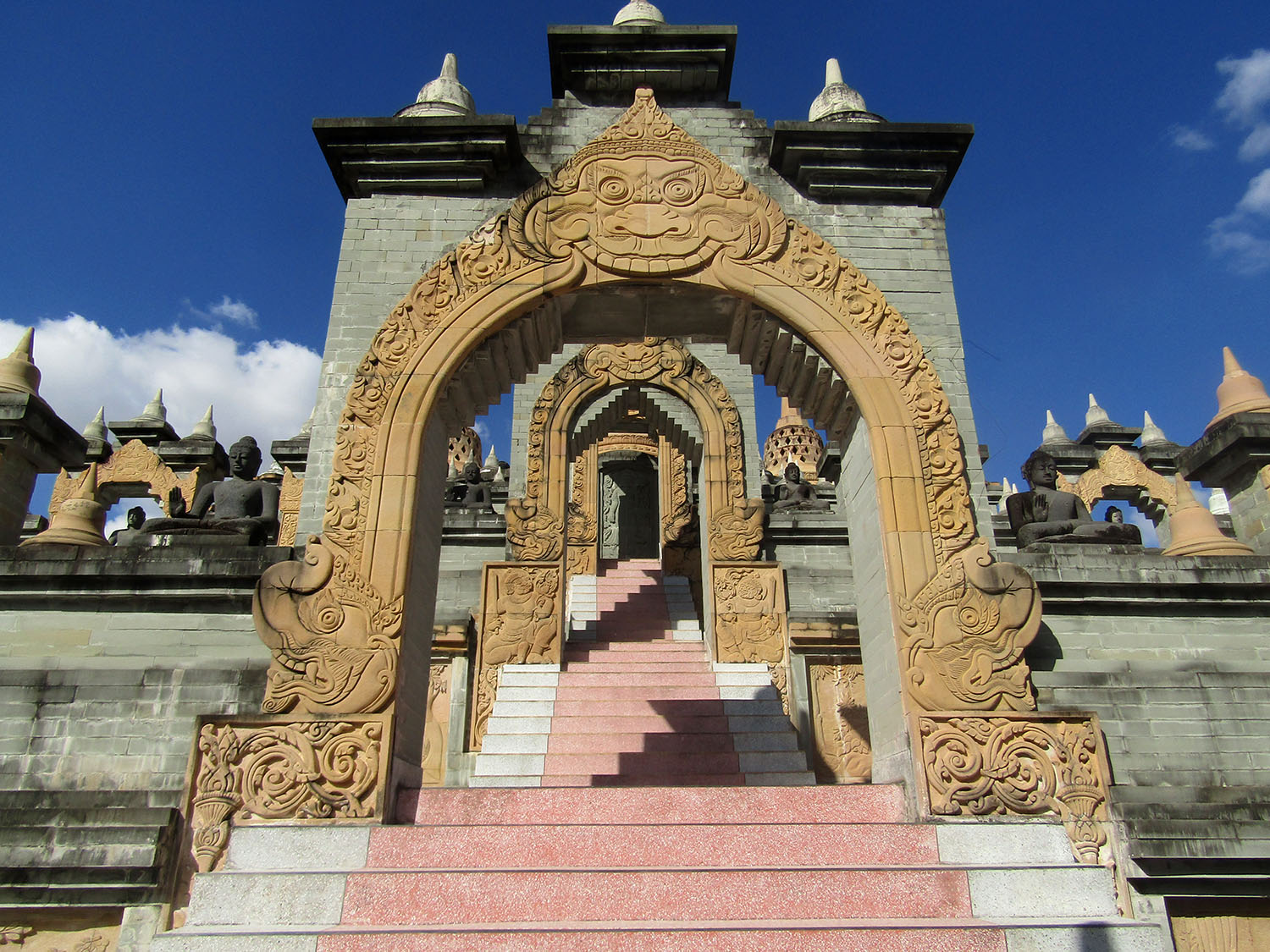
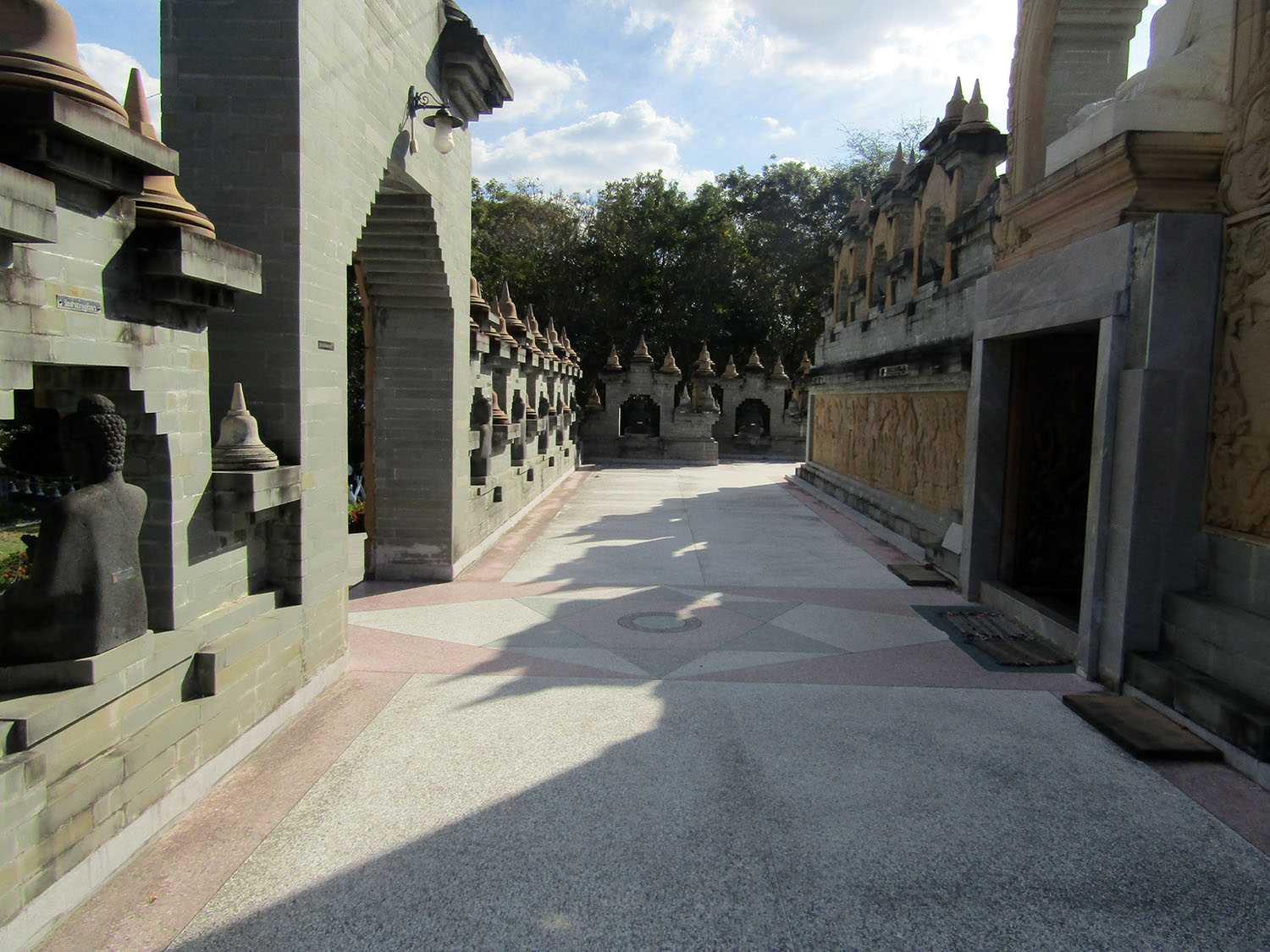
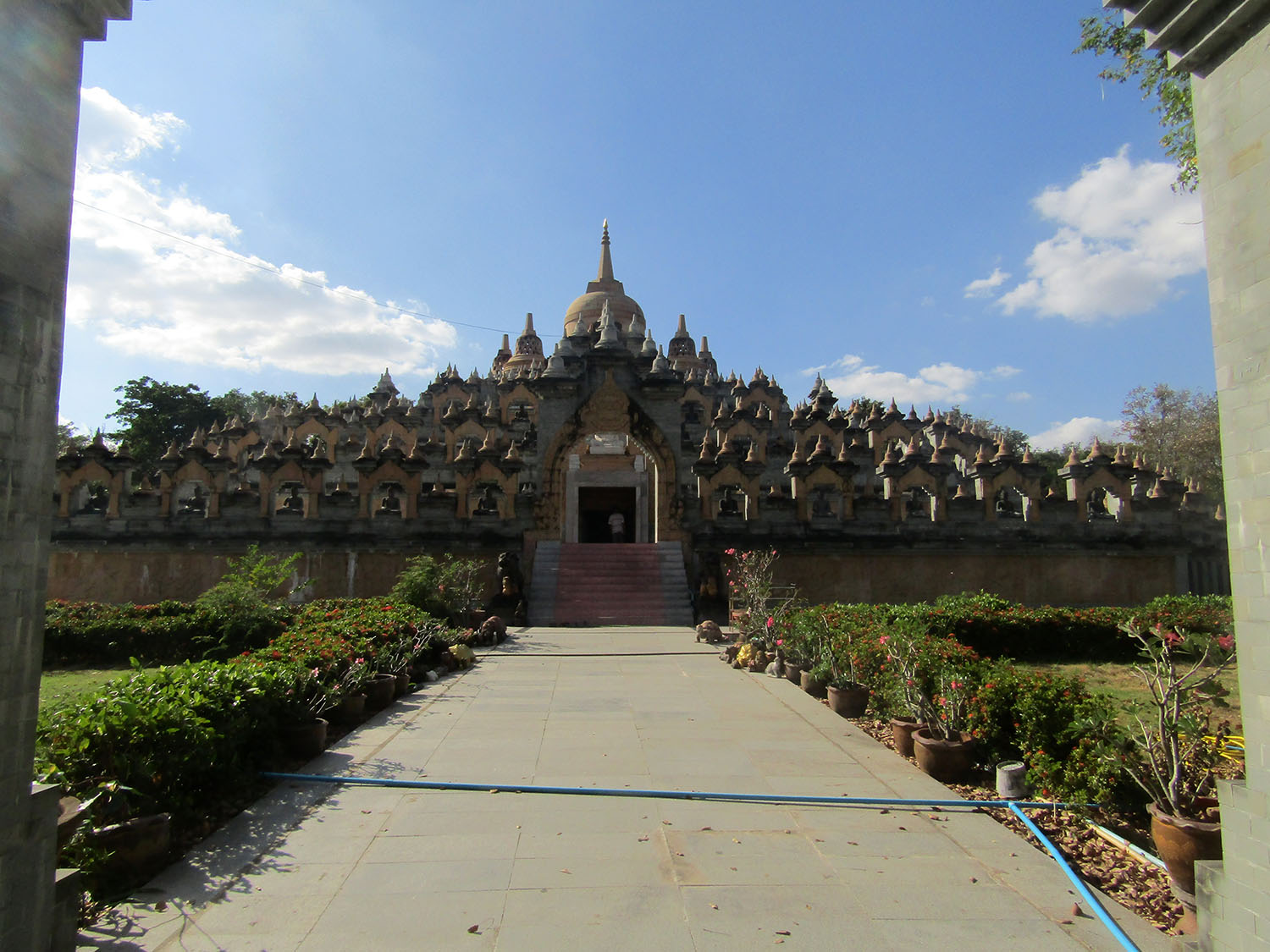
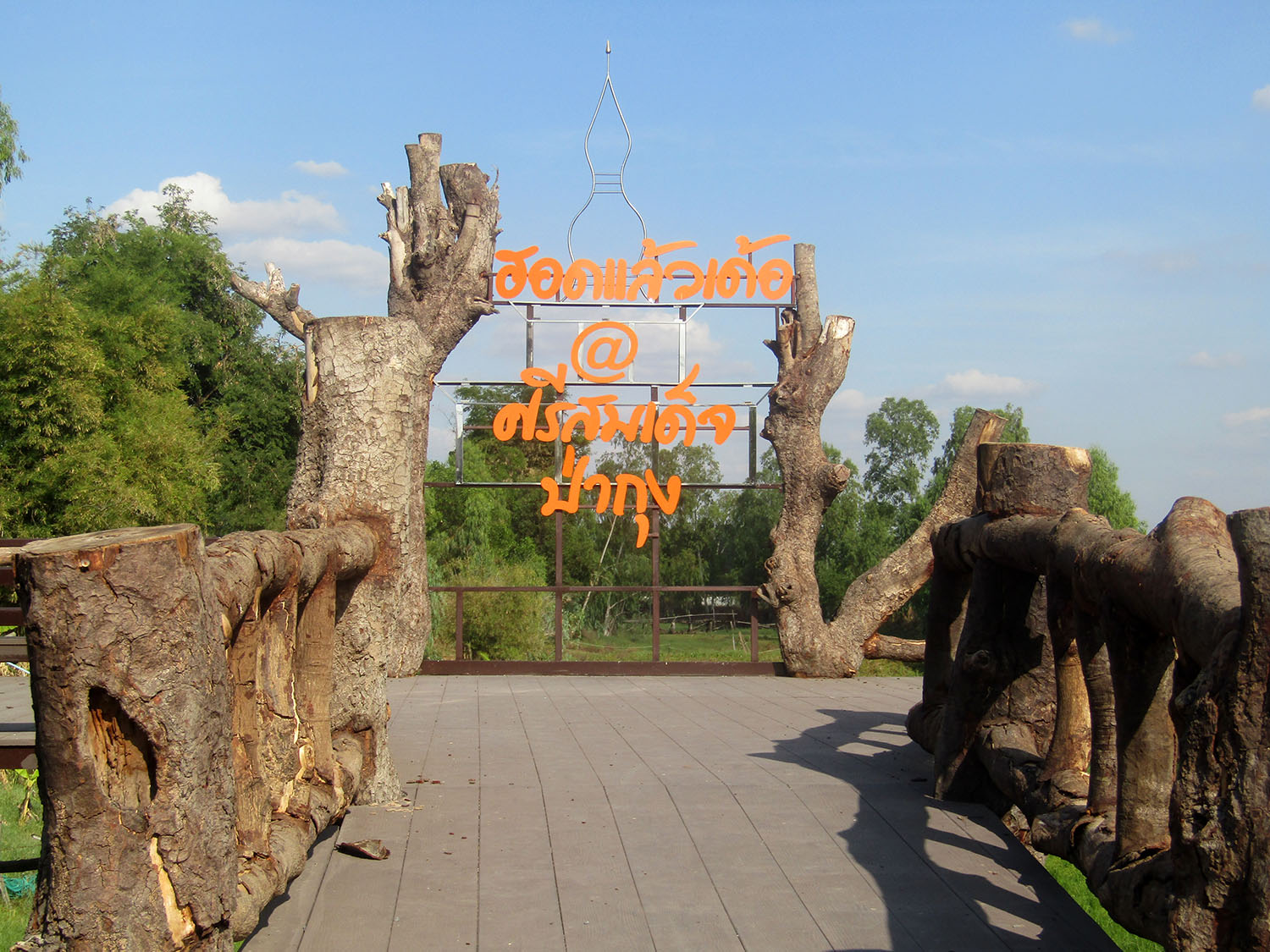
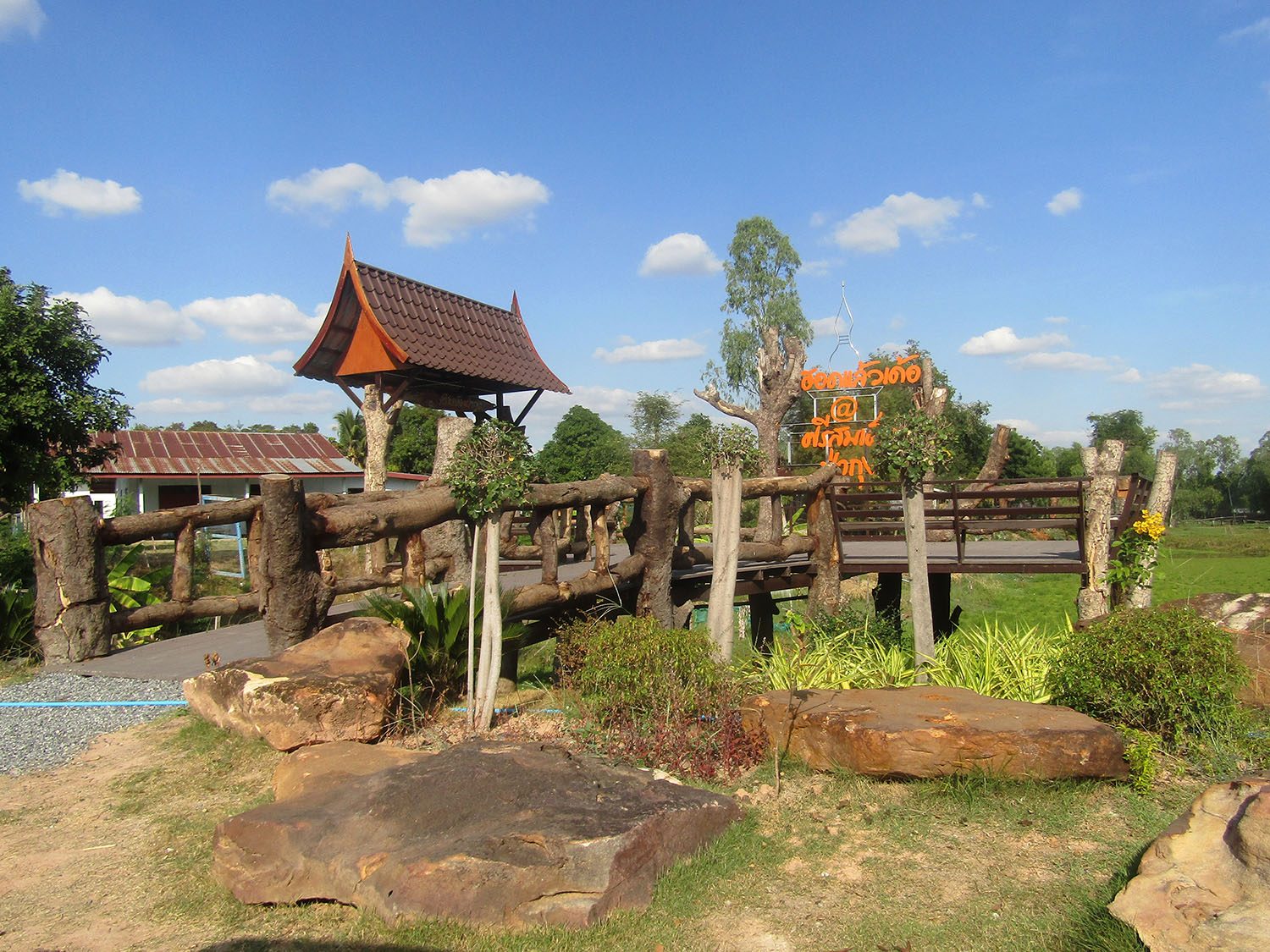 Wat Pa Kung, Si Somdet District, Roi-Et Province
Wat Pa Kung, Si Somdet District, Roi-Et Province
Southern Monuments……..Now heading into mid-afternoon, we need to head south where there are some important ancient monuments. Again, there is debate as to the route but the GPS points to us returning back towards the city and using the ring road. Unfortunately, here there is a hold up while the police close one of the carriageways. This is in support of an organised bike-ride which appears to be well-supported. I should mention that today is an official holiday in Thailand. It is the late-King’s birthday and he was known to have promoted such events. He is held in such great esteem that this date will almost certainly remain on the calendar but for us today it means a 20-minute delay that I could do without.
Kaset Wisai……..Kaset Wisai is one of the southern districts of Roi Et province and I’ve known for some time it contains some important Khmer ruins. The problem is that it’s over a hour's drive away and that means that we will need to stay in Roi Et Province for a third night. The issue on this tour has always been the fall of darkness at least an hour earlier than during the summer months. Nothing can sensibly happen after 5.30pm. By the time we reach the district it’s past 4pm. We must find the temple complex and quickly! Unfortunately the GPS locator misses the mark by at least 1 kilometre causing a ten minute delay.
Ku Ka Sing……..Arriving at the Ku Ka Sing archaeological site, I get a glimpse of the size this complex was. The main Khmer temple ruin is near the site entrance where there is also a visitor centre. Already aware that there are other ruins nearby, I have to get my bearings and quickly. Recording and photographing the ruin at Ku Ka Sing would sensibly take half an hour but I have to do better than that.
Kaset Wisai……..Kaset Wisai is one of the southern districts of Roi Et province and I’ve known for some time it contains some important Khmer ruins. The problem is that it’s over a hour's drive away and that means that we will need to stay in Roi Et Province for a third night. The issue on this tour has always been the fall of darkness at least an hour earlier than during the summer months. Nothing can sensibly happen after 5.30pm. By the time we reach the district it’s past 4pm. We must find the temple complex and quickly! Unfortunately the GPS locator misses the mark by at least 1 kilometre causing a ten minute delay.
Ku Ka Sing……..Arriving at the Ku Ka Sing archaeological site, I get a glimpse of the size this complex was. The main Khmer temple ruin is near the site entrance where there is also a visitor centre. Already aware that there are other ruins nearby, I have to get my bearings and quickly. Recording and photographing the ruin at Ku Ka Sing would sensibly take half an hour but I have to do better than that.
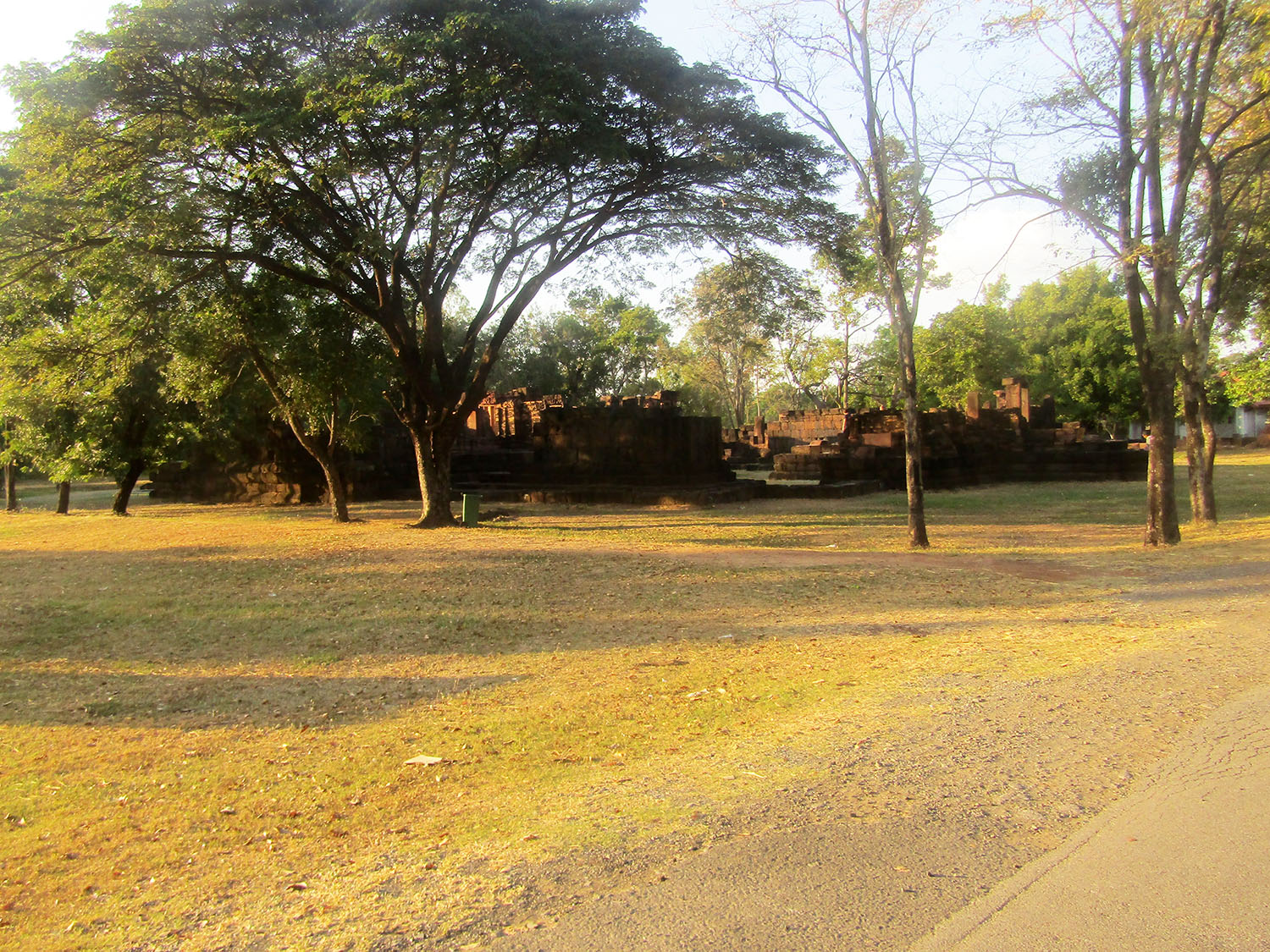
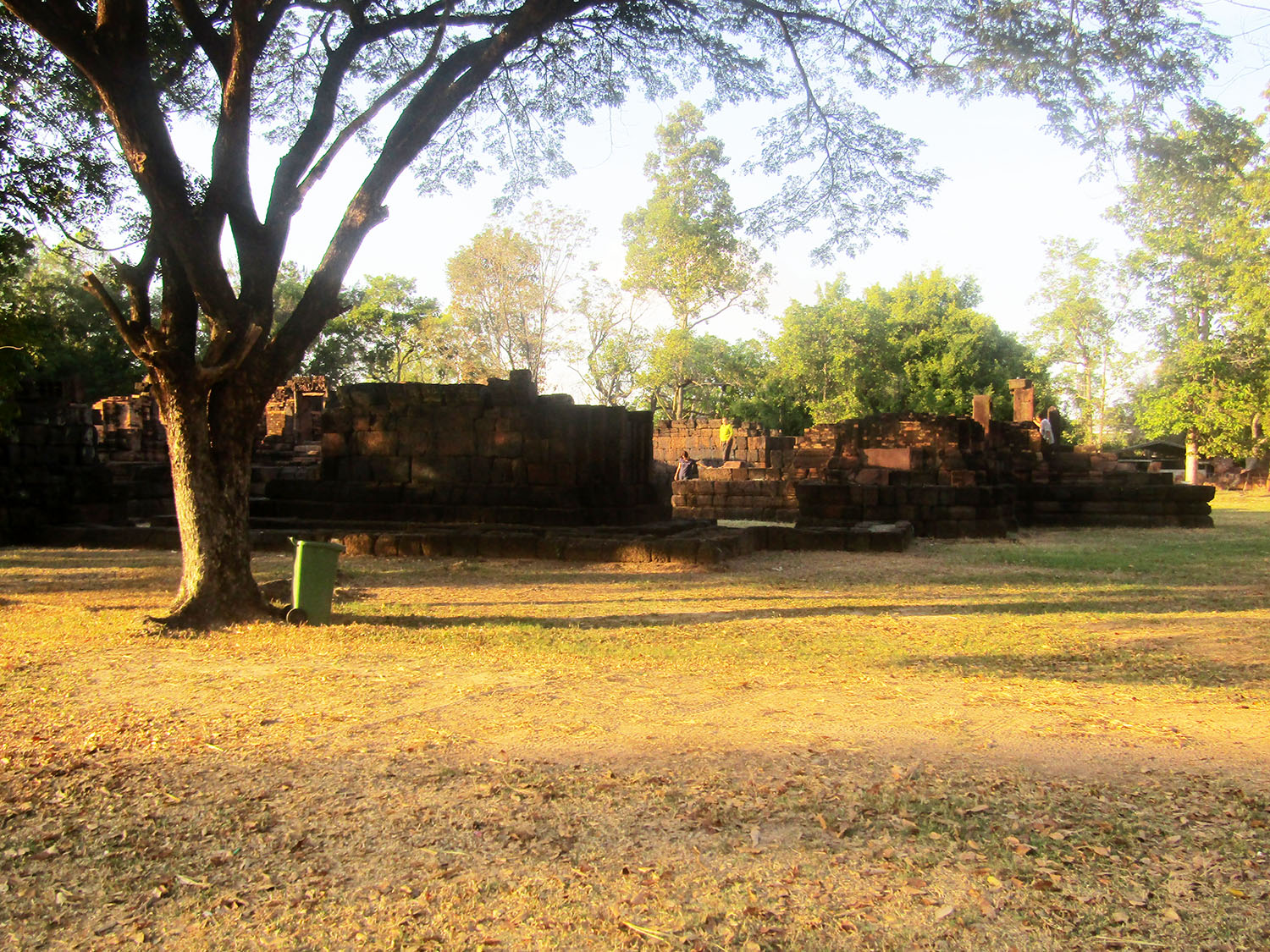
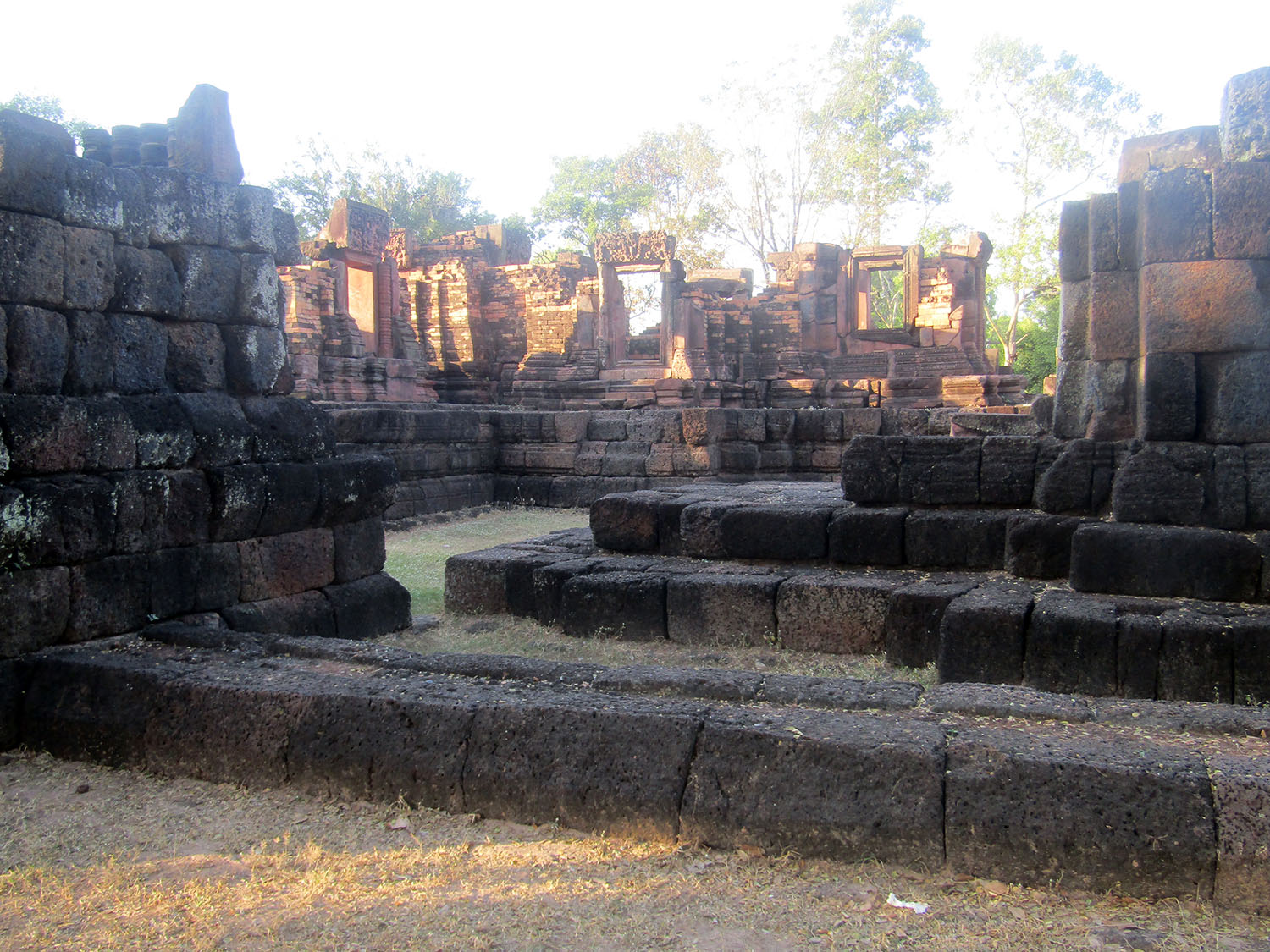
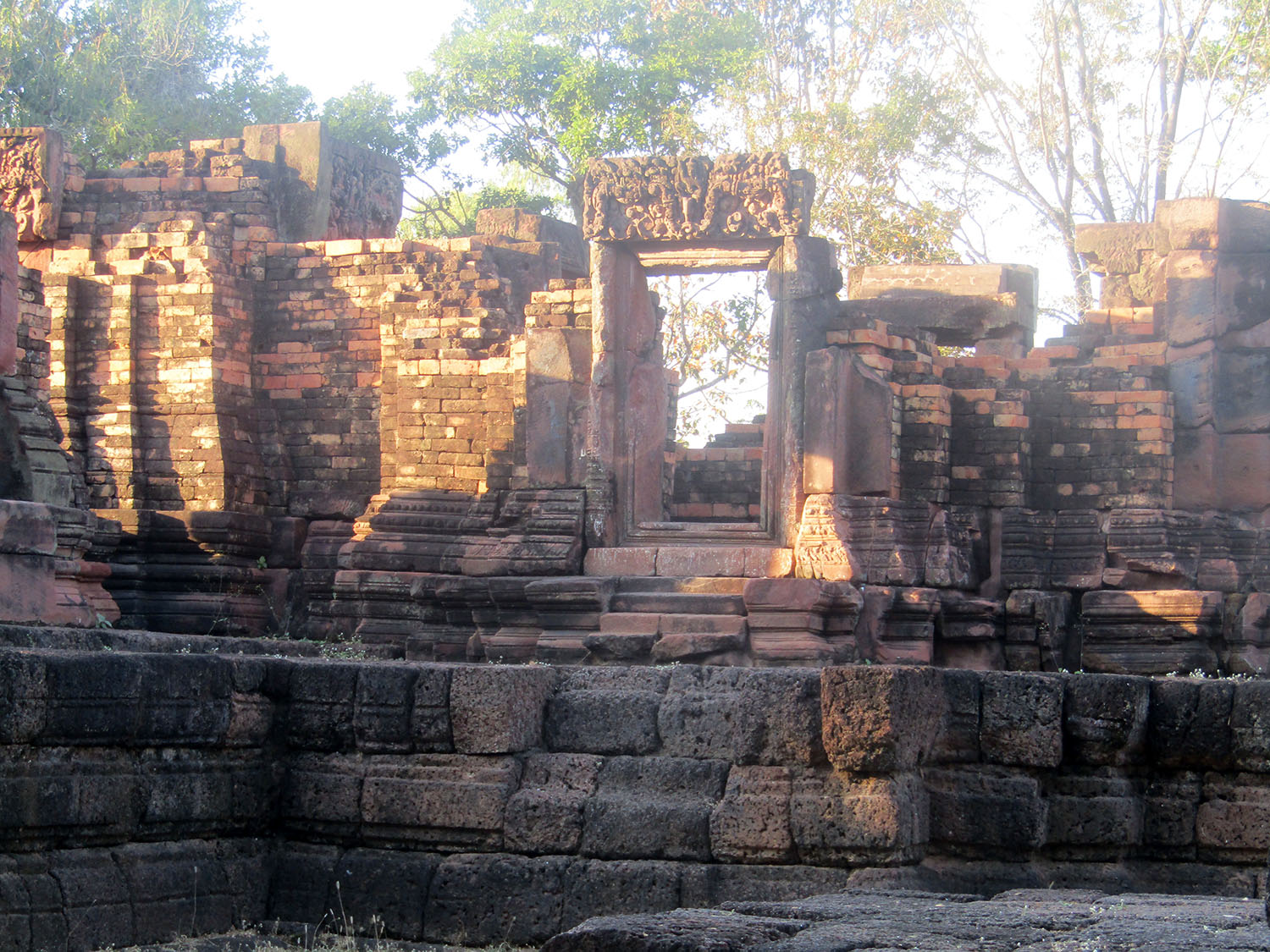
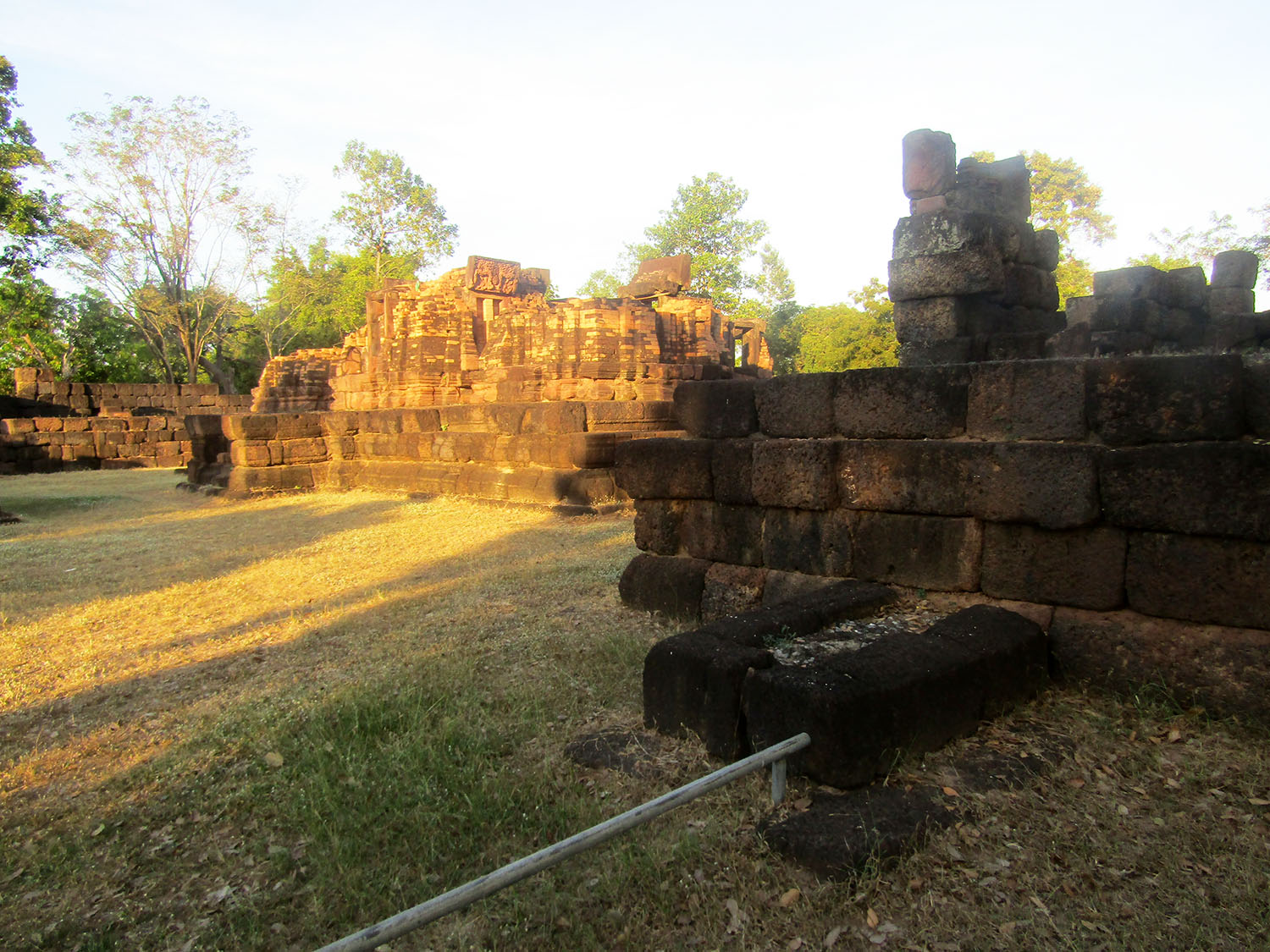
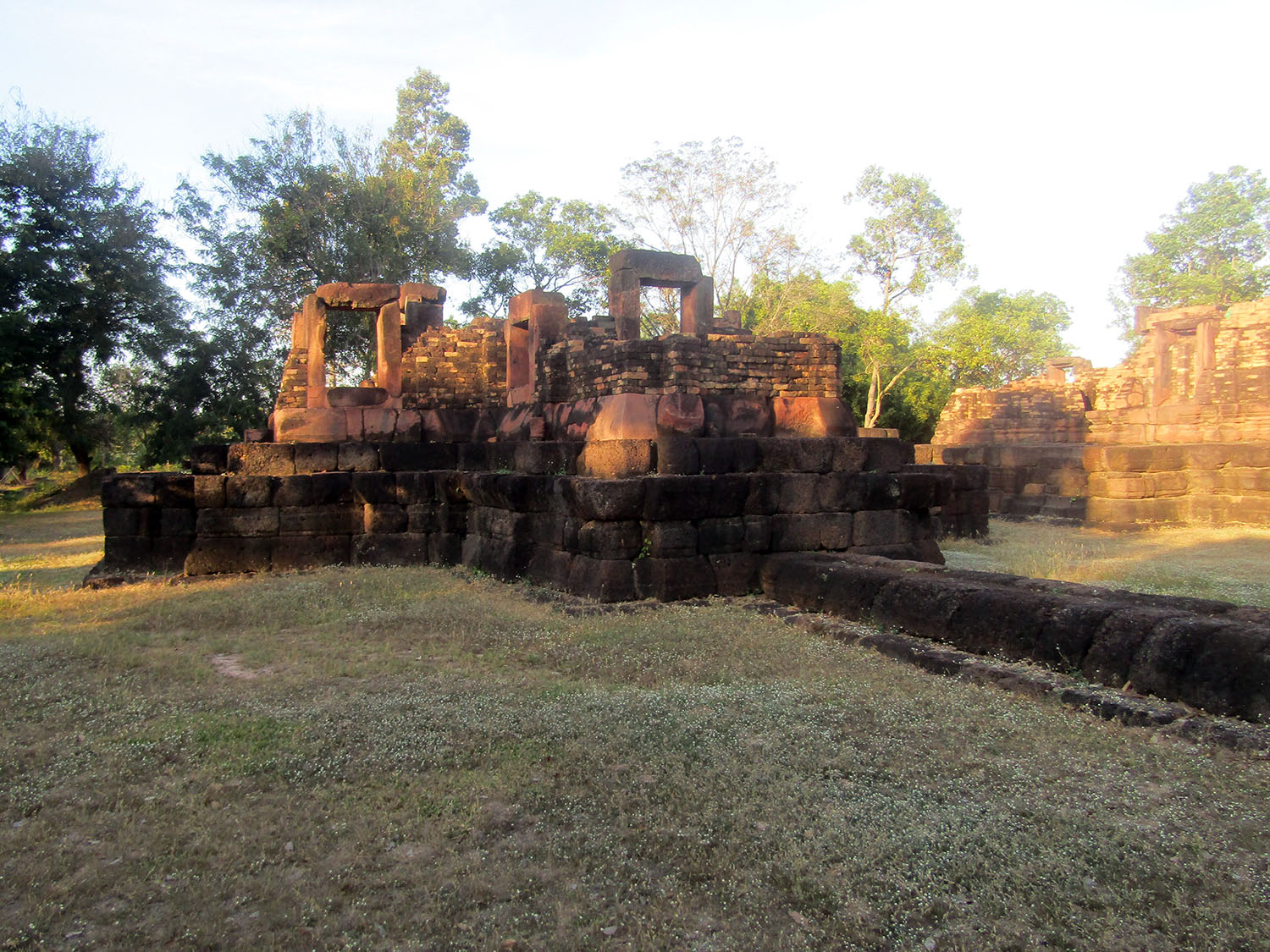
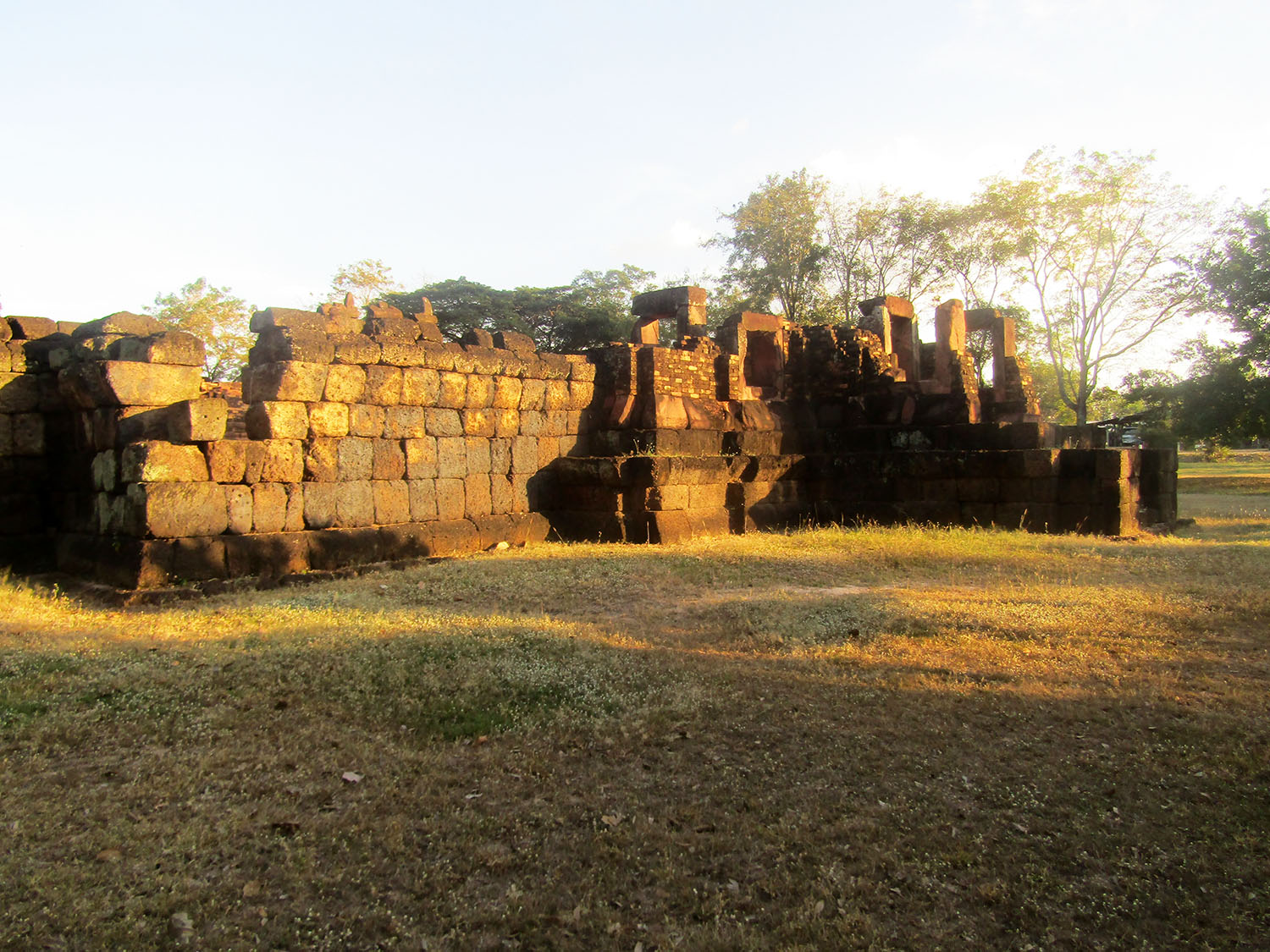
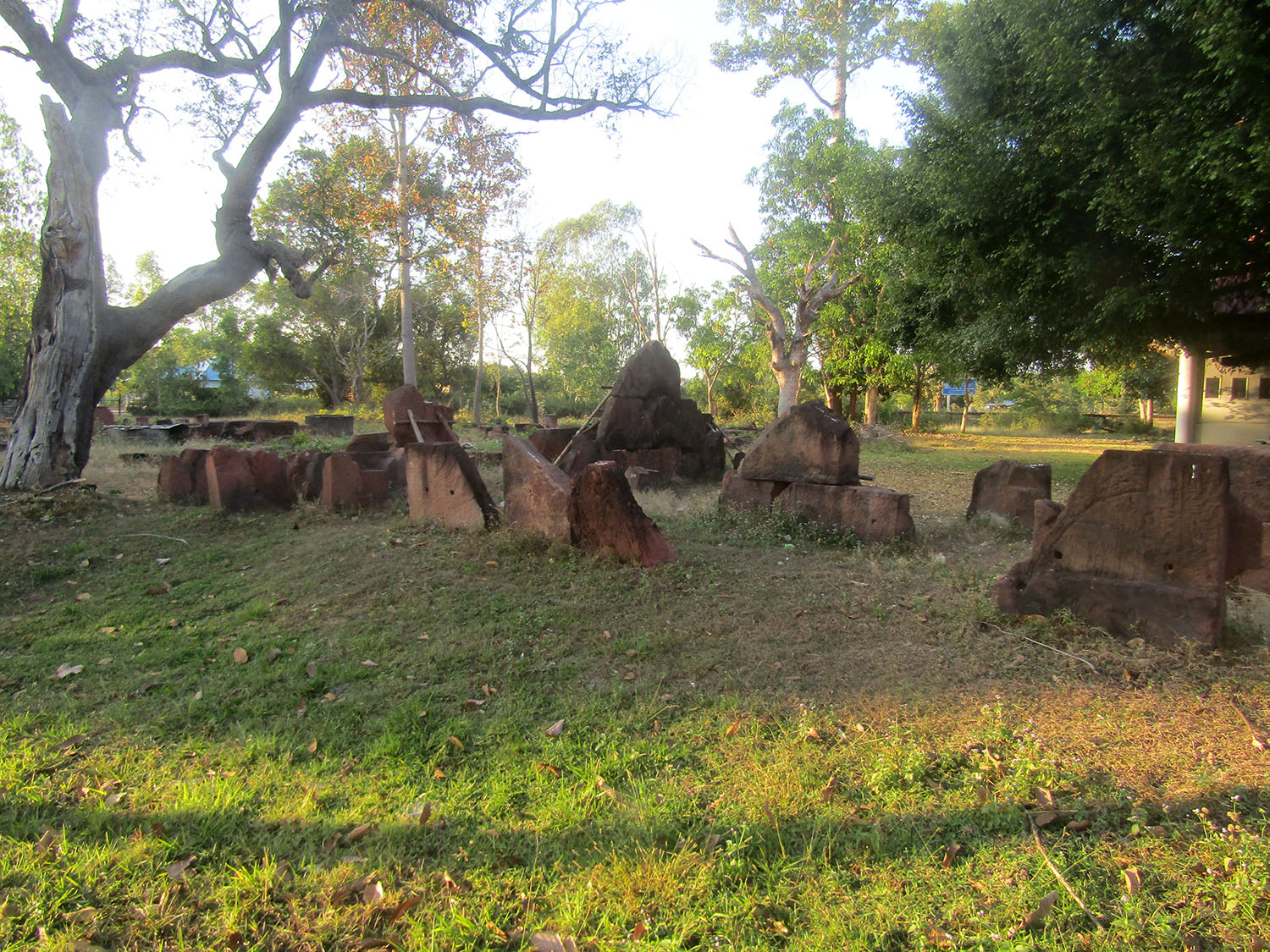
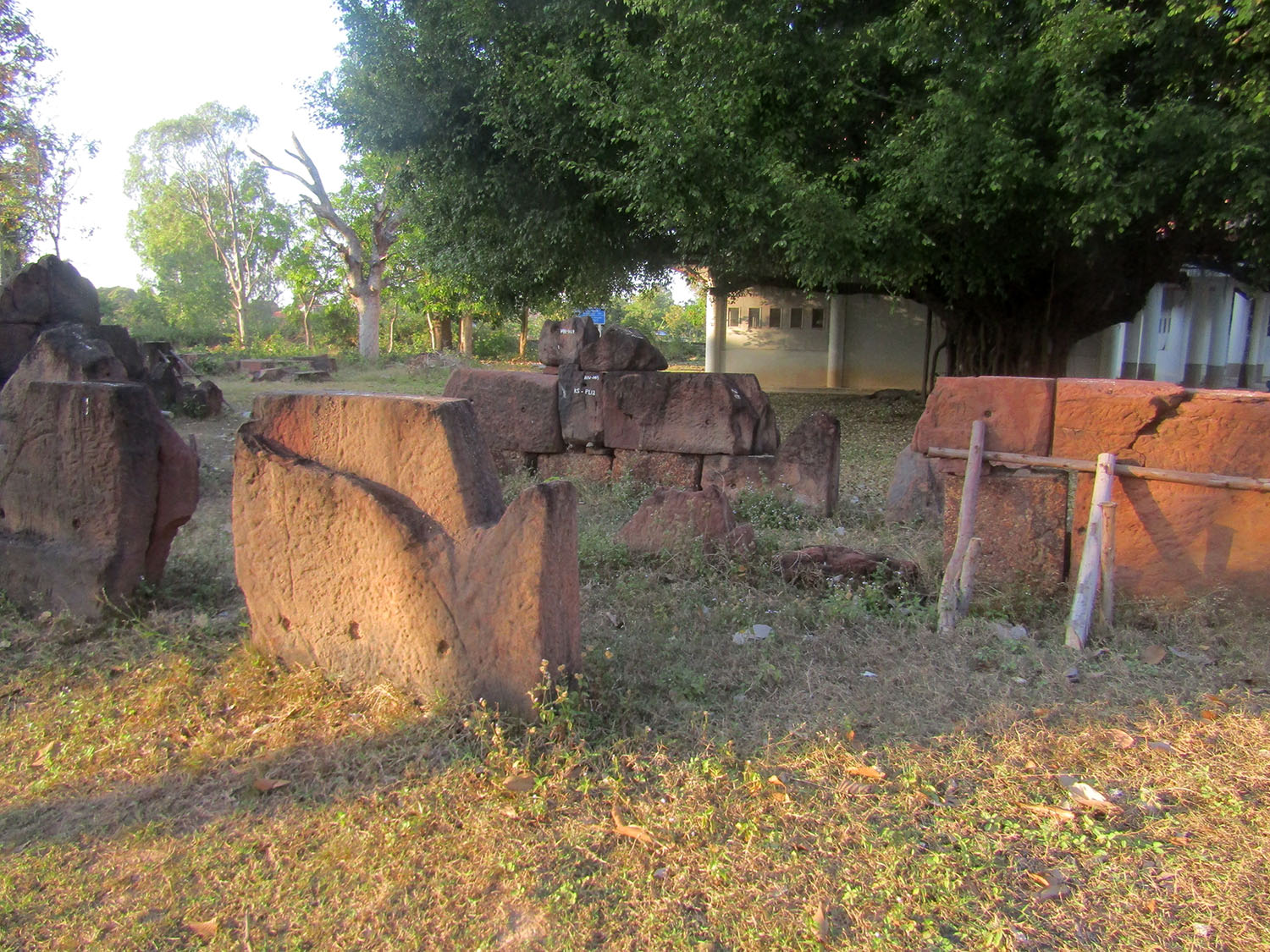
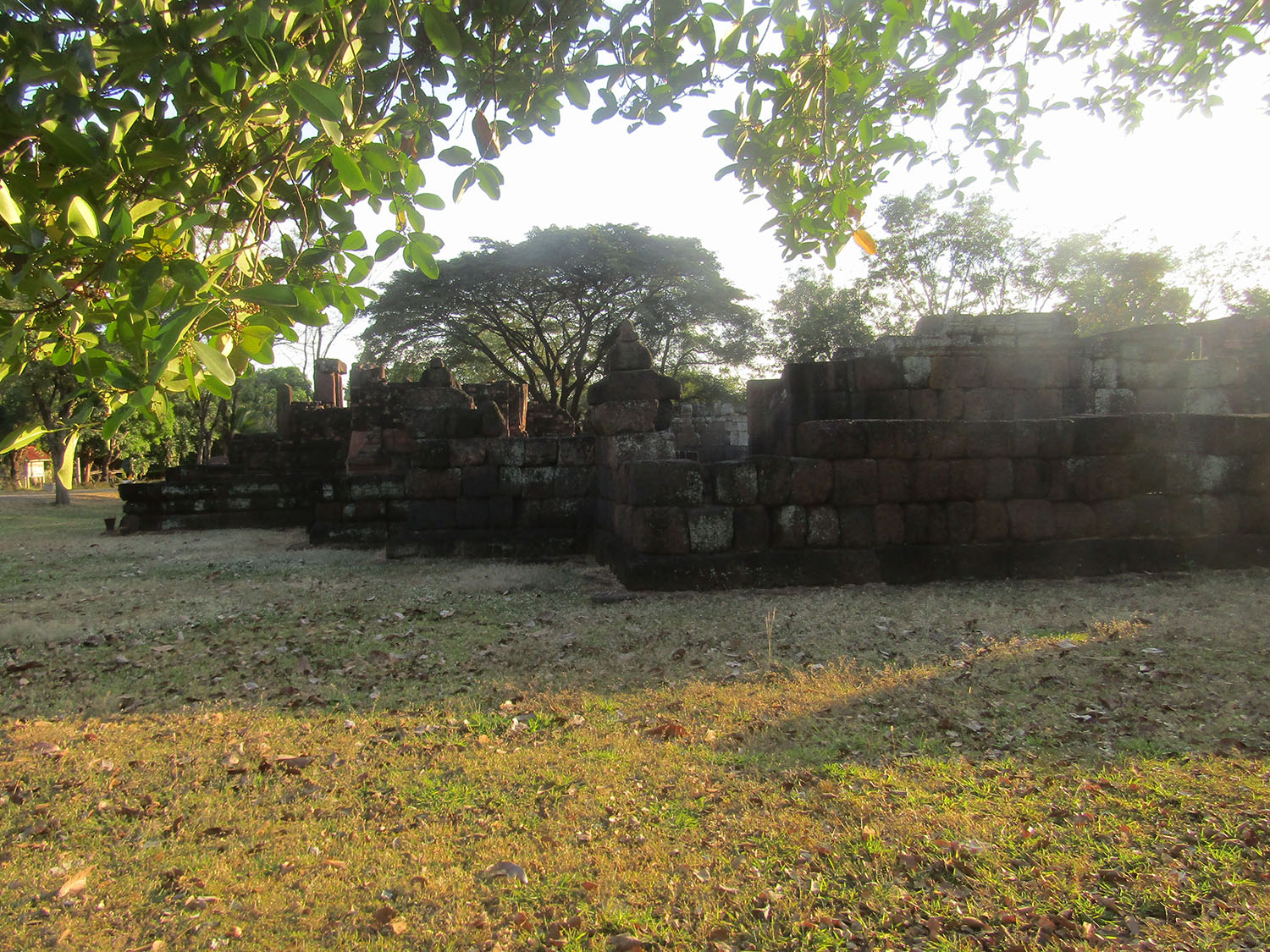
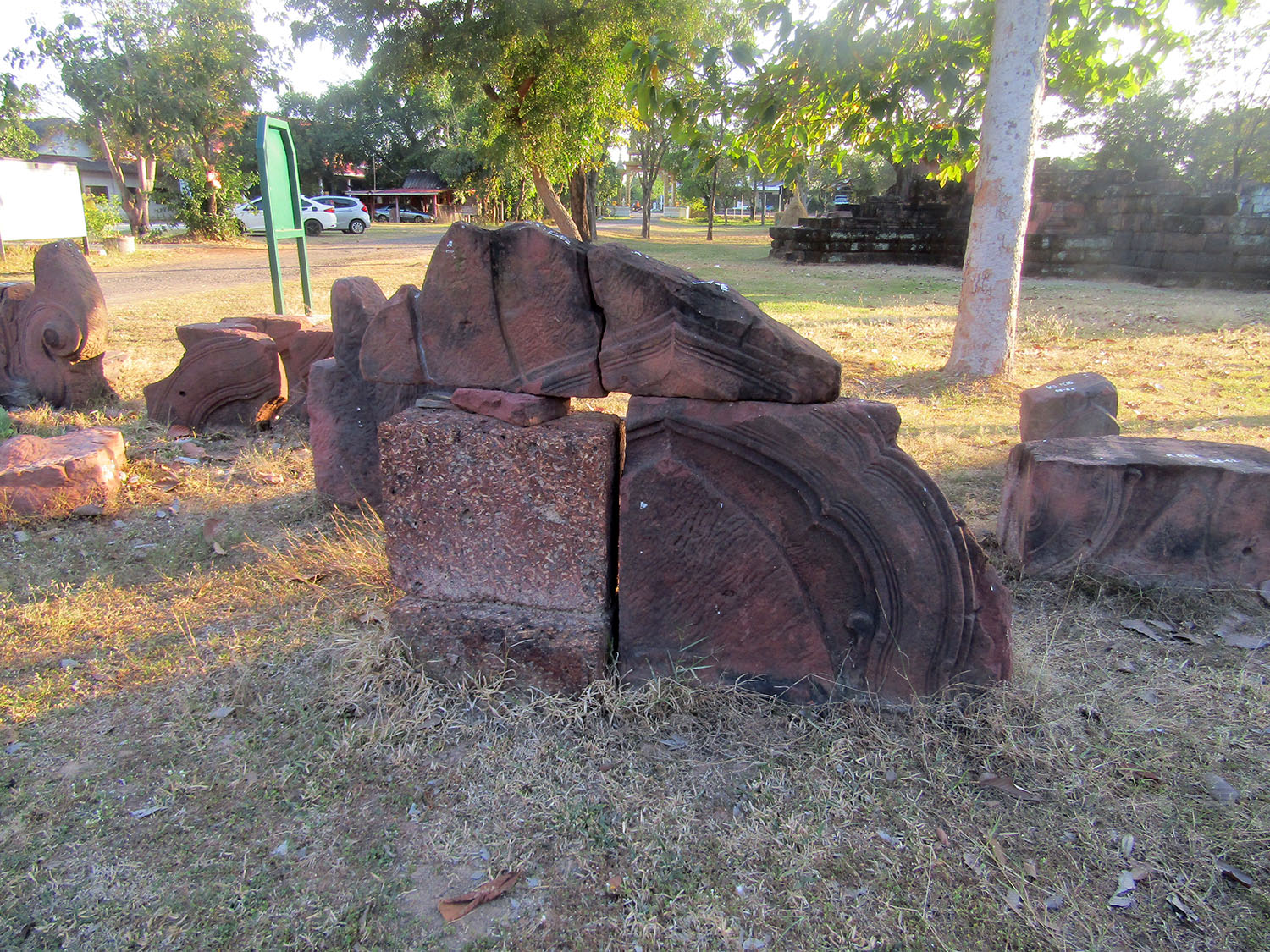
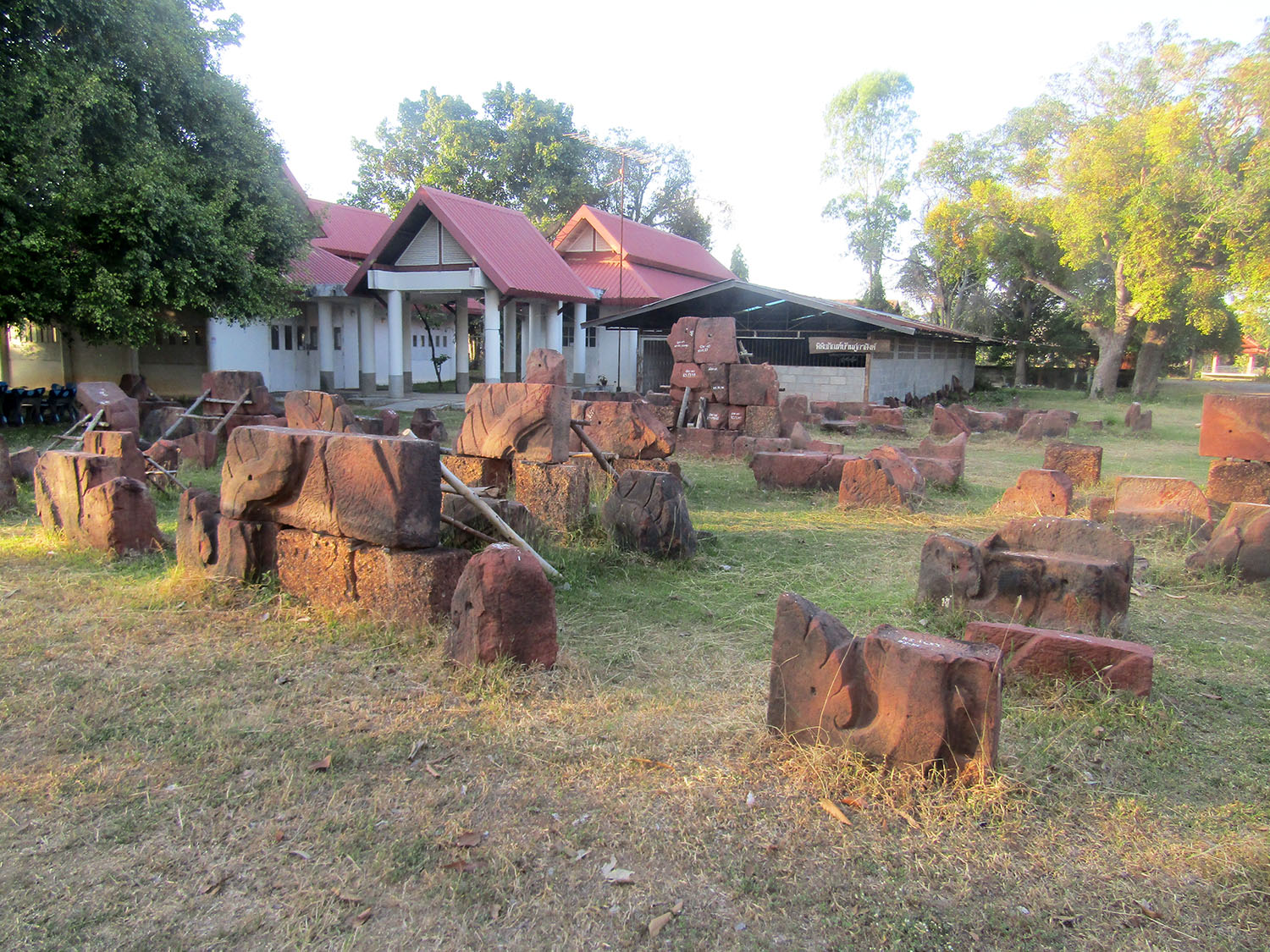 Ku Ka Sing, Kaset Wisai District, Roi-Et Province
Ku Ka Sing, Kaset Wisai District, Roi-Et Province
Ku (stone tower) at the religious monument Ku Ka Sing was constructed in the 10th/11th centuries under the influence of Khmer culture. The monument is dedicated to the Hindu God, Shiva. The complex consists of three brick towers and two separate but associated buildings within an area surrounded by a U-shaped moat with a pond nearby. The three towers were built in Baphuon art style of Khmer culture. They are situated on the same laterite base with sandstone decorative elements. The middle tower is the main tower in which a green stone linga was found. Other associated buildings were built on a laterite base facing west towards the towers. The complex is surrounded by a rectangular wall built in laterite and brick. There is also a laterite library facing west towards the towers. Important archaeological evidence from excavations have unearthed a gold ornament in the form of a Naga and a gold plate used in the foundation stone laying ceremony. Currently these items are on display at the Roi Et National Museum. The design and layout of the complex at Ku Ka Sing is consistent with other monuments found in northeastern Thailand which date from the 10th/11th centuries.
Ku Ka Sing was registered as a national ancient monument in March 1935.
Ku Pon Ra Kang……..Ku Pon Ra Kang is located 500 metres from Ku Ka Sing but as these monuments lay within Ka Sing village, there is no direct route to it. It’s a case of asking the villagers since Google Map, not for the first time has let me down: Strange for such an important monument.
While for the most part, the regional office of the Fine Arts Department covering this province has done a good job, at Ku Pon Ra Kang there is no information board in English, only in Thai. However, based on observation and some attempt at translation it's established that this monument was constructed in the 12th/13th centuries. By its architectural style it is believed to be an arokayasala (medical station/hospital) built during the reign of King Jayavaman VII (1181-1218). Ku Pon Ra Kang consists of a single tower and porch and another building in the southeast corner of a rectangular compound with a doorway facing east. The prasat is built of laterite with sandstone doorways and lintels, while the outer wall is also built with laterite bocks. Outside the compound in the northeast corner is the pond. The monument is Khmer style and currently in relatively good condition. The carvings on the lintels show the by this time there was conversion to Mahayana Buddhism here.
Ku Ka Sing was registered as a national ancient monument in March 1935.
Ku Pon Ra Kang……..Ku Pon Ra Kang is located 500 metres from Ku Ka Sing but as these monuments lay within Ka Sing village, there is no direct route to it. It’s a case of asking the villagers since Google Map, not for the first time has let me down: Strange for such an important monument.
While for the most part, the regional office of the Fine Arts Department covering this province has done a good job, at Ku Pon Ra Kang there is no information board in English, only in Thai. However, based on observation and some attempt at translation it's established that this monument was constructed in the 12th/13th centuries. By its architectural style it is believed to be an arokayasala (medical station/hospital) built during the reign of King Jayavaman VII (1181-1218). Ku Pon Ra Kang consists of a single tower and porch and another building in the southeast corner of a rectangular compound with a doorway facing east. The prasat is built of laterite with sandstone doorways and lintels, while the outer wall is also built with laterite bocks. Outside the compound in the northeast corner is the pond. The monument is Khmer style and currently in relatively good condition. The carvings on the lintels show the by this time there was conversion to Mahayana Buddhism here.
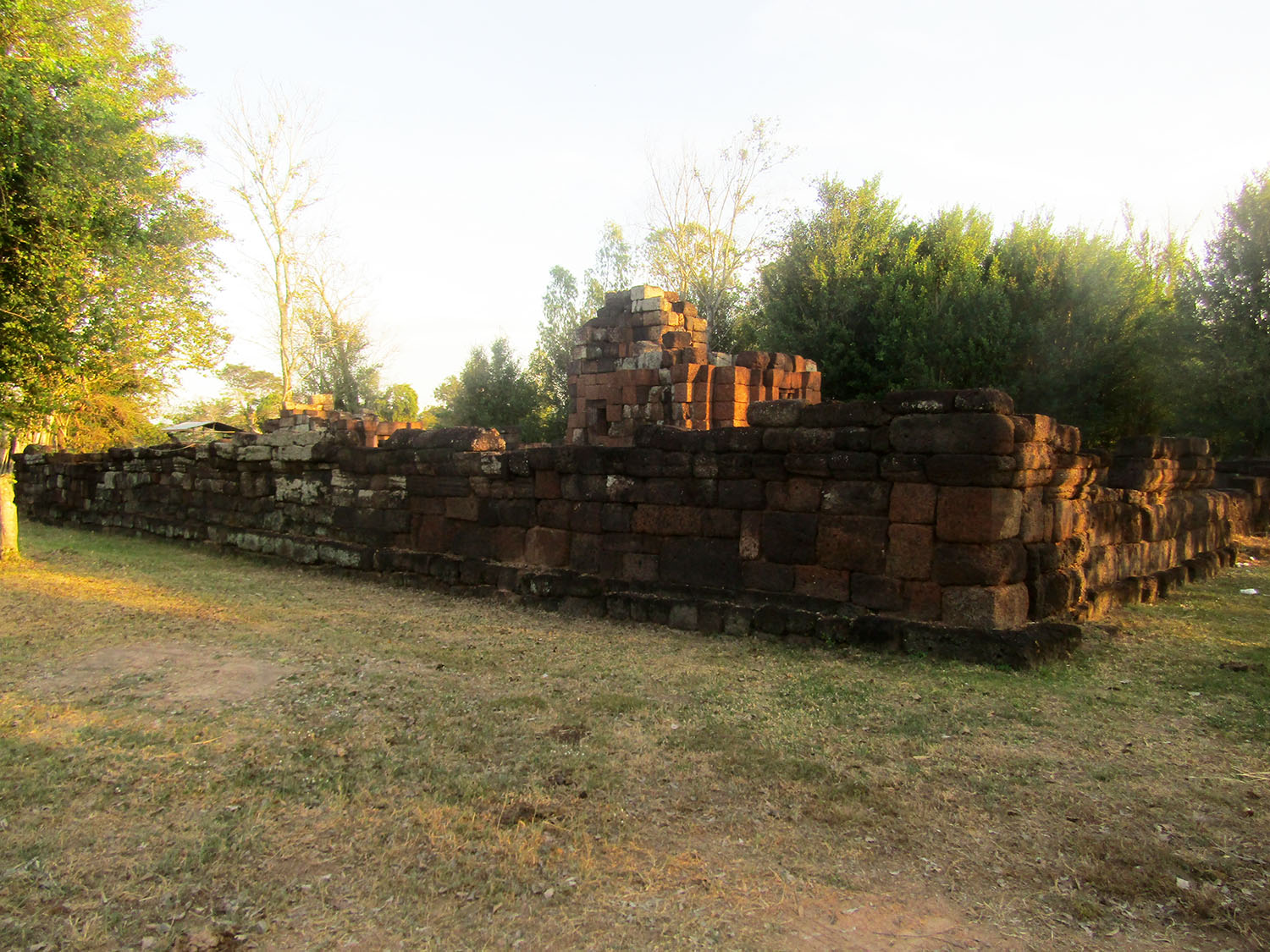
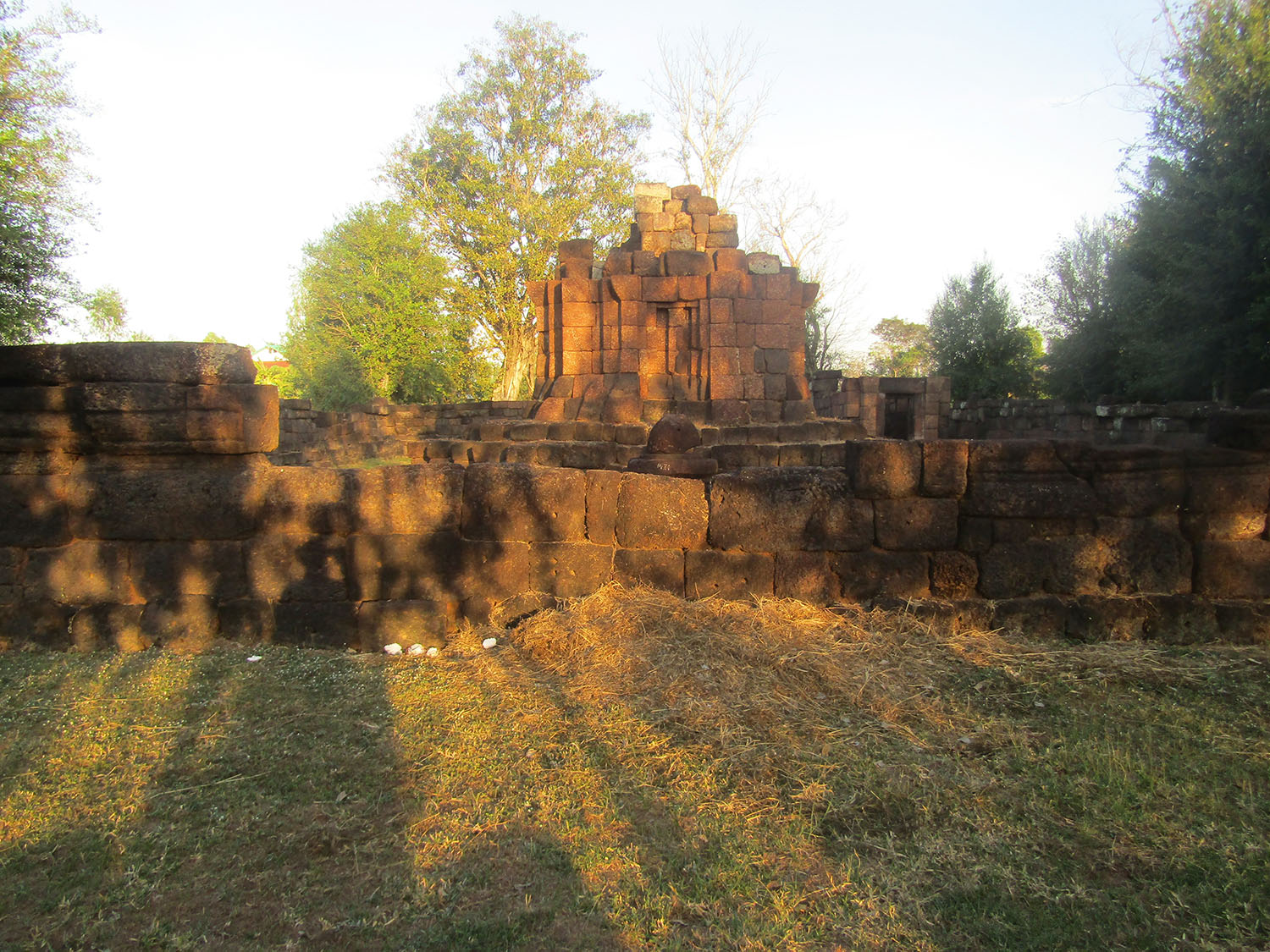
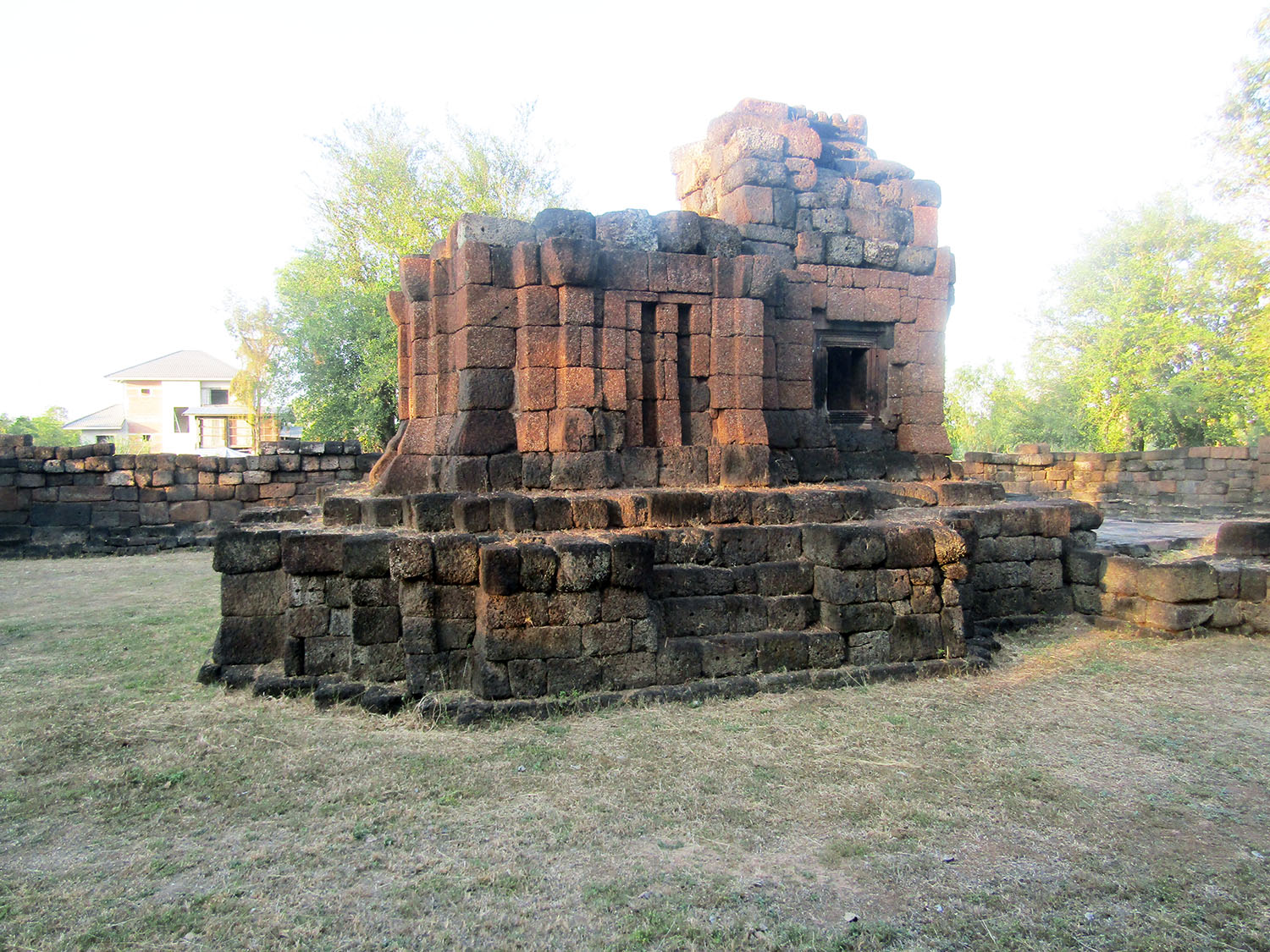
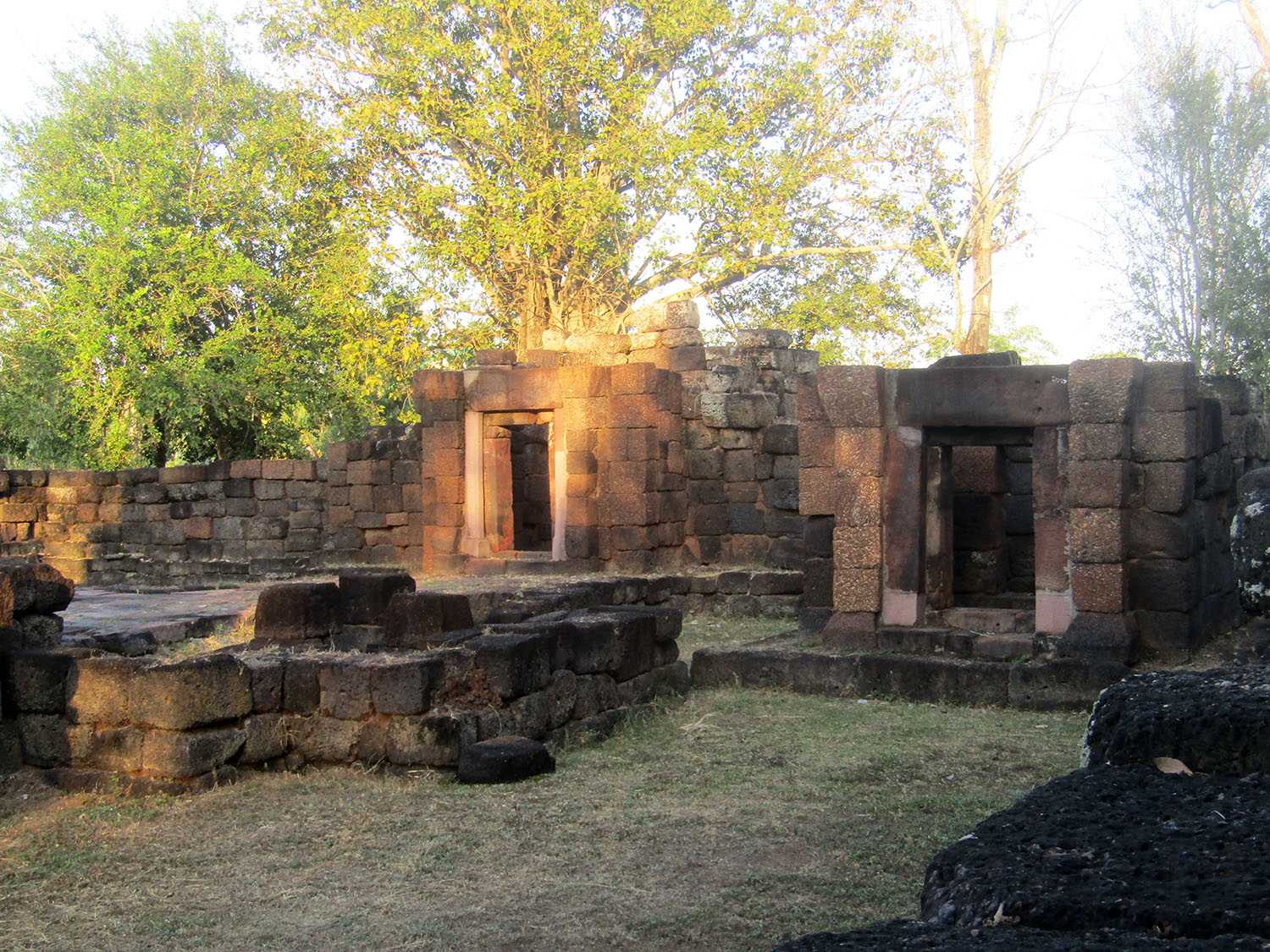
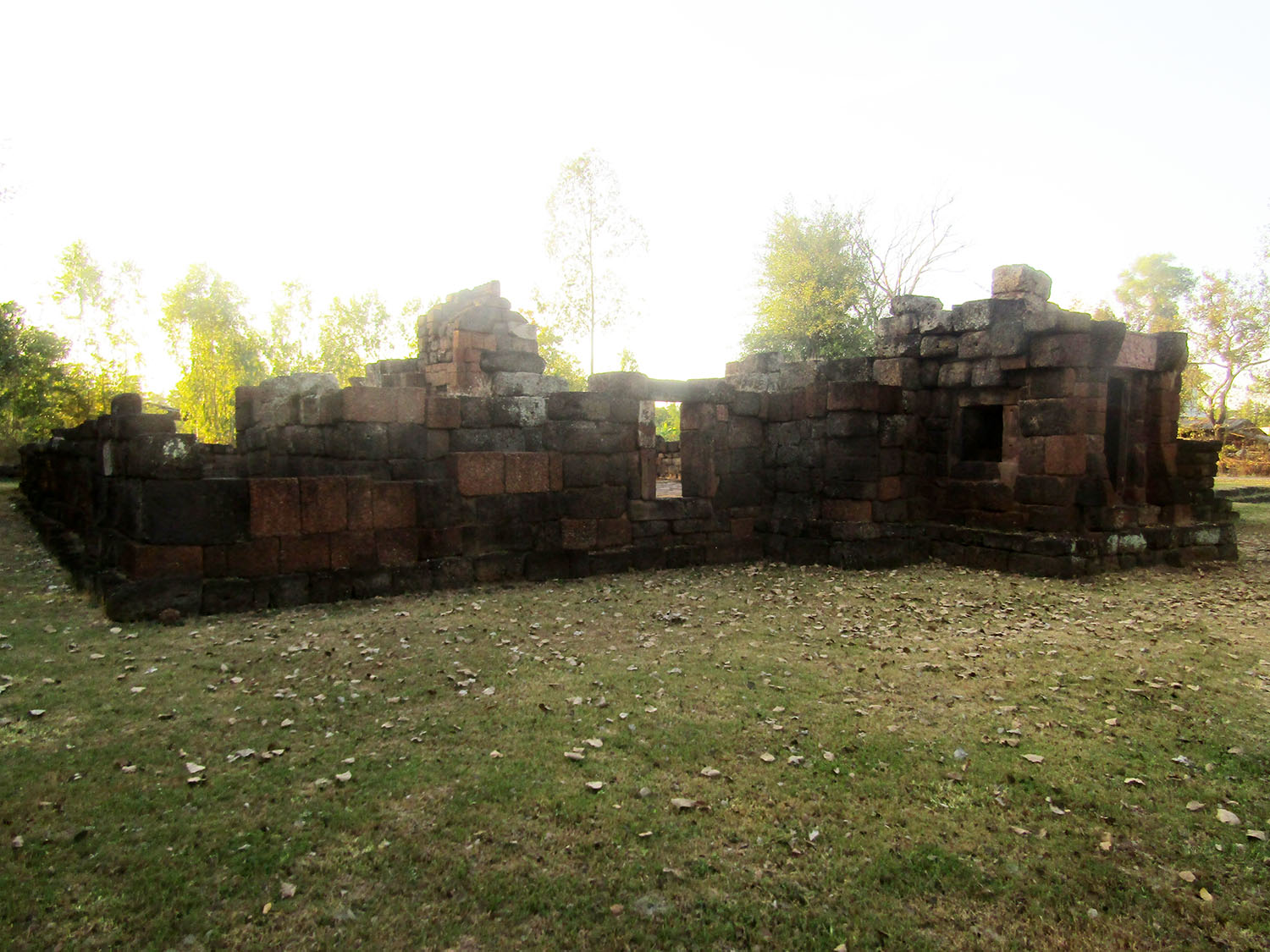
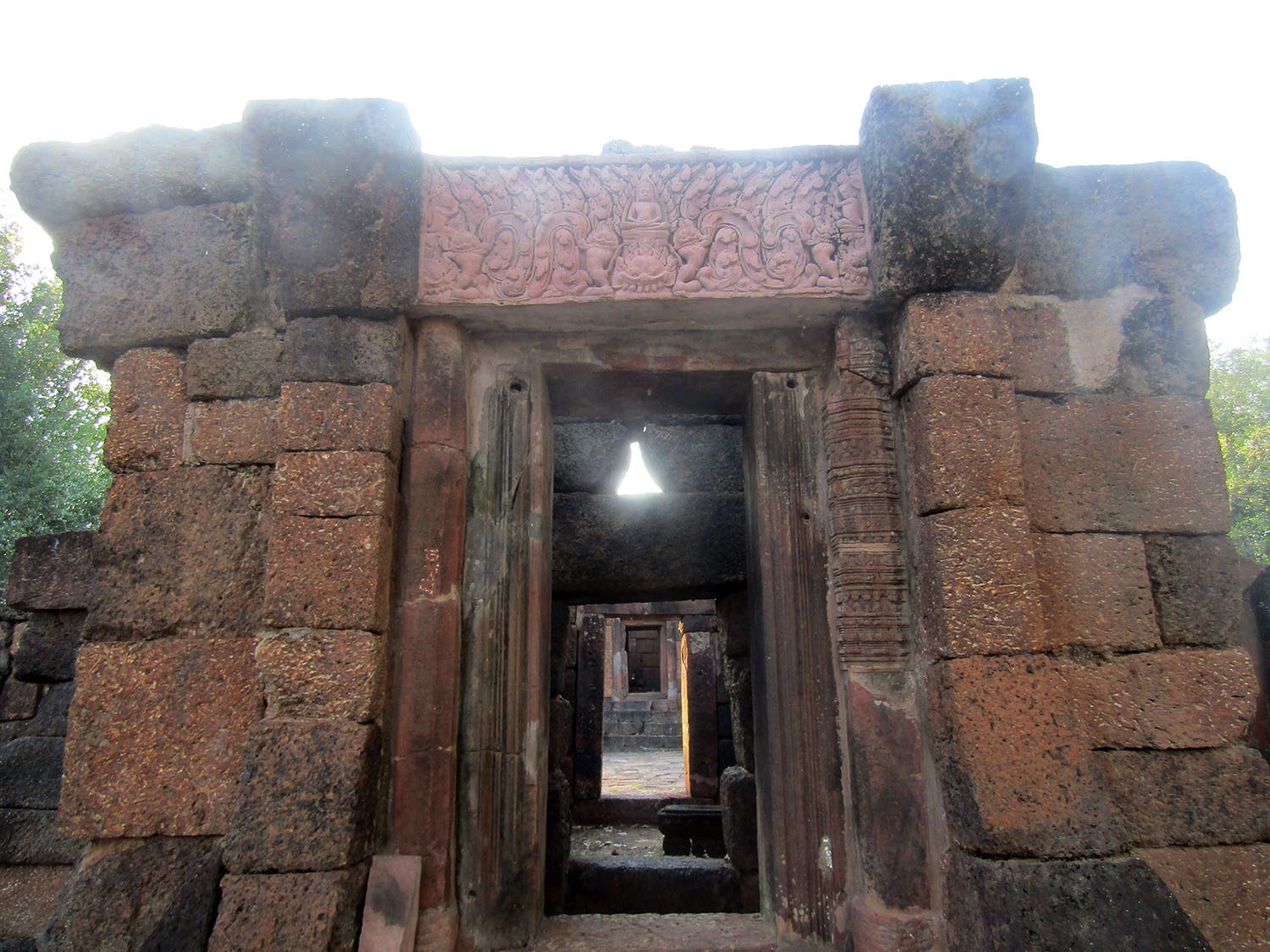
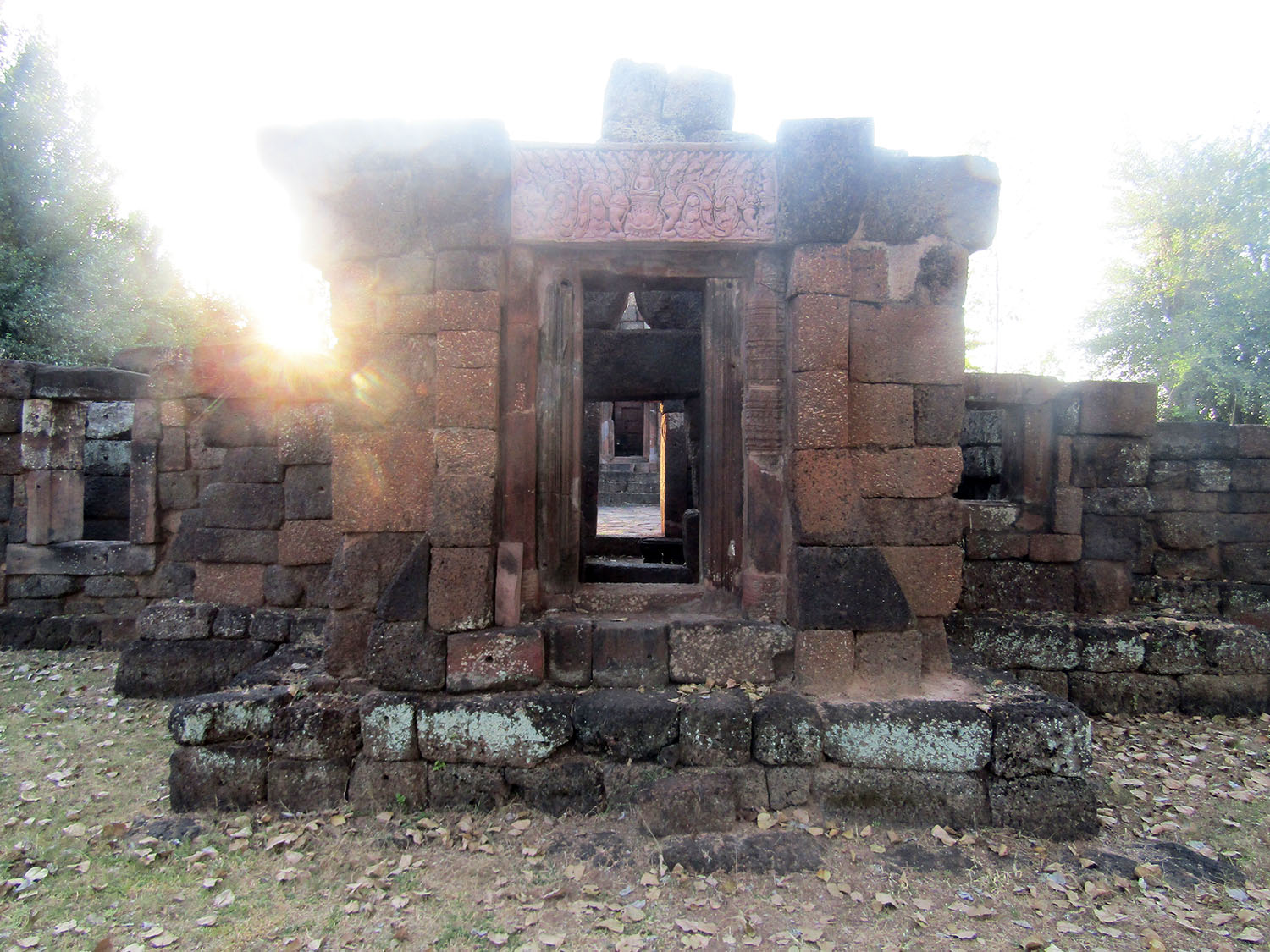
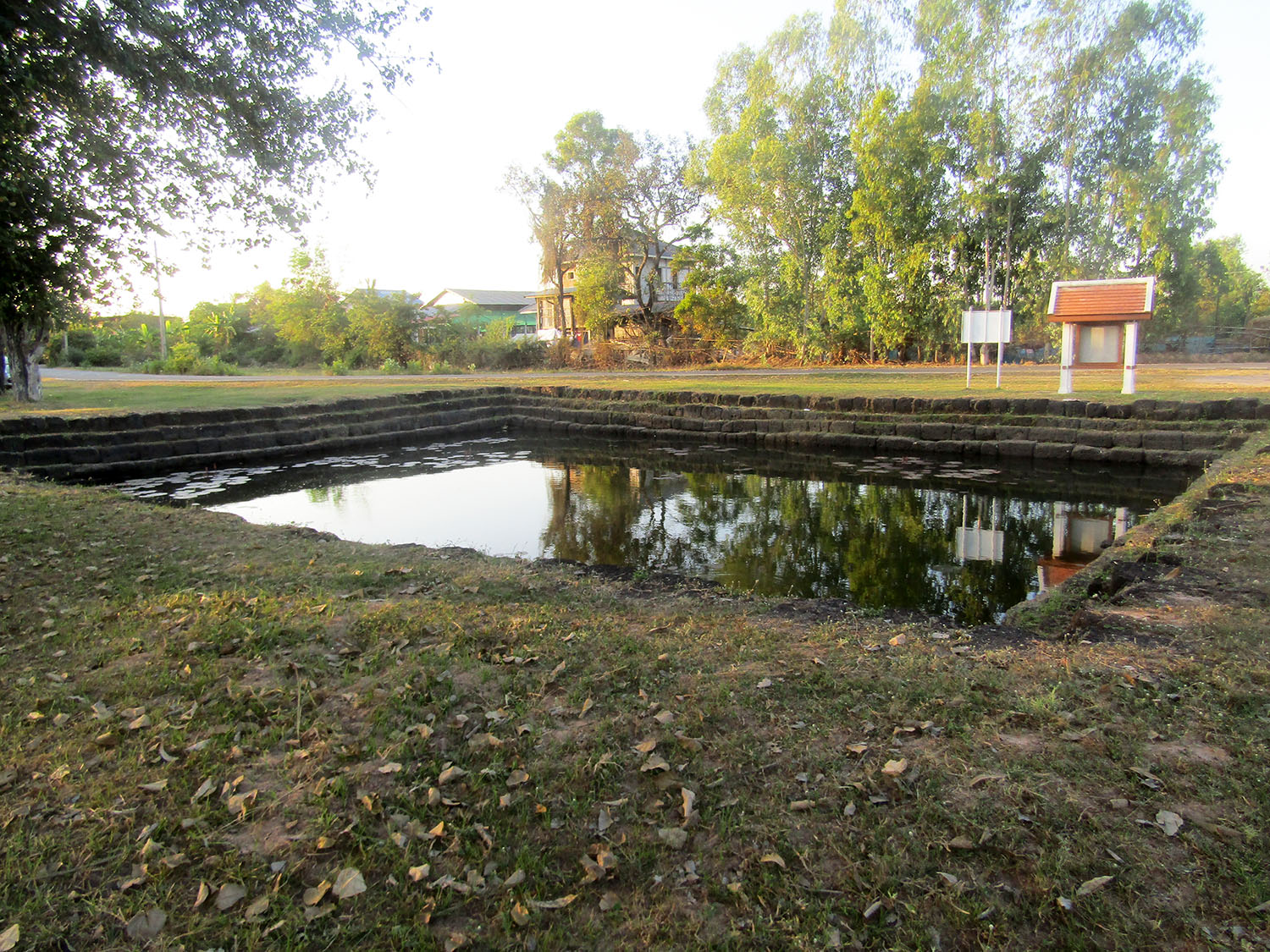
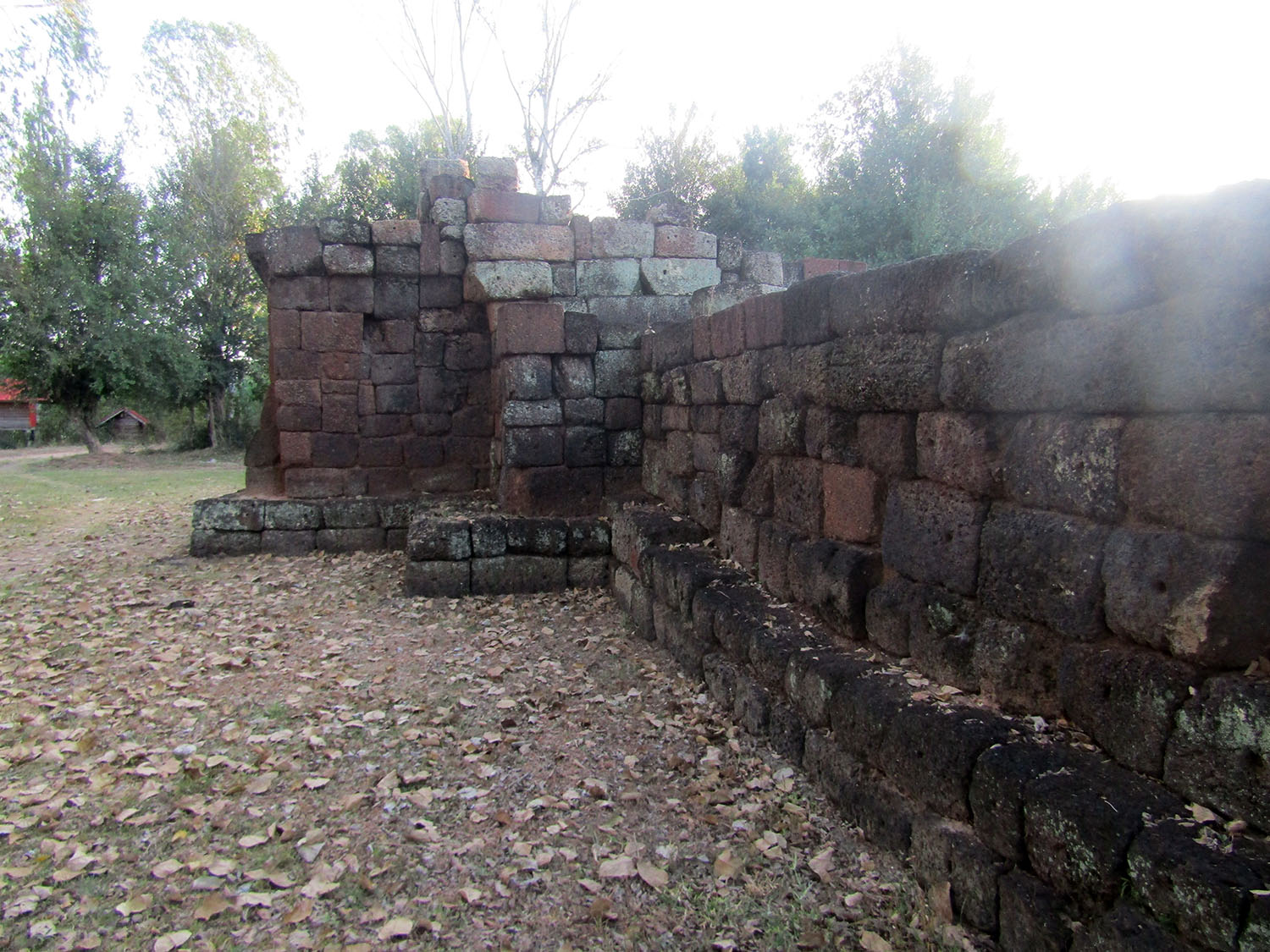 Ku Pon Ra Kang, Kaset Wisai District, Roi-Et Province
Ku Pon Ra Kang, Kaset Wisai District, Roi-Et Province
Ku Pon Wit……..Ku Pon Wit is a Khmer religious complex with stone shaped towers lying about 400 metres north of Ku Ka Sing. The tower was originally dedicated to the God Vishnu but was later transformed into the tower of Shiva. The tower base faces east and there are another two small bases in front of the tower complex. The tower building was built of laterite with no stairs. In the middle and at the four corners of the building, there is four small square bases with holes supposedly for wooden poles at the corner of all four bases. An archaeological excavation of the site unearthed a yoni (womb) base on which a linga (symbol of Shiva) was placed. This type of base has commonly been found in the house of Shiva. Some broken pieces of images of Vishnu were found. It is assumed that the images of Vishnu were deliberately destroyed after the building was transformed into the house of Shiva. Ku Pon Wit was registered as a national ancient monument in December 2002.
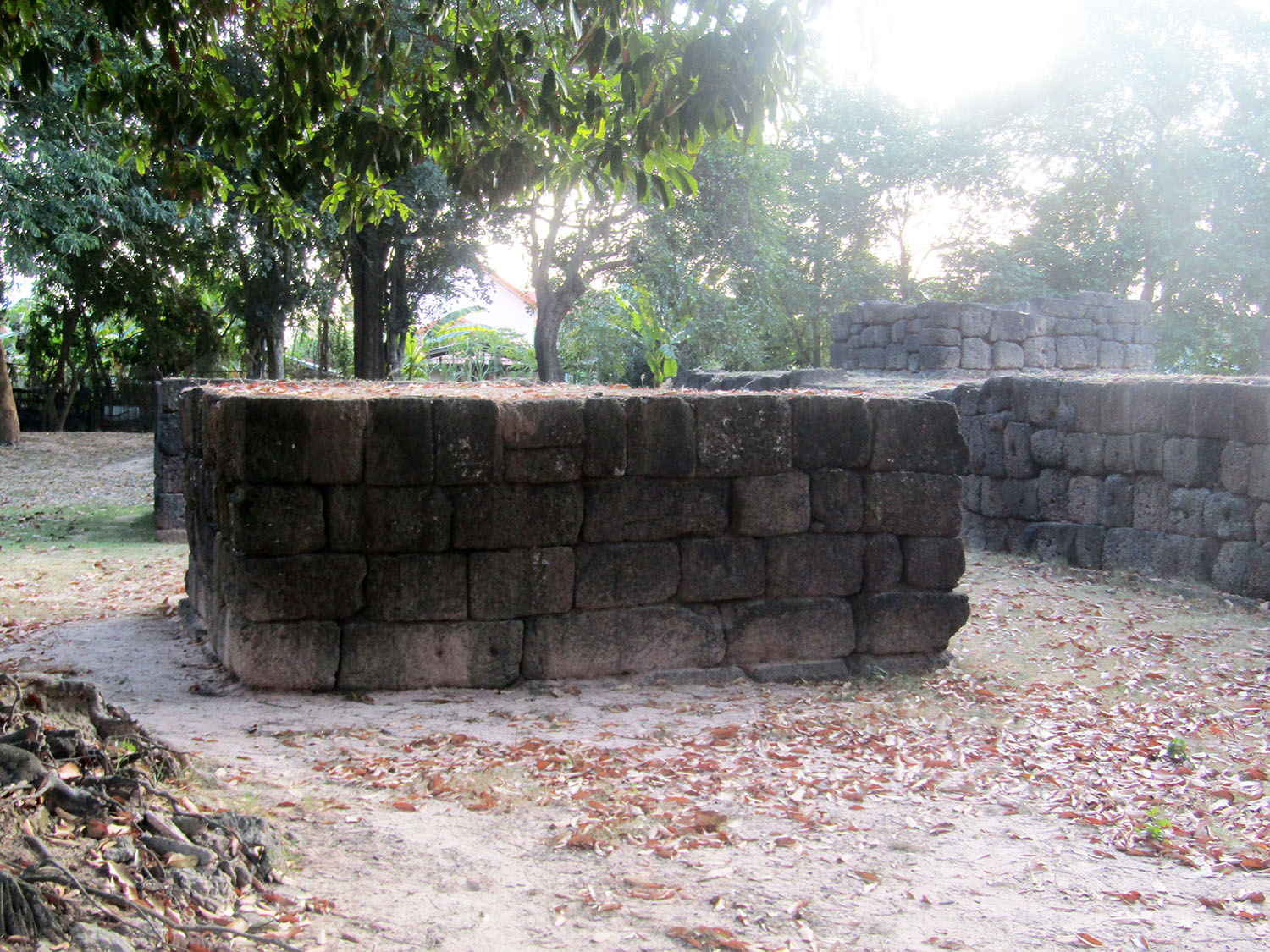
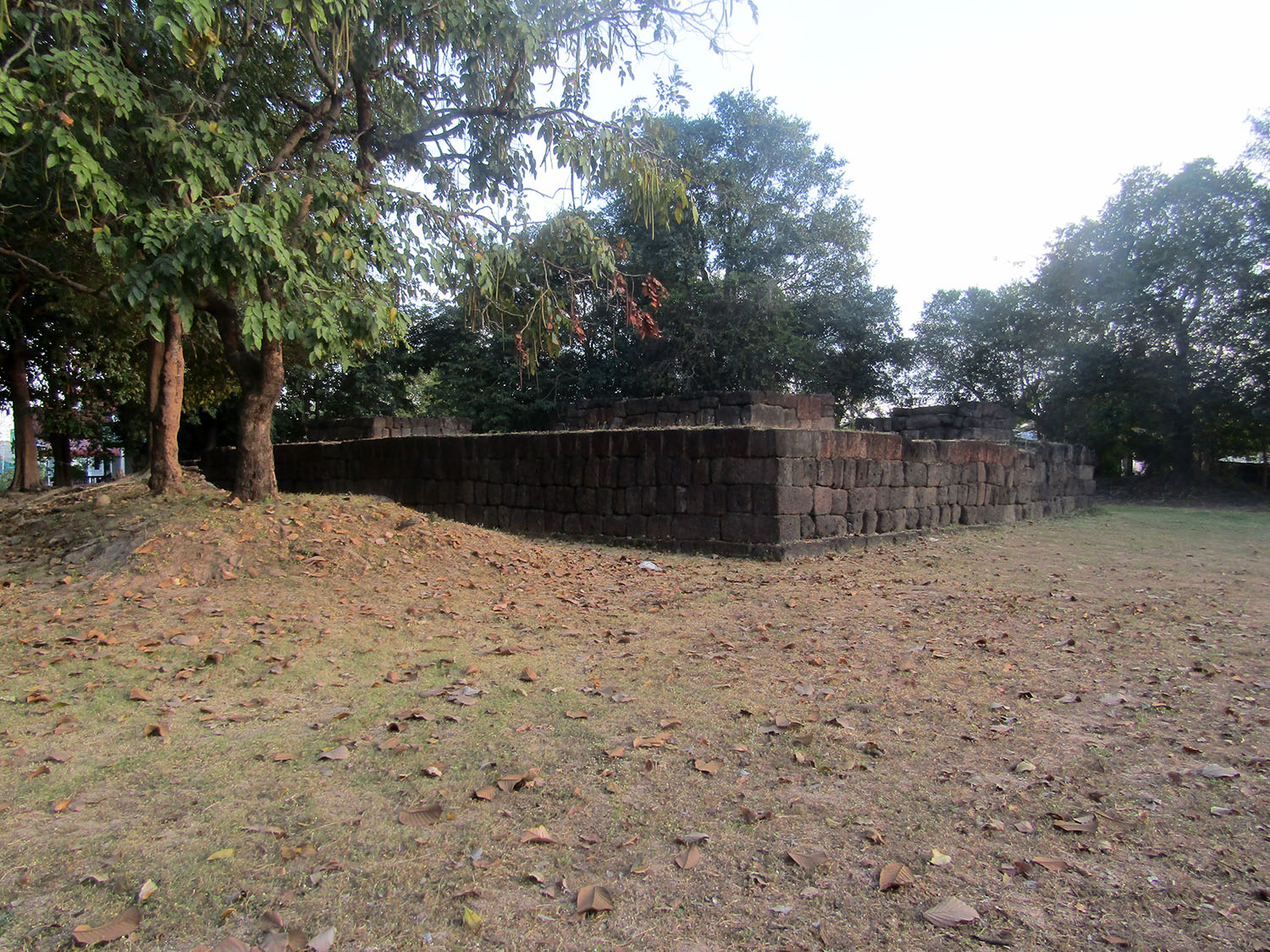
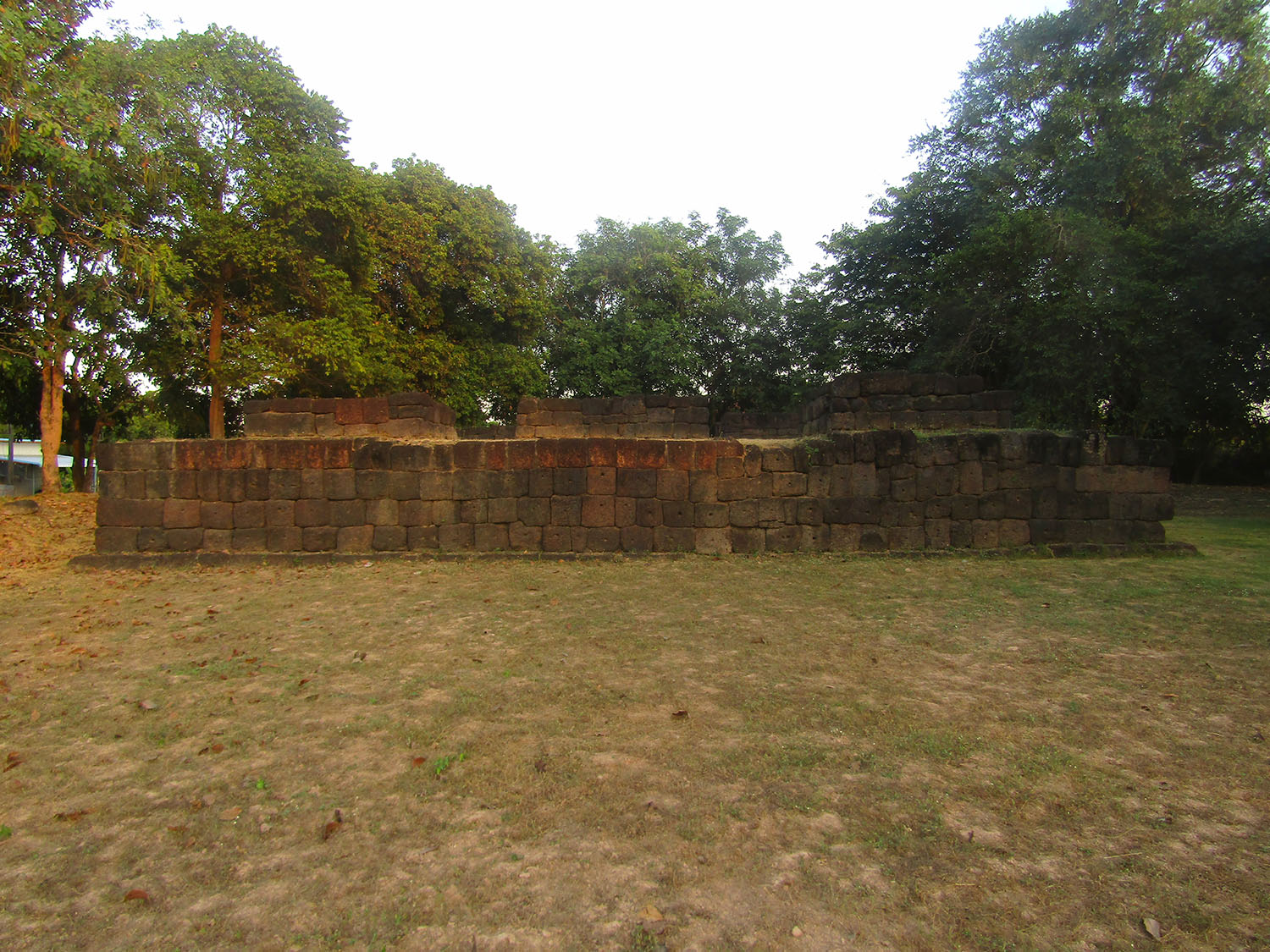
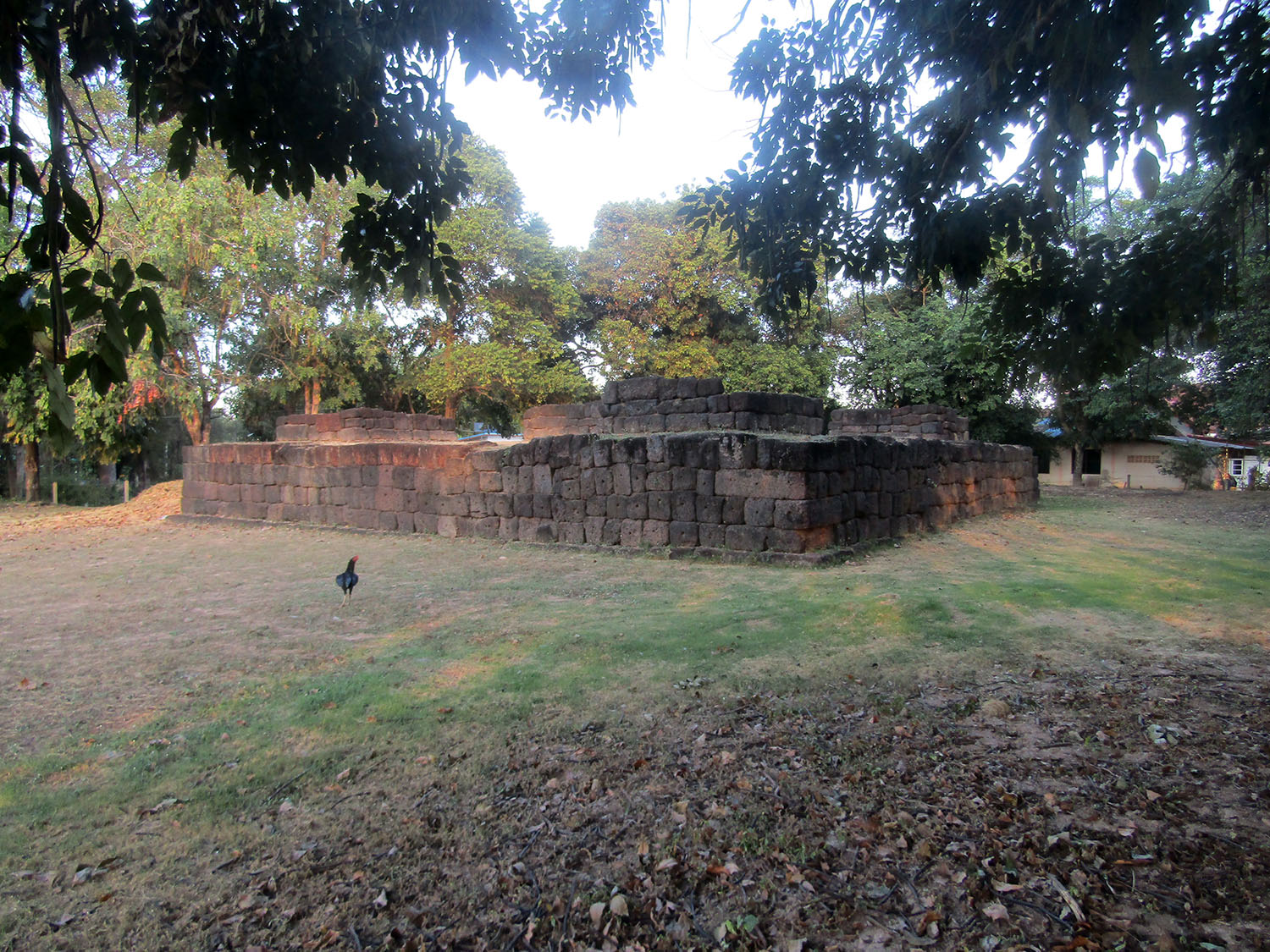
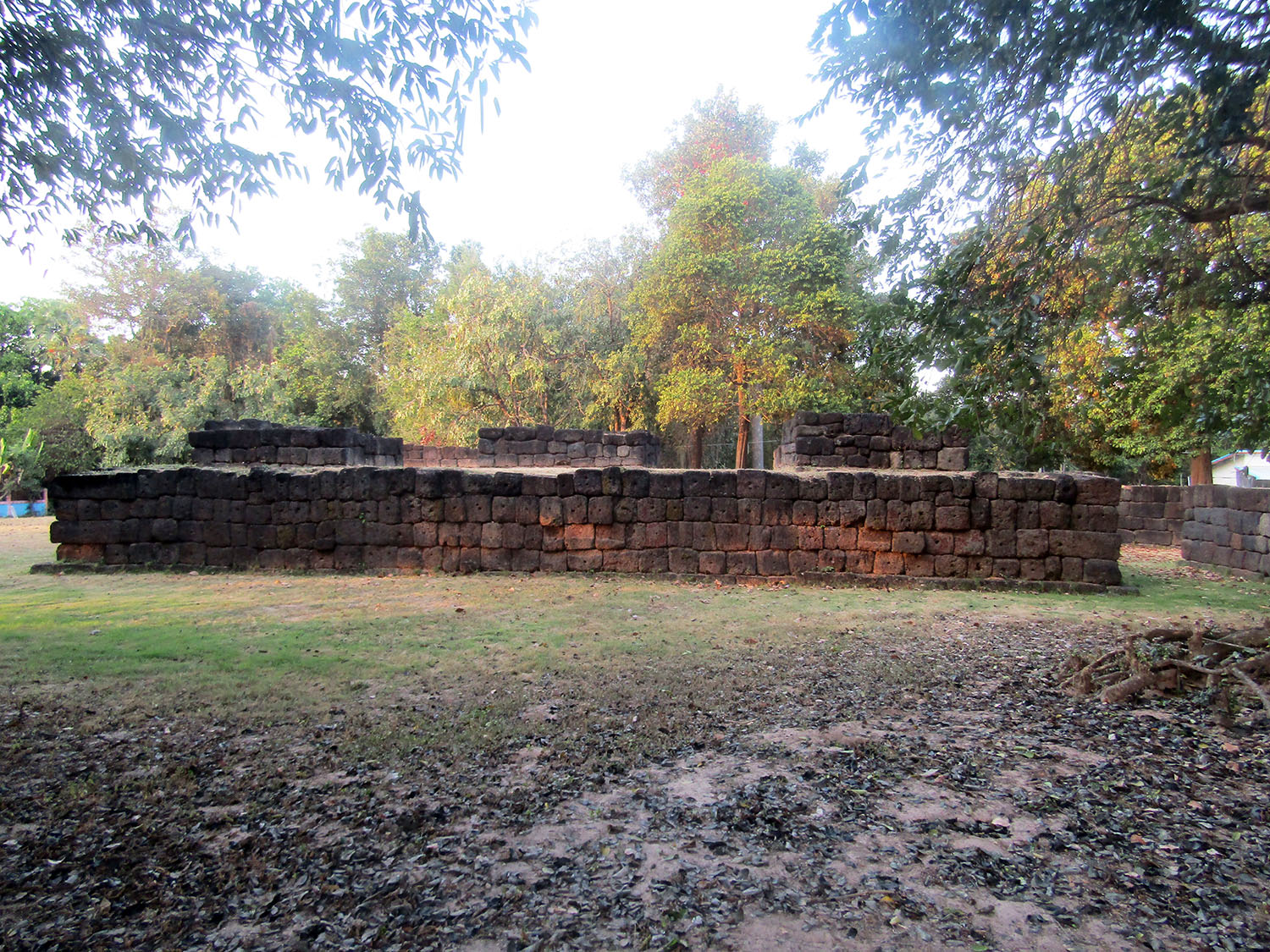
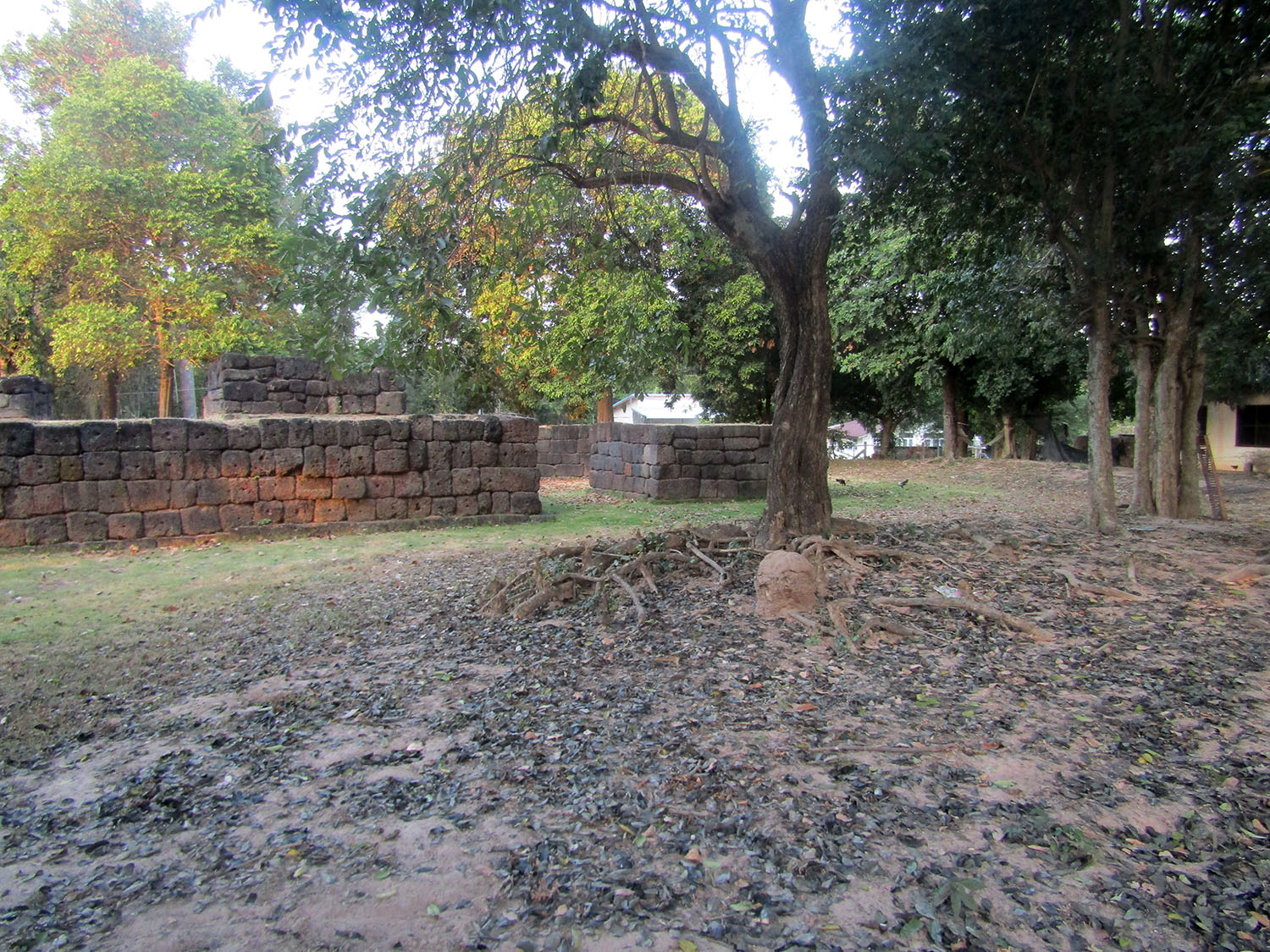 Ku Pon Wit, Kaset Wisai District, Roi-Et Province
Ku Pon Wit, Kaset Wisai District, Roi-Et Province
At 5pm there’s not much more than a half hour’s daylight left and I was hoping to reach another ancient site by the end of the day. It means traveling east to the next district Sawanaphum, 20 minutes away.
Ku Phra Kona……..At Ku Phra Kona there are three east-facing brick towers situated on a laterite base in a north-south direction enclosed by a wall containing an entrance gate or Gopura on each of the four cardinal points. The towers themselves were adapted from their original state. The central tower was coated in stucco and reconstructed in tiers, each with niches containing Buddha images on the four cardinal points. The pediments of the northern tower depict a scene from the Ramayana epic whereas the lintel above the front was carved to display the reclining Vishnu while the western lintel which lies on the ground shows the God Visnu on his mount, the Garuda. The lintel above the northern false door of the southern tower displays a divinity sitting on the head of a Kala. It is apparent from the pediment and lintels that this sanctuary was constructed in the Baphuon style of Khmer art dating from the 11th century.
The information board at the site is the older Tourist Authority of Thailand (TAT) board the type of which I have had to use in a number of occasions. This suggests that no recent excavations have been done at the site or any attempt at restoration.
Ku Phra Kona……..At Ku Phra Kona there are three east-facing brick towers situated on a laterite base in a north-south direction enclosed by a wall containing an entrance gate or Gopura on each of the four cardinal points. The towers themselves were adapted from their original state. The central tower was coated in stucco and reconstructed in tiers, each with niches containing Buddha images on the four cardinal points. The pediments of the northern tower depict a scene from the Ramayana epic whereas the lintel above the front was carved to display the reclining Vishnu while the western lintel which lies on the ground shows the God Visnu on his mount, the Garuda. The lintel above the northern false door of the southern tower displays a divinity sitting on the head of a Kala. It is apparent from the pediment and lintels that this sanctuary was constructed in the Baphuon style of Khmer art dating from the 11th century.
The information board at the site is the older Tourist Authority of Thailand (TAT) board the type of which I have had to use in a number of occasions. This suggests that no recent excavations have been done at the site or any attempt at restoration.

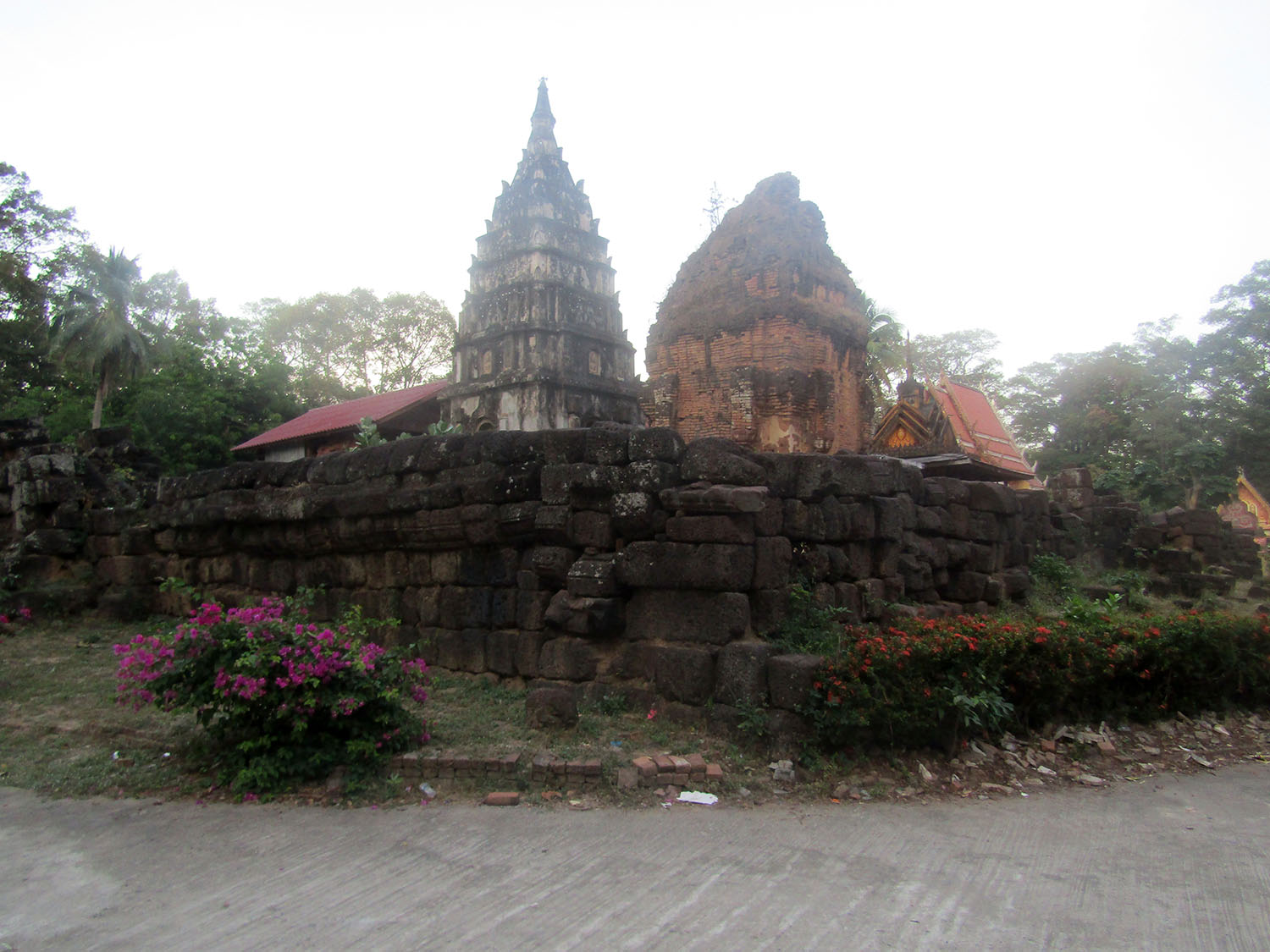
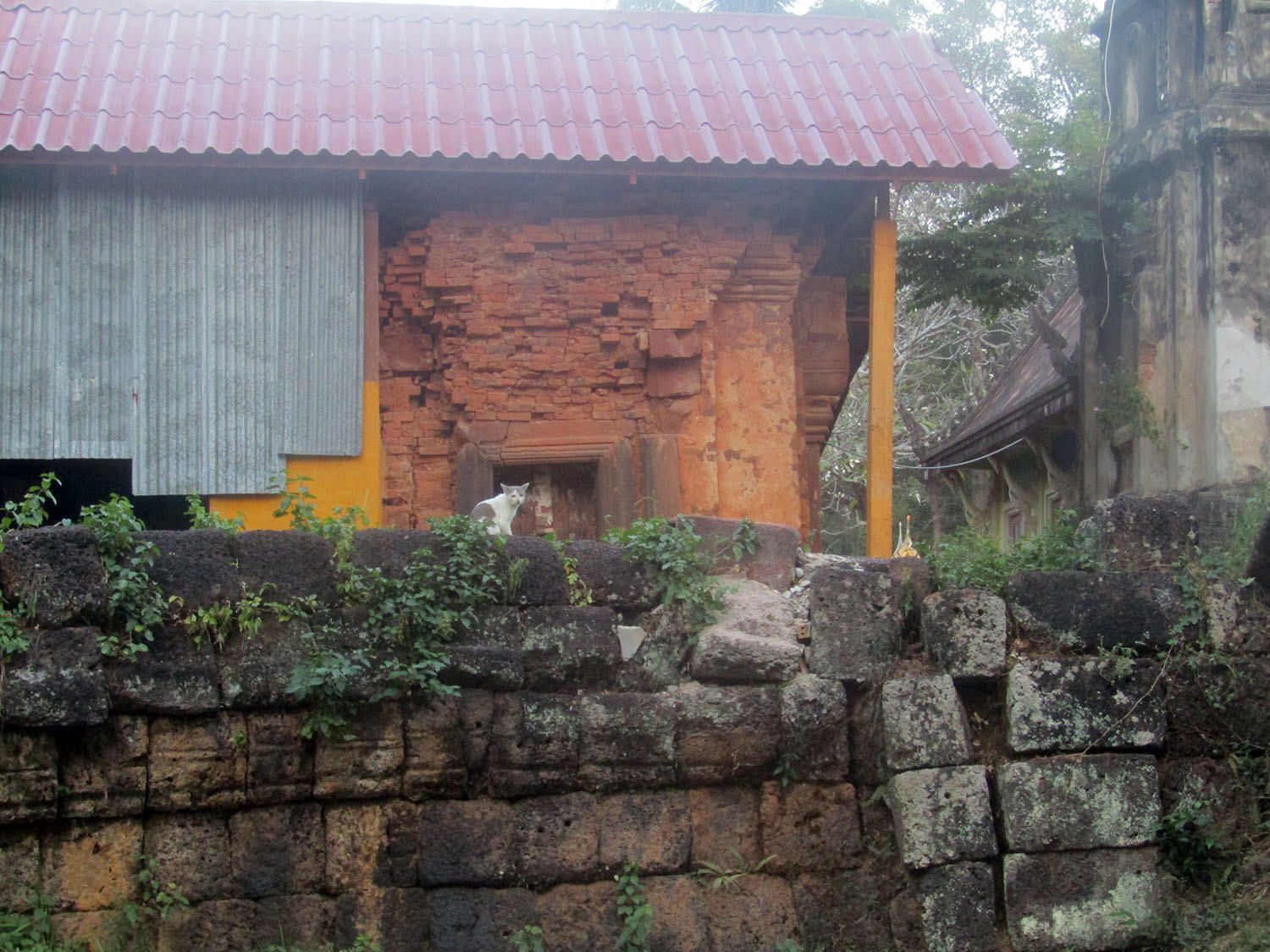
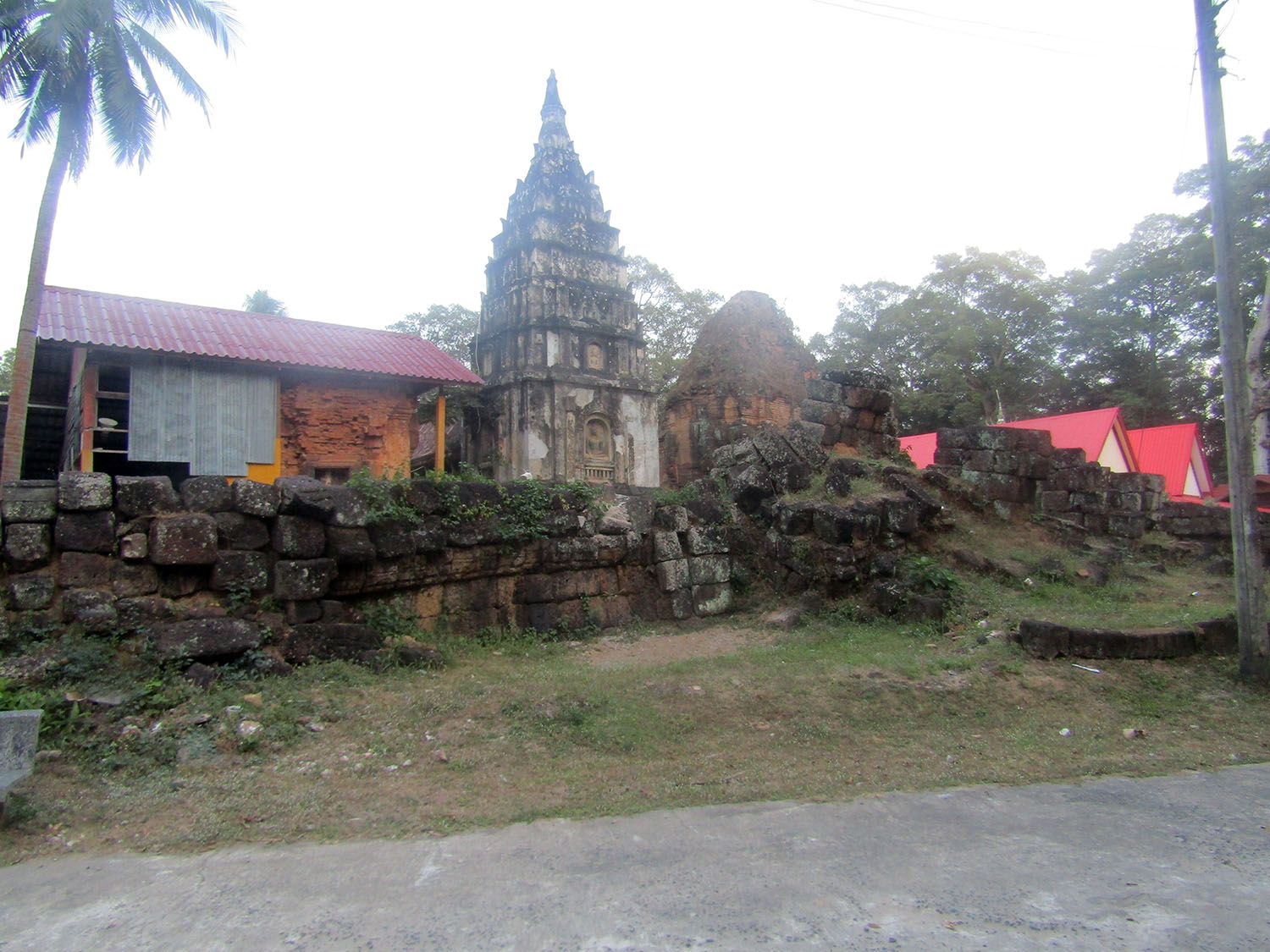
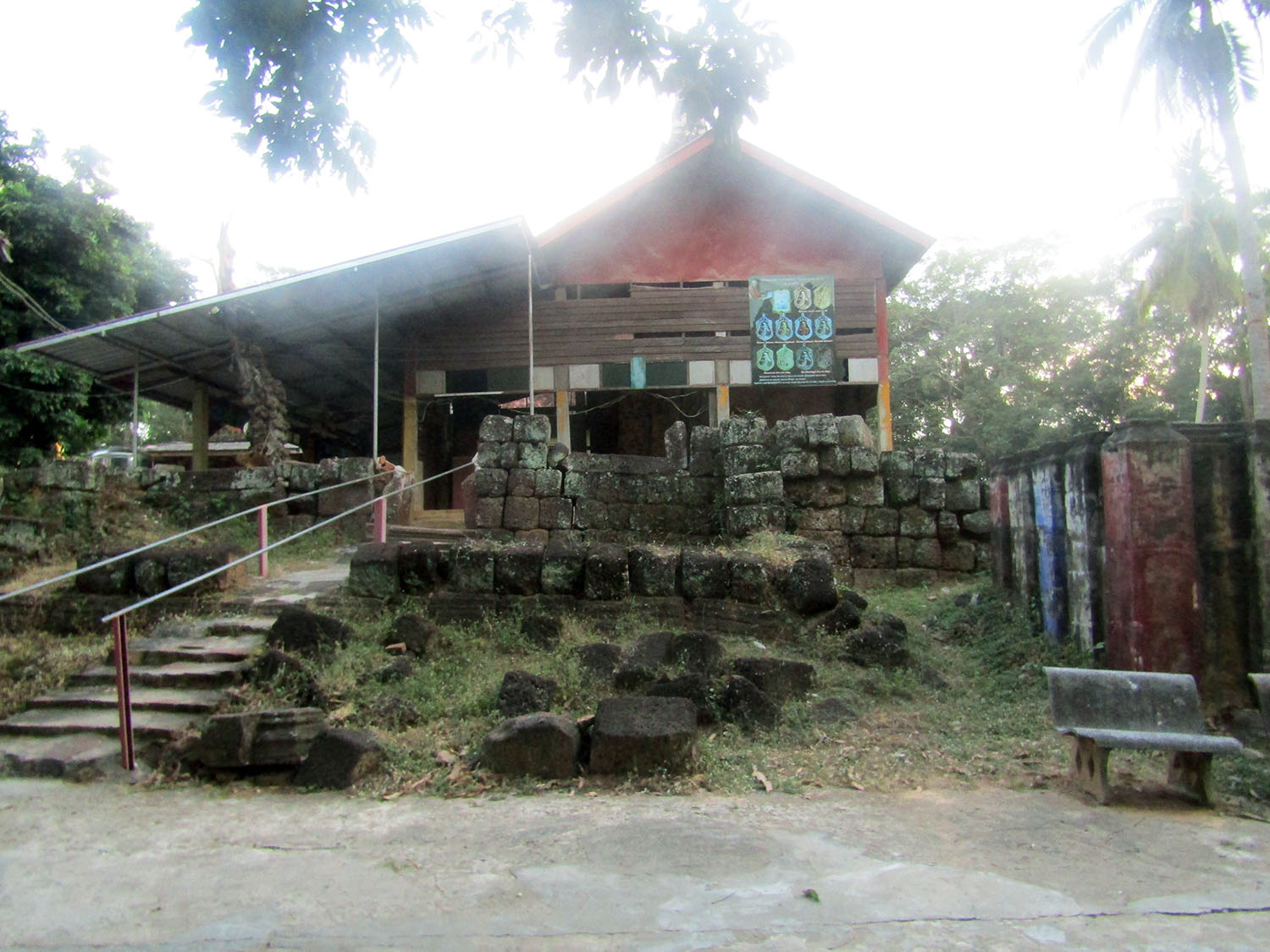
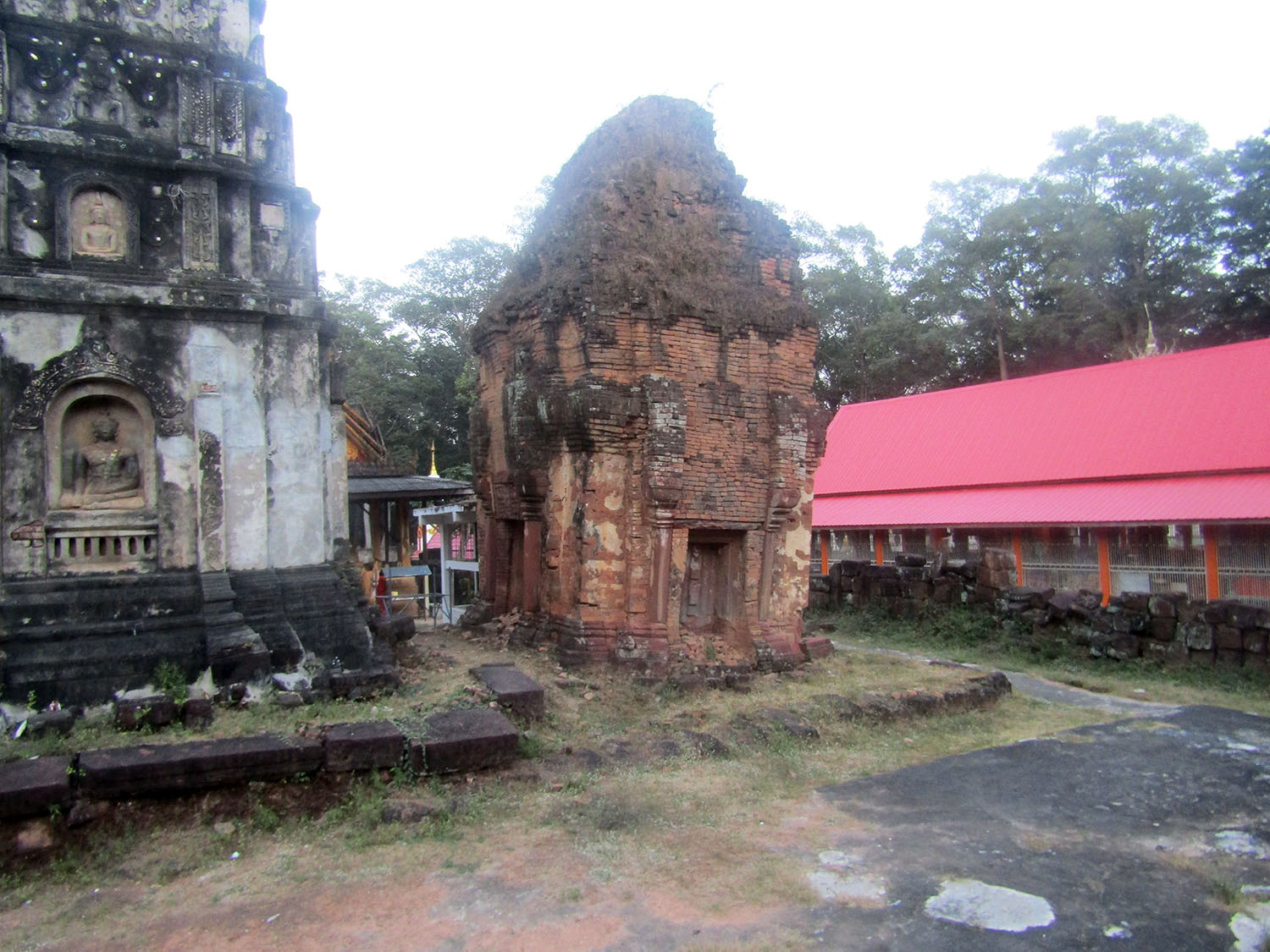 Ku Phra Kona, Sawanaphum District, Roi-Et Province
Ku Phra Kona, Sawanaphum District, Roi-Et Province
Compromised……..On previous tours, I have tried to identify accommodation in advance and call ahead where possible. On this tour that idea has been abandoned. Where we have fixed accommodation in advance it has compromised the tour. It just doesn’t work if you can’t be sure where you will end up in the evening. The only answer is to check-in at the nearest town and ask local people. It’s a clear example of an instance where technology can’t be applied, simply due to lack of data. Most towns have perfectly adequate accommodation, it’s just that people prefer to stay in the cities where there are far more conveniences. Accordingly, accommodation away from the cities goes under the radar and if listed on Google Map, is often only in Thai and does not show up on local searches. When arriving at a destination in the dark the first thing you need is reliable information.
Premium Resort……..On this occasion, we stop in the local town of Suwanaphum, not to be confused with Suvarnaphumi Airport as online searches suggest. At a roadside noodle shop we take a most basic dinner and ask about accommodation, At least when we find it, we won’t have to go out again. Just a couple of kilometres west of town on the main road is Premium Resort.
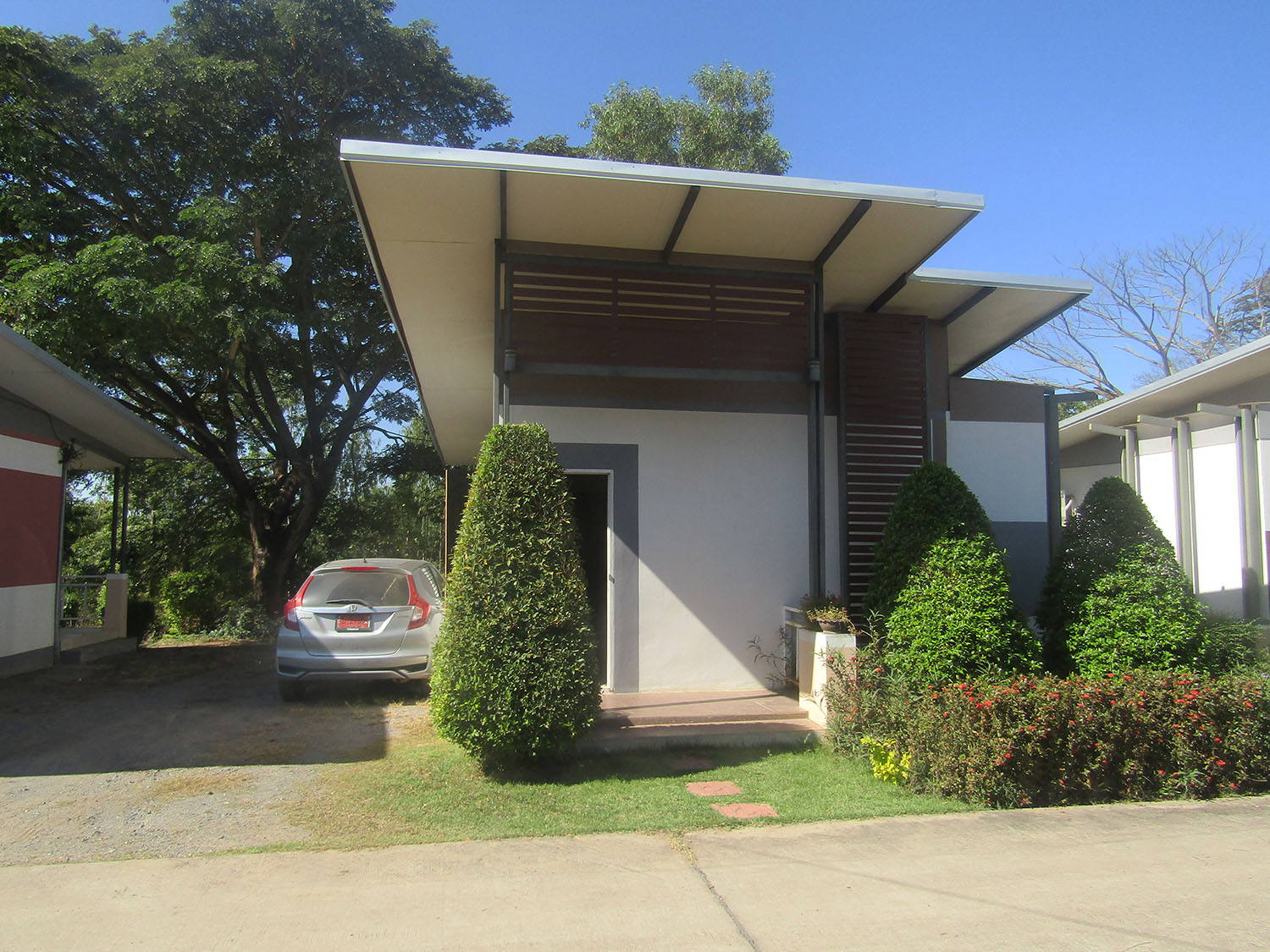
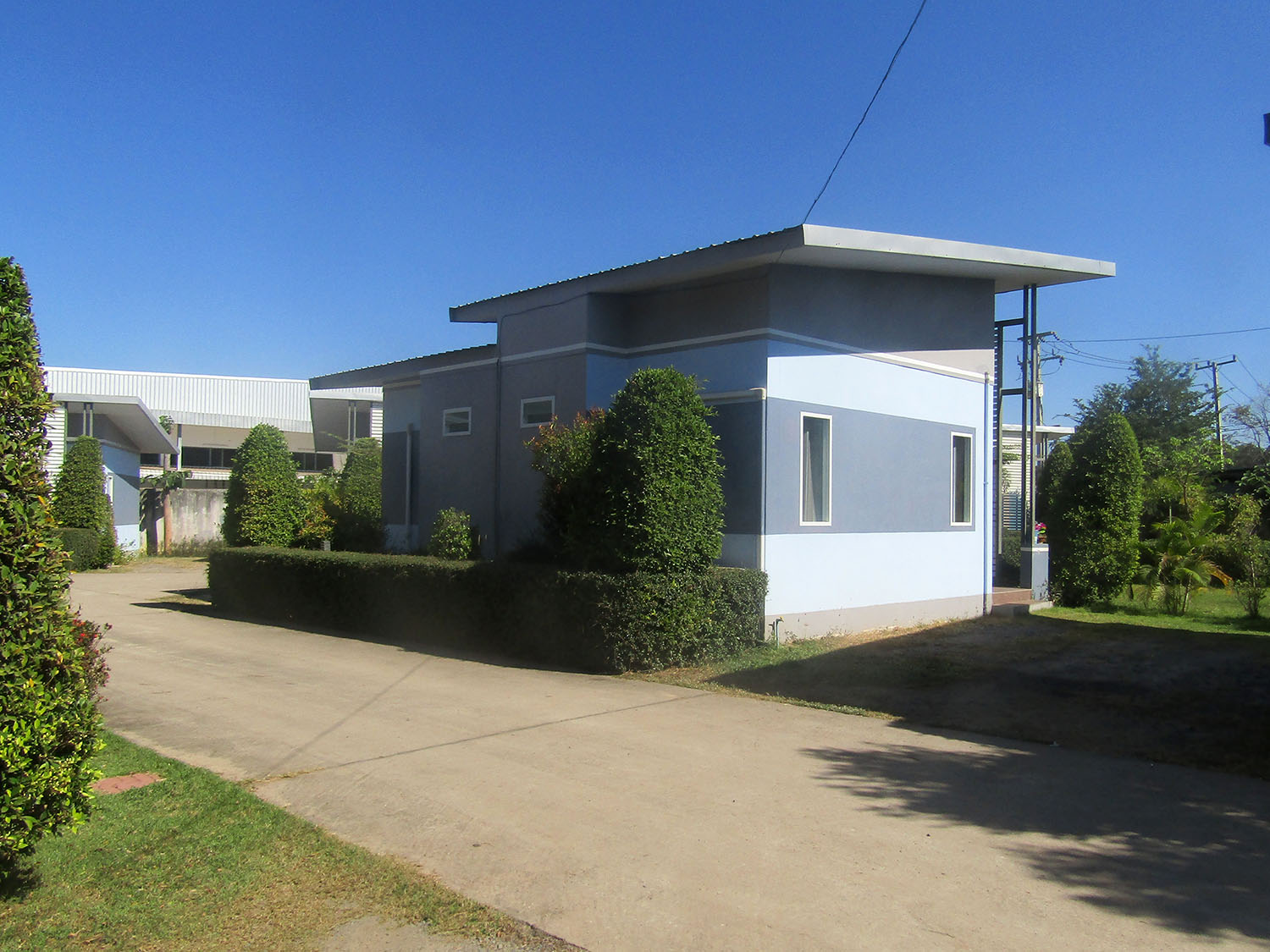
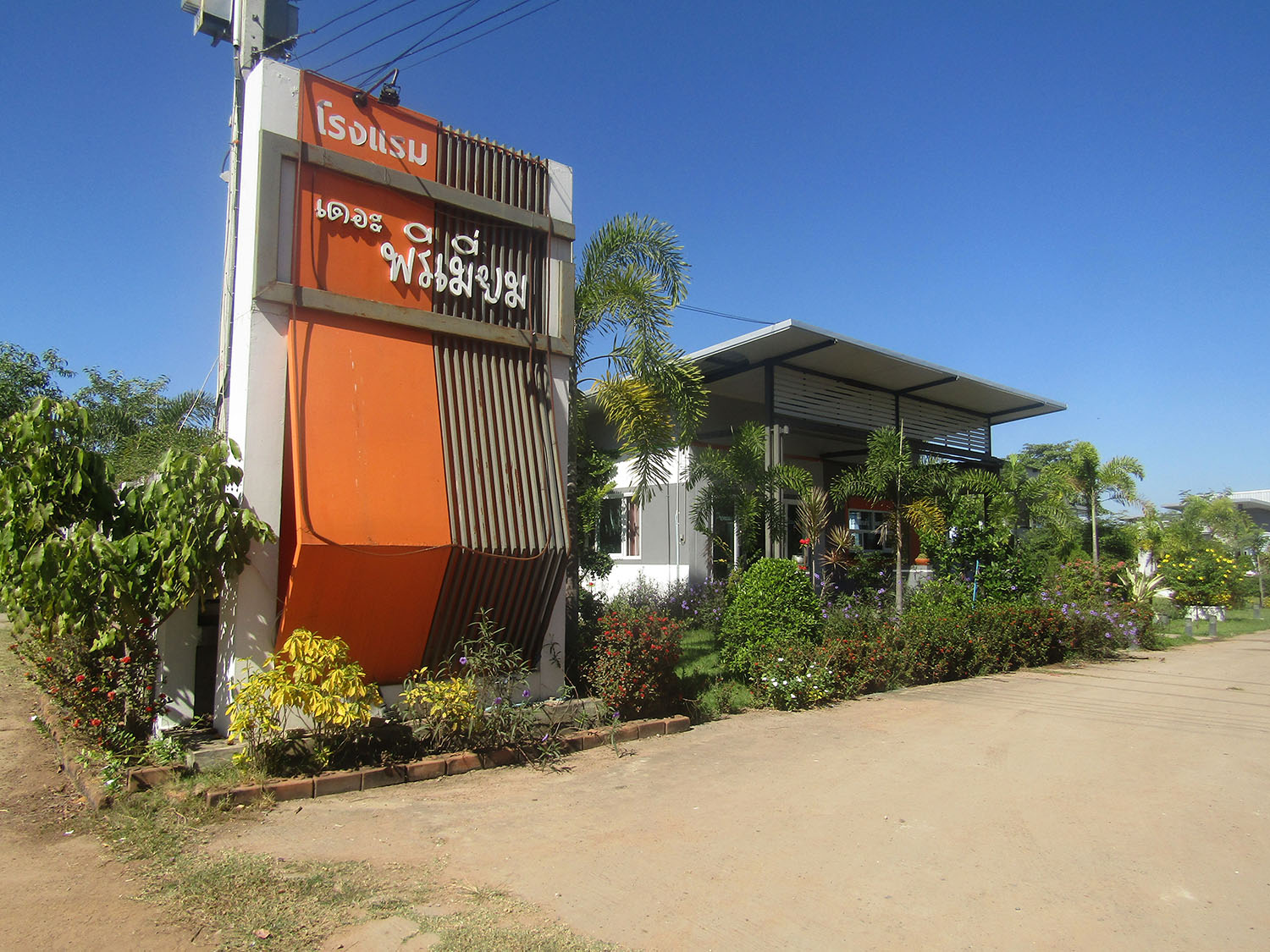 Premium Resort, Sawanaphum, Roi-Et Province
Premium Resort, Sawanaphum, Roi-Et Province
Premium Resort consists of a series of modern style bungalows but inside there are limitations. As I set to work on my blog I’m obliged to use a glass-topped table at the foot of the bed as the plug sockets are in the wrong place. A further inconvenience is that the shower rose support is broken. Clearly despite the pleasing outward appearance, a little attention to the interior would help a lot. Next Page.